Detailed explanation of flower arrangement knowledge, so you can say goodbye to zero basics
With the improvement of living standards, people pay more and more attention to personal spiritual consumption, and the demand for flowers is growing.
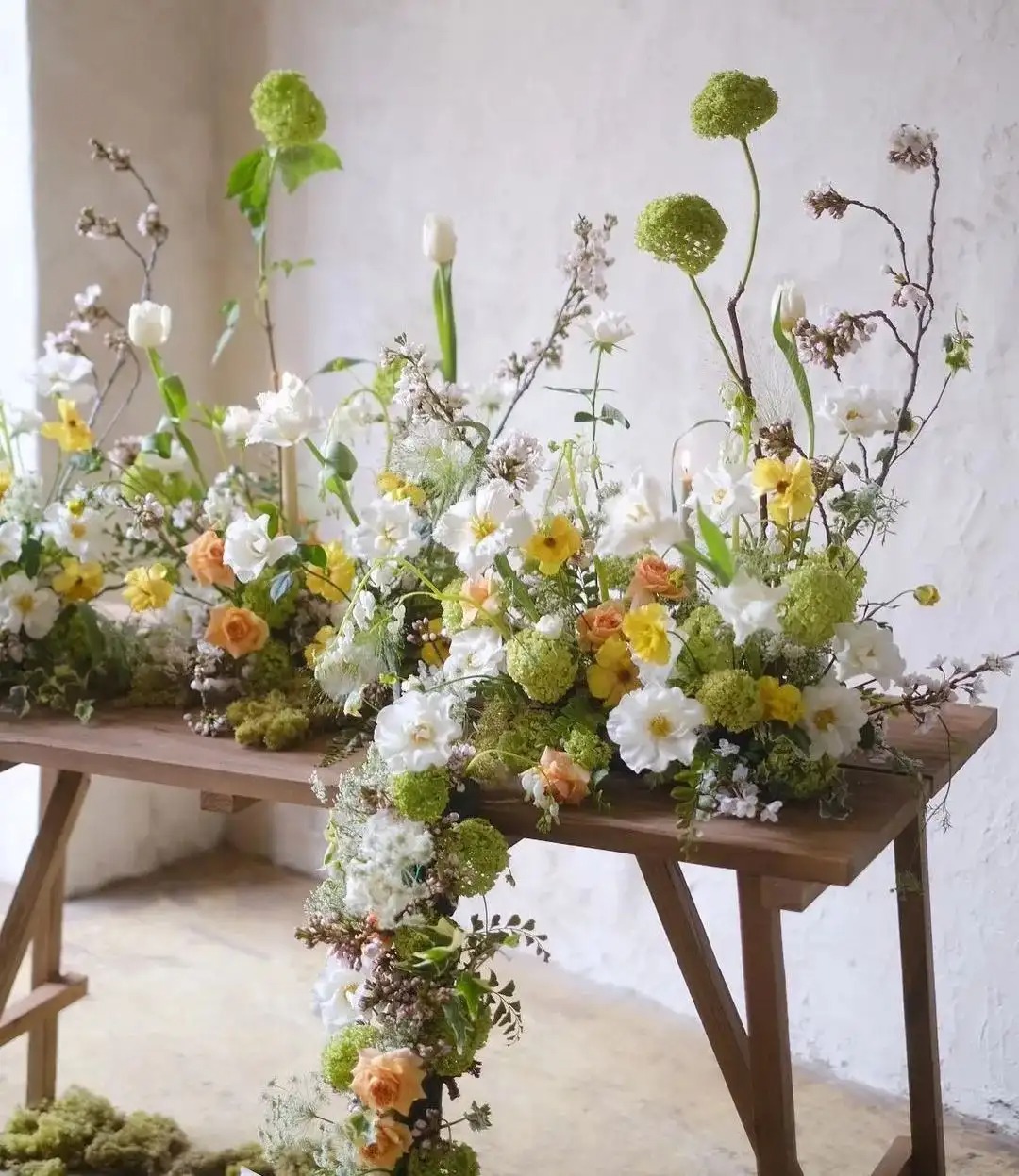
Flower lovers began to learn flower arrangement. Flower arrangement is like painting, and there are many things to pay attention to. For example, the choice of flower variety, color, and shape will have a certain impact on the final product.
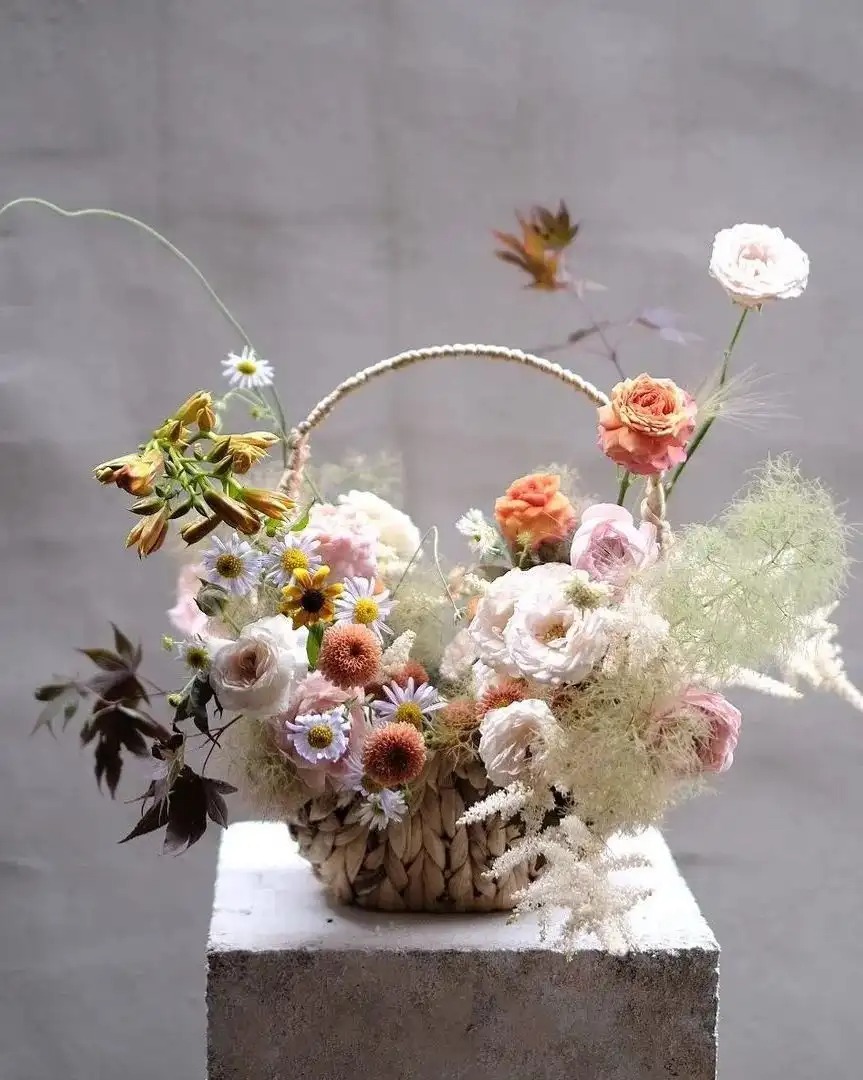
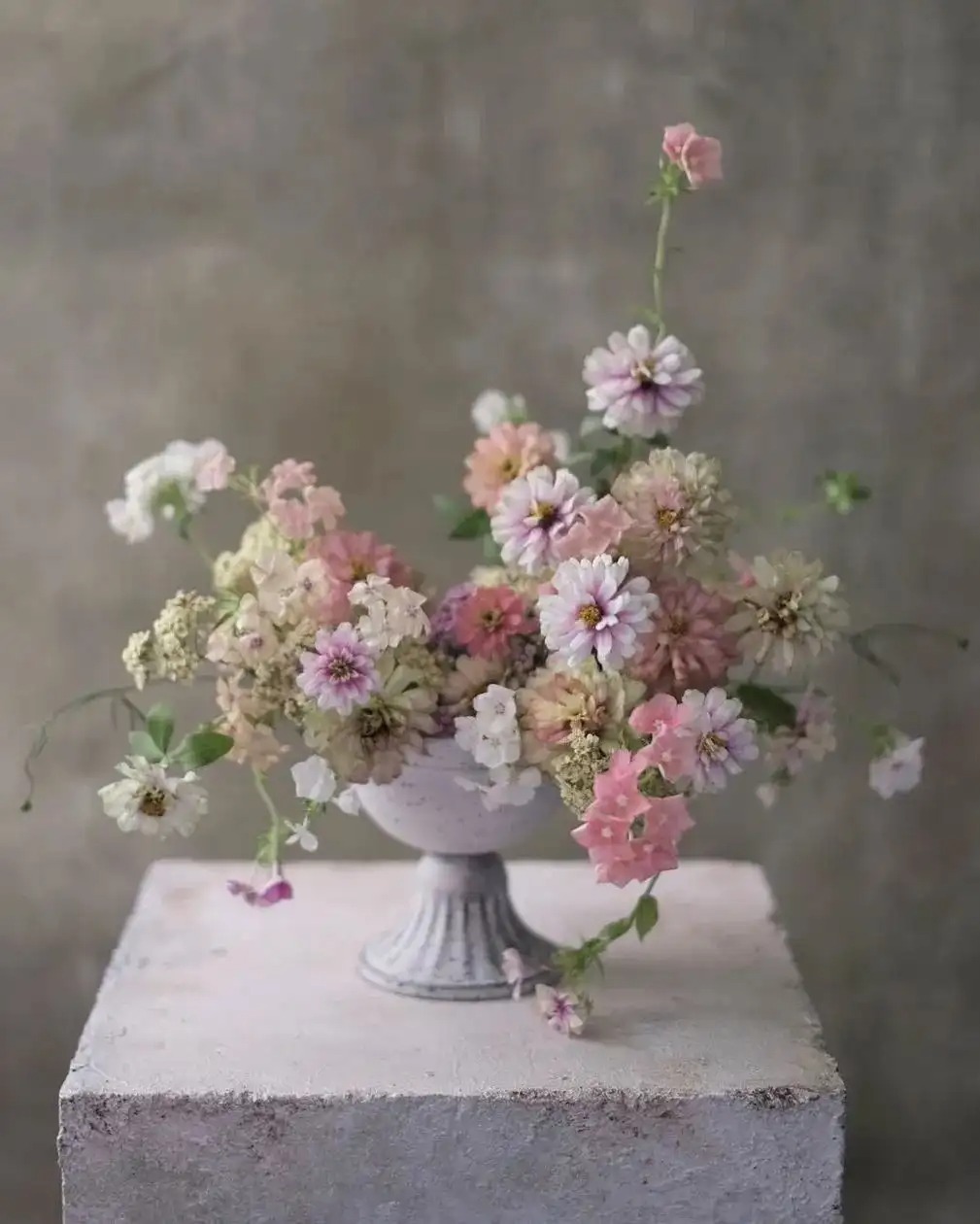
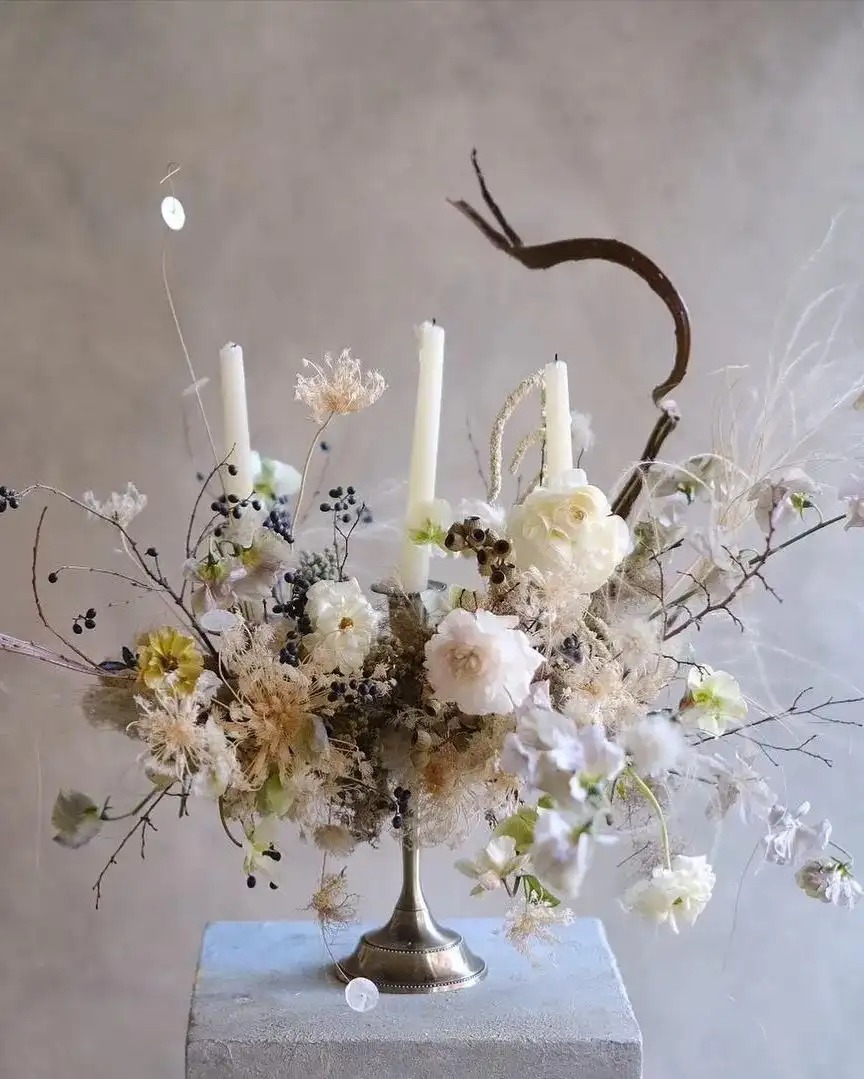
For a beginner in flower arrangement, how can one create beautiful works?
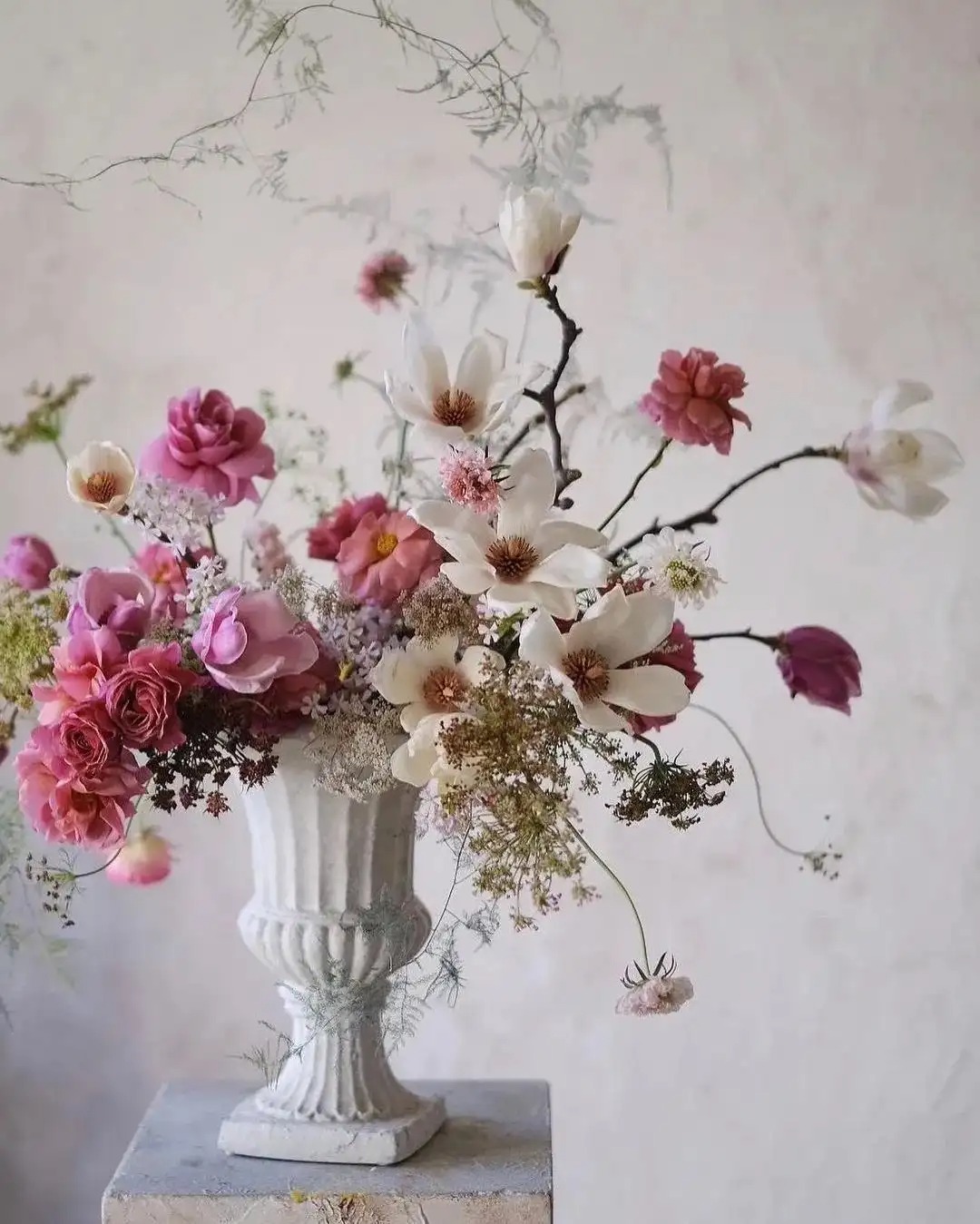
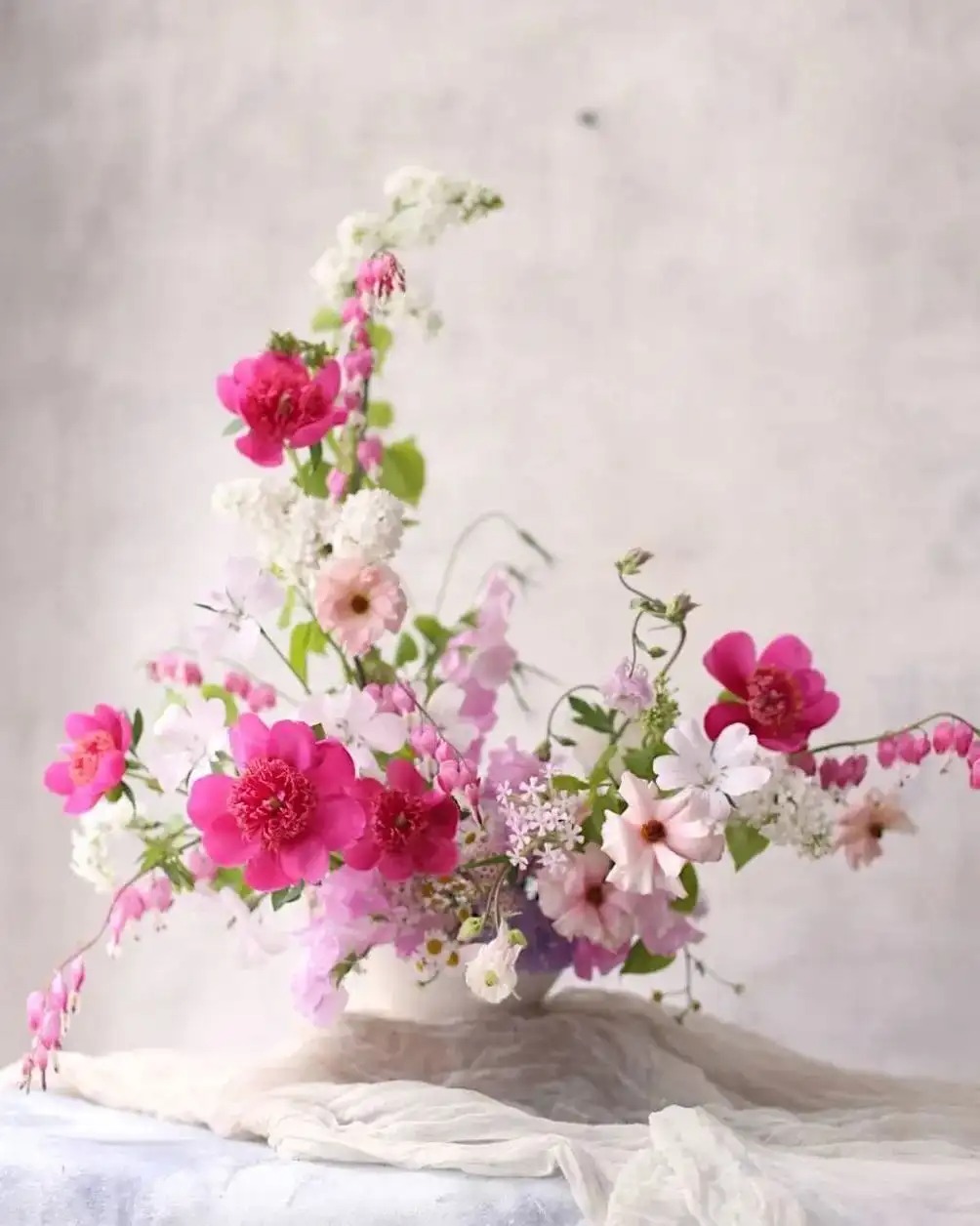
Today's content highlights
1. "Points, lines, and surfaces" in flower arrangement
2. The eight principles of flower arrangement
3. The basic layering of flower art works
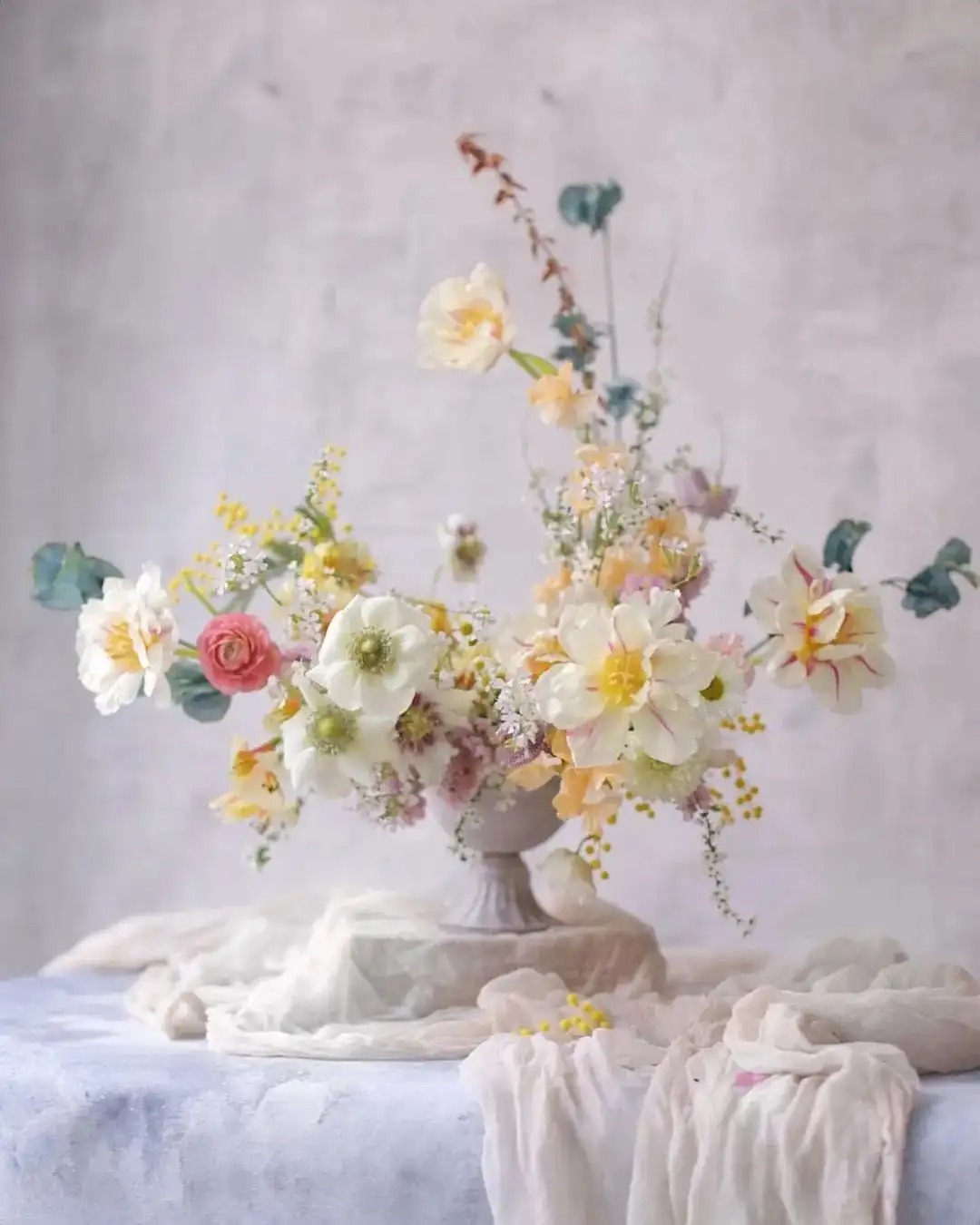
"Points, lines and surfaces" in flower arrangement The first constituent element of flower arrangement is "shape" , that is, the external shape of the work, which is mostly composed of "geometric shapes", such as the common triangle, circle, oval, rectangle, L-shape, S-shape, V-shape and so on.

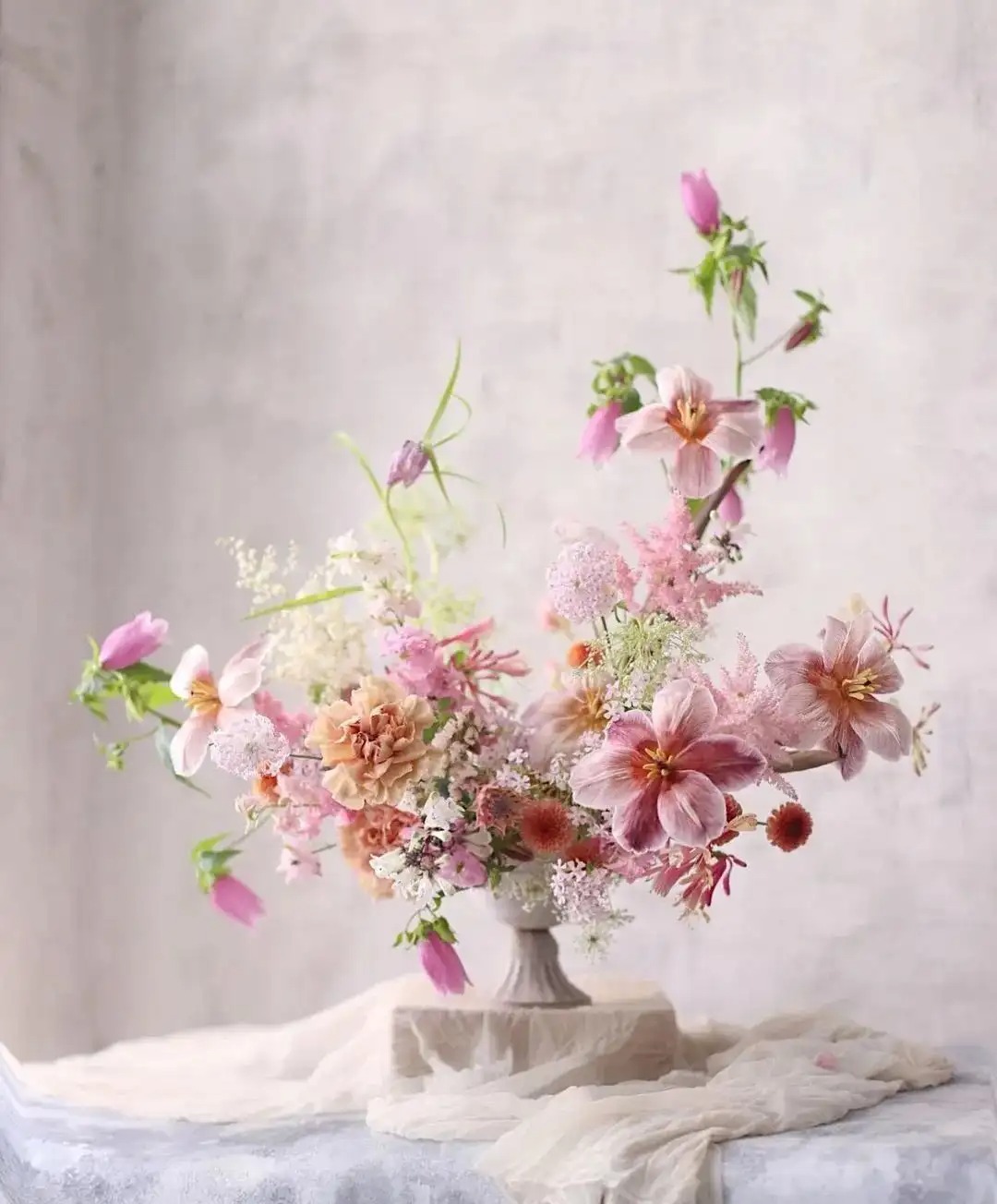
The composition of shapes is the relationship between three elements: points, lines, and surfaces. As we often say, "a line connects two points, multiple lines intersect to form a surface, and multiple surfaces combine to form a body."
So when we arrange flowers, we are arranging a three-dimensional geometric space. Let's learn more about the use of "points, lines, and surfaces".
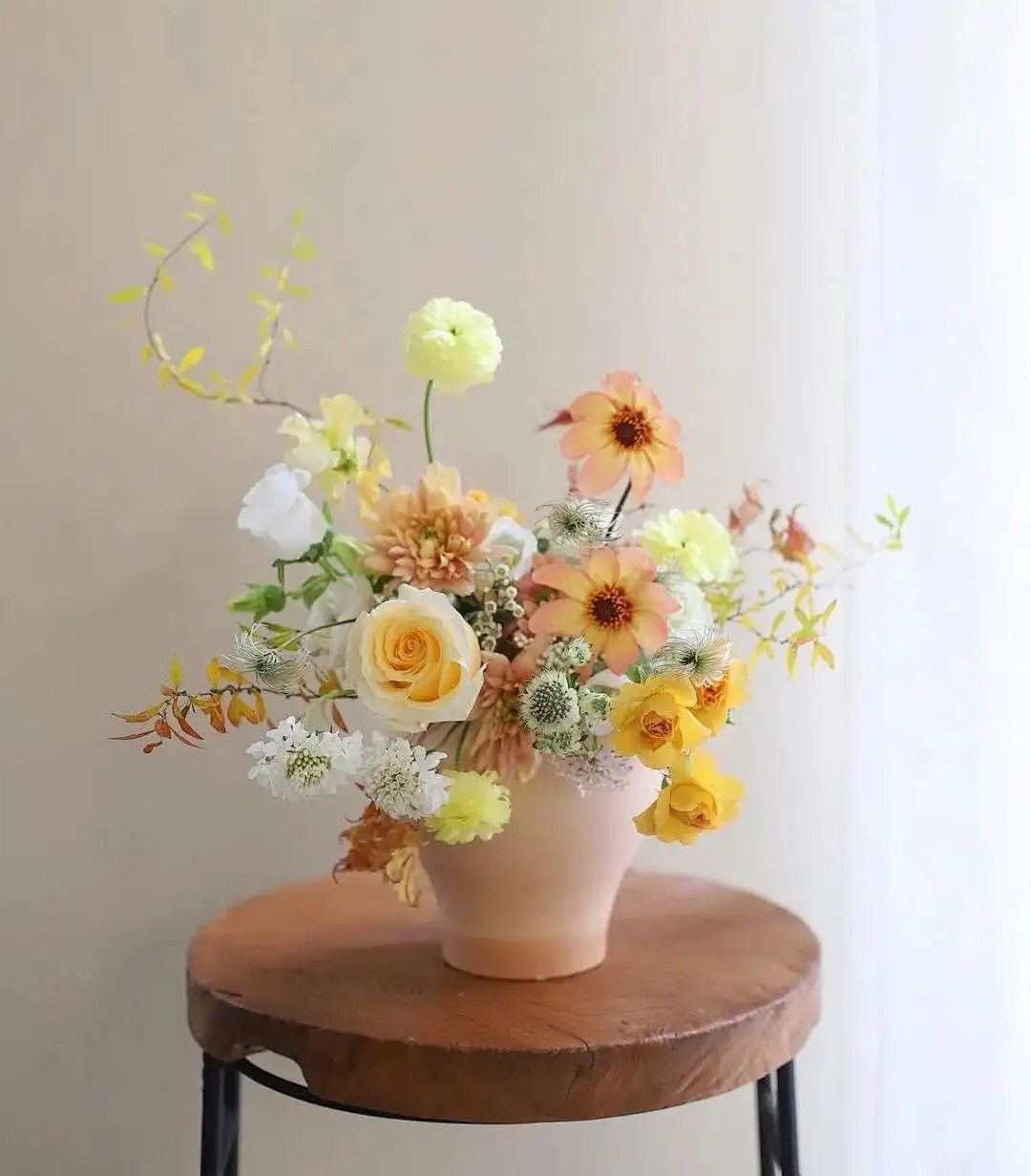
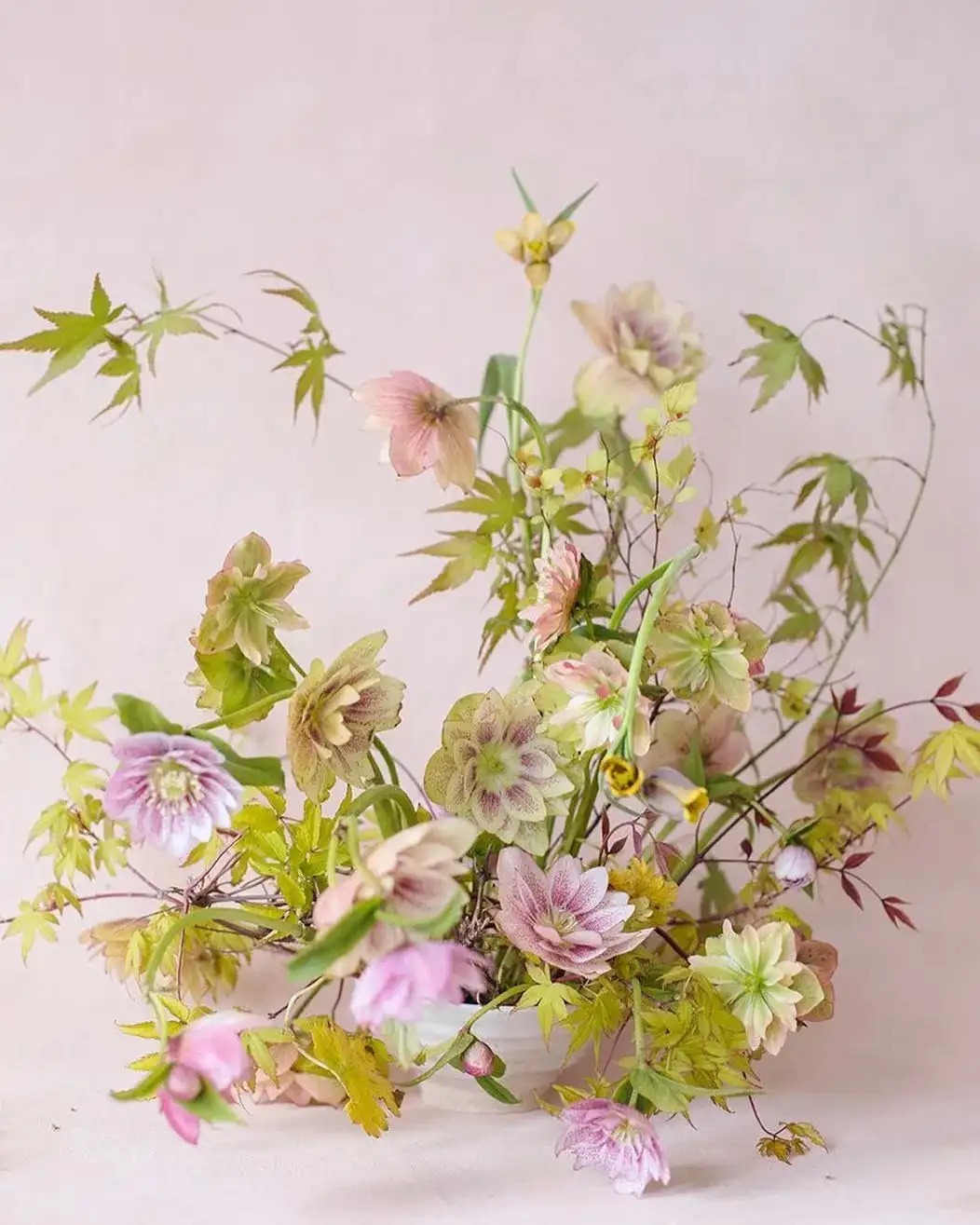
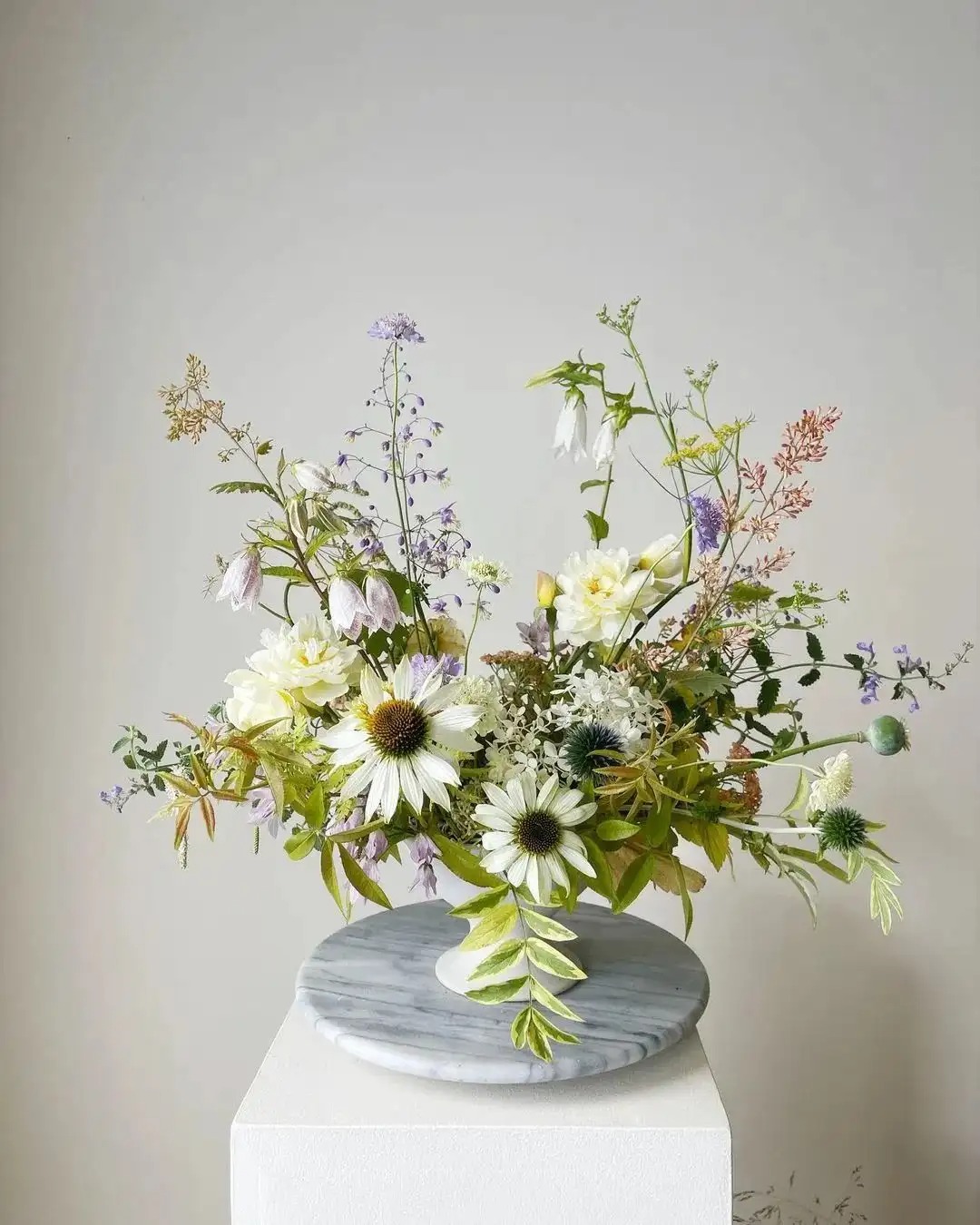
01 The jumping feeling of “point”
In concept, “point” is something round and very small, or the smallest unit of a line; In geometry, it is “something without area”; In form, a point is something we can see, that is, it has a sense of area.
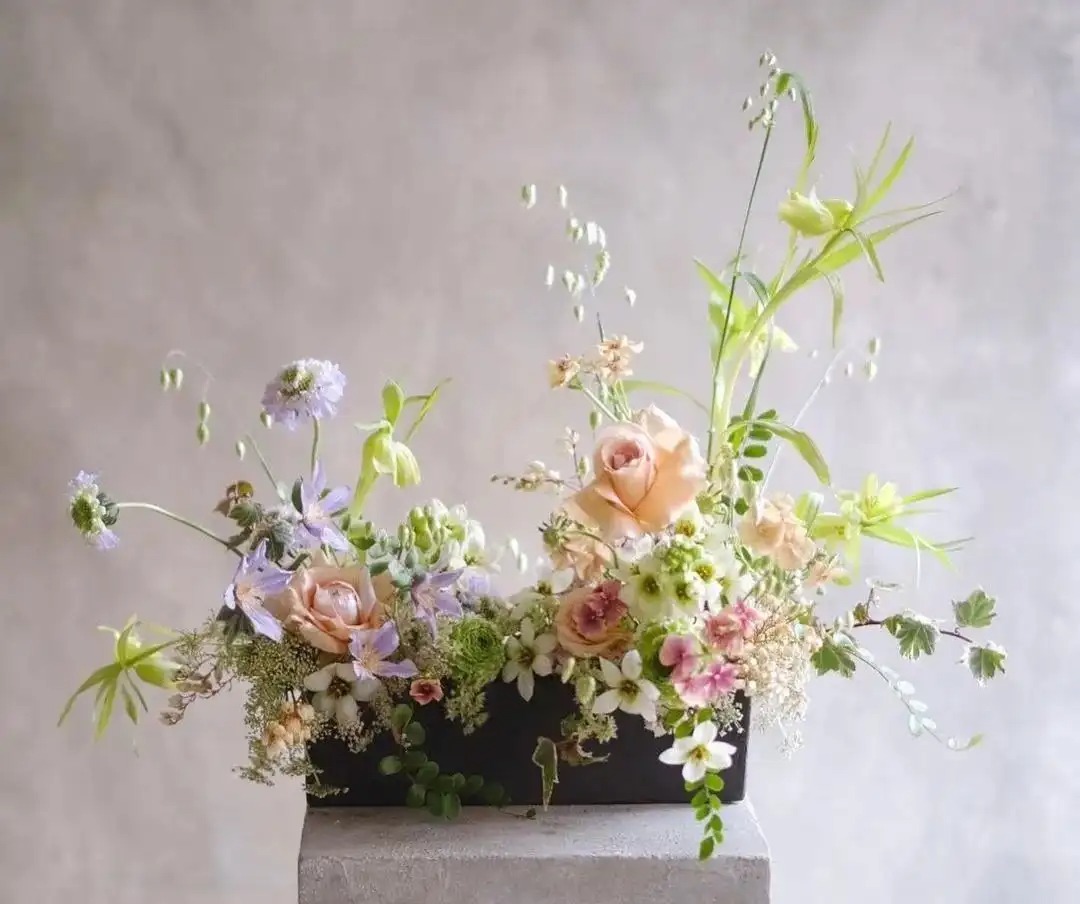
In the art of flower arrangement, the use of points can be divided into gathering and dispersion . The gathering method is to gather various point-shaped flowers together to form a focus, which can focus people's attention.
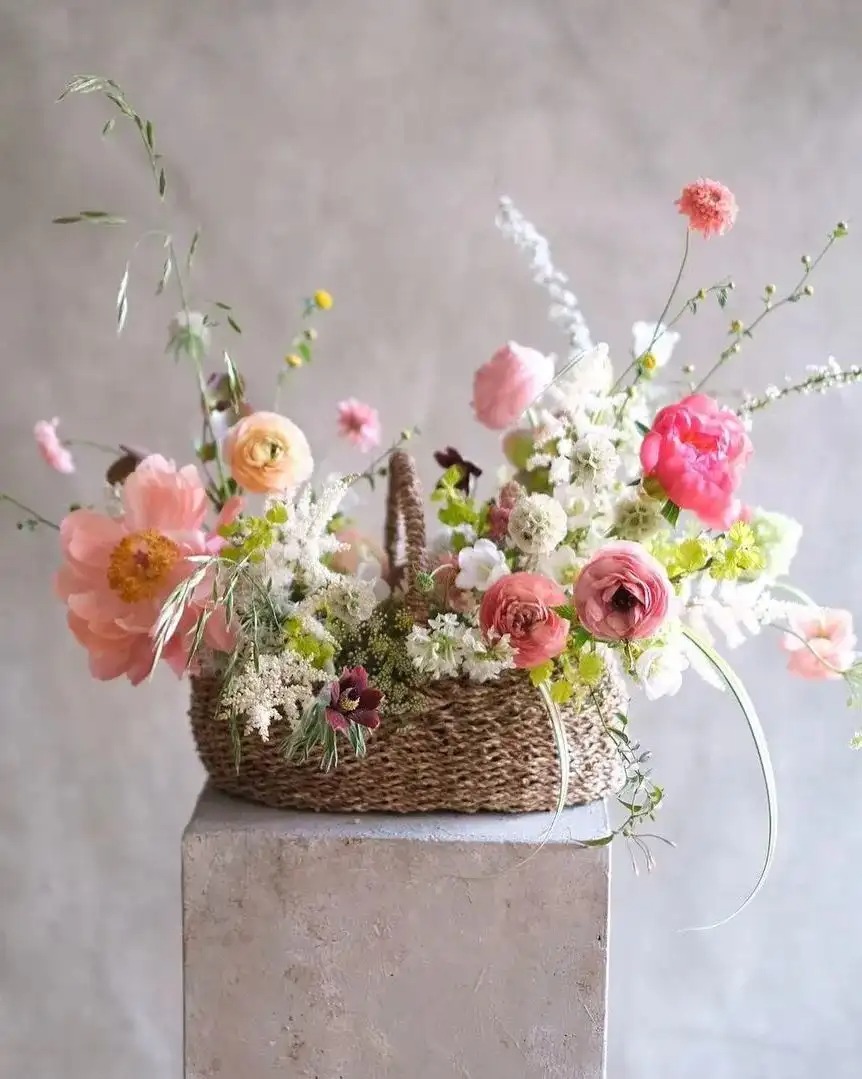
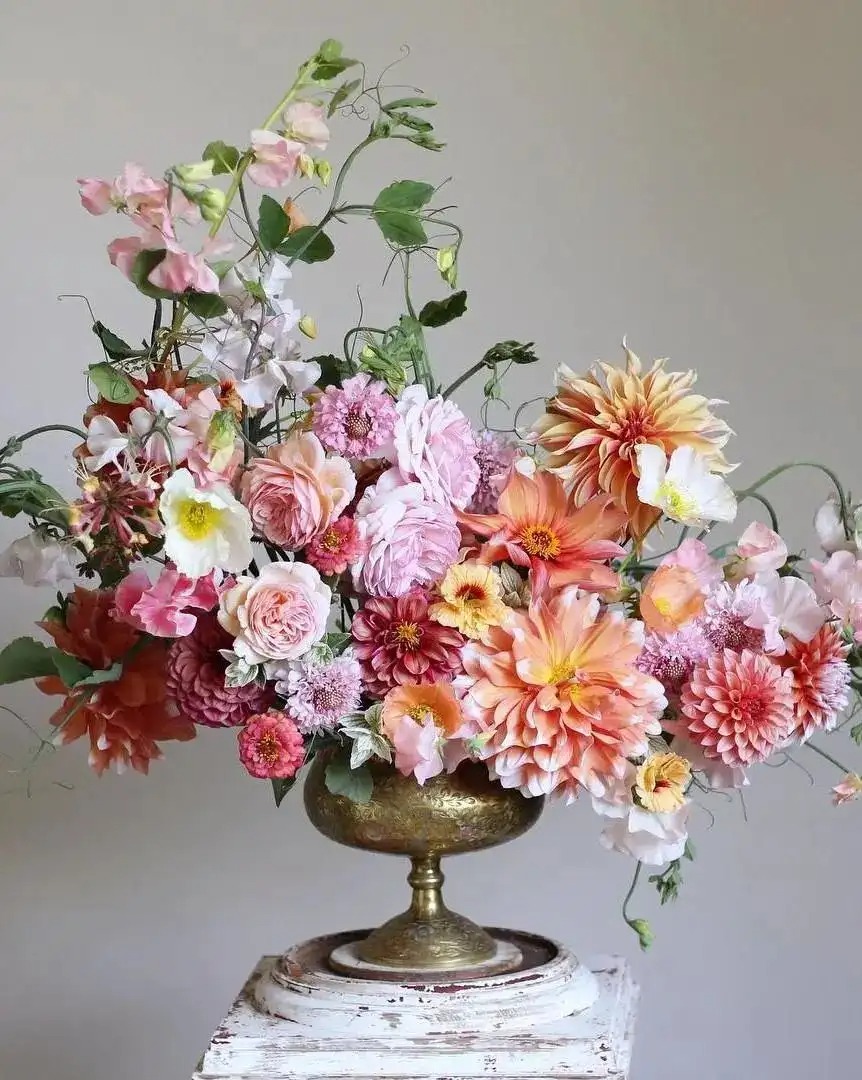
The scattered points have no sense of separation and are a dispersion of the whole, like scattered pearls or a beautiful prose poem.
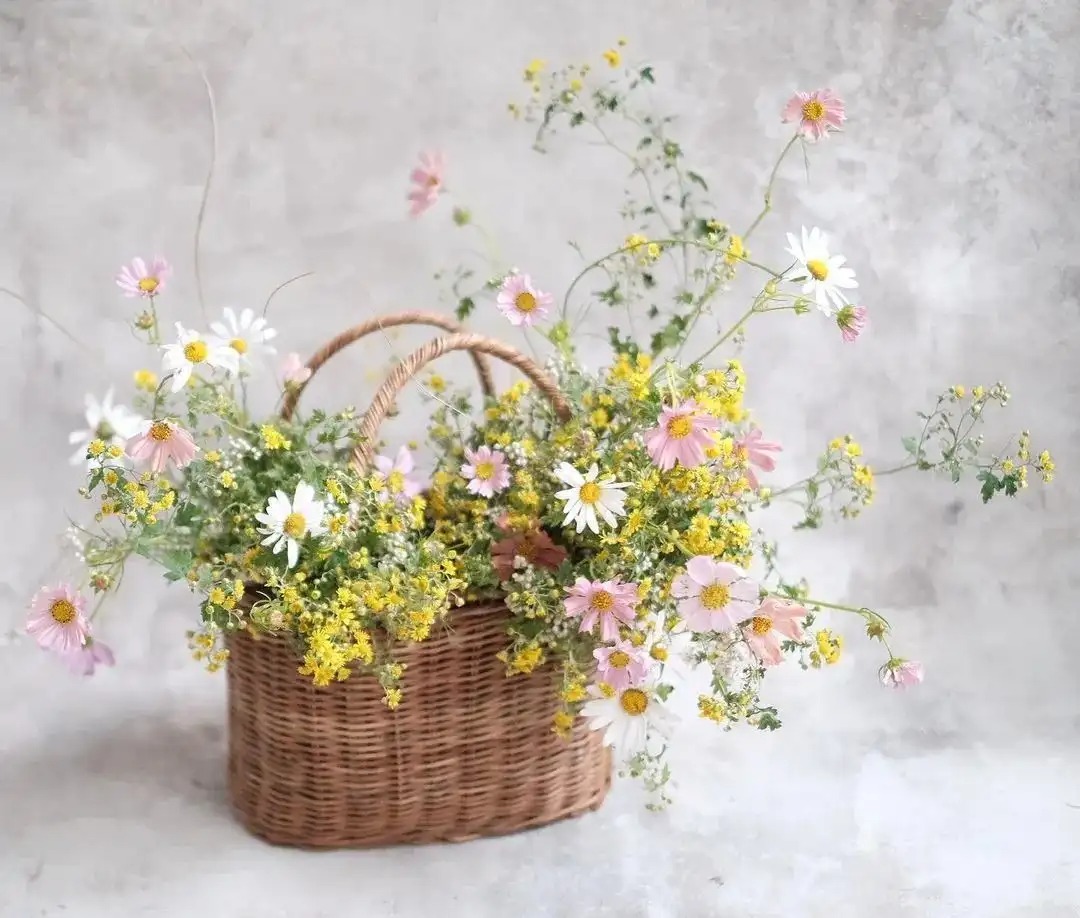
Commonly used flowers for dot flower arrangement: sweetheart, baby's breath, forget-me-not, yellow oriole, chrysanthemum, carnation, geranium, etc. are suitable for the clustered style; more lively flowers such as plum blossom, rose, lisianthus, etc. are suitable for the scattered style.
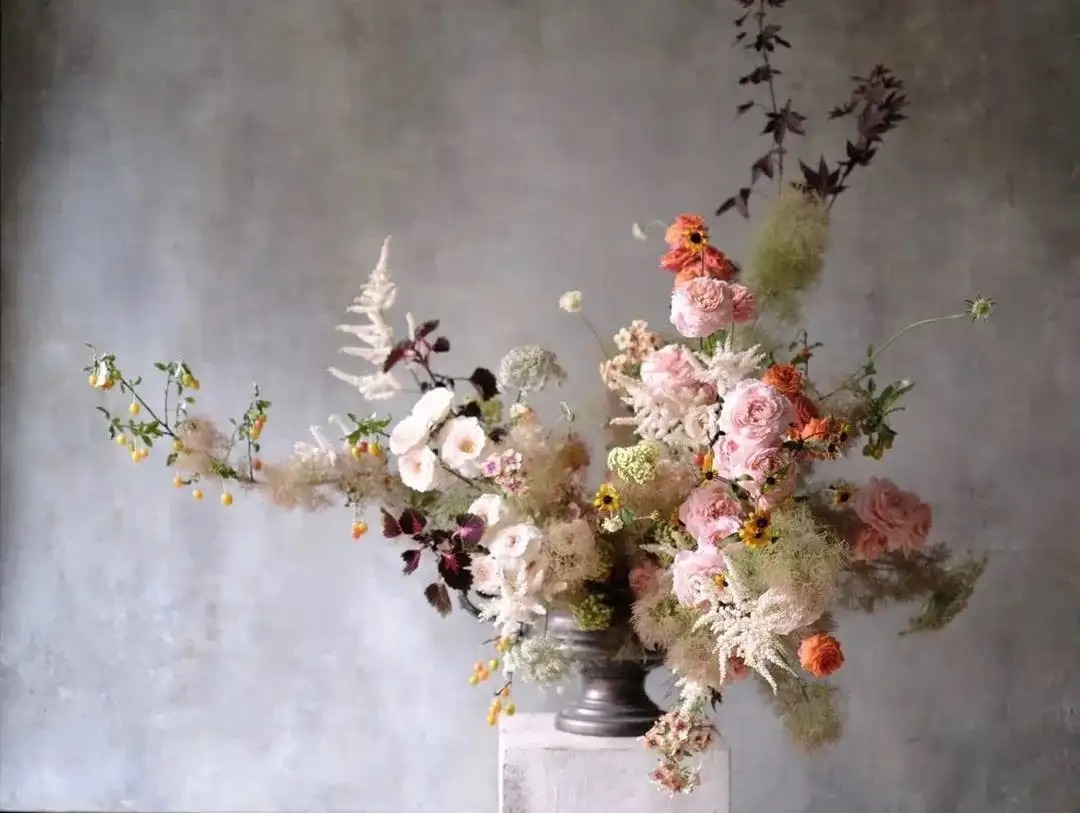
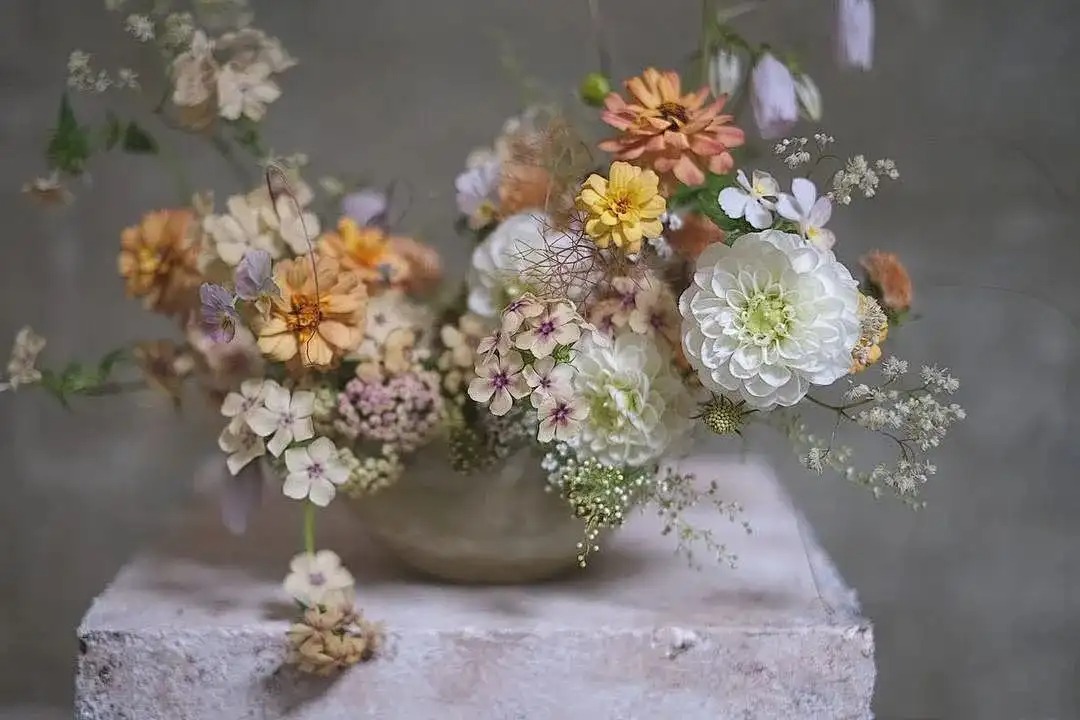
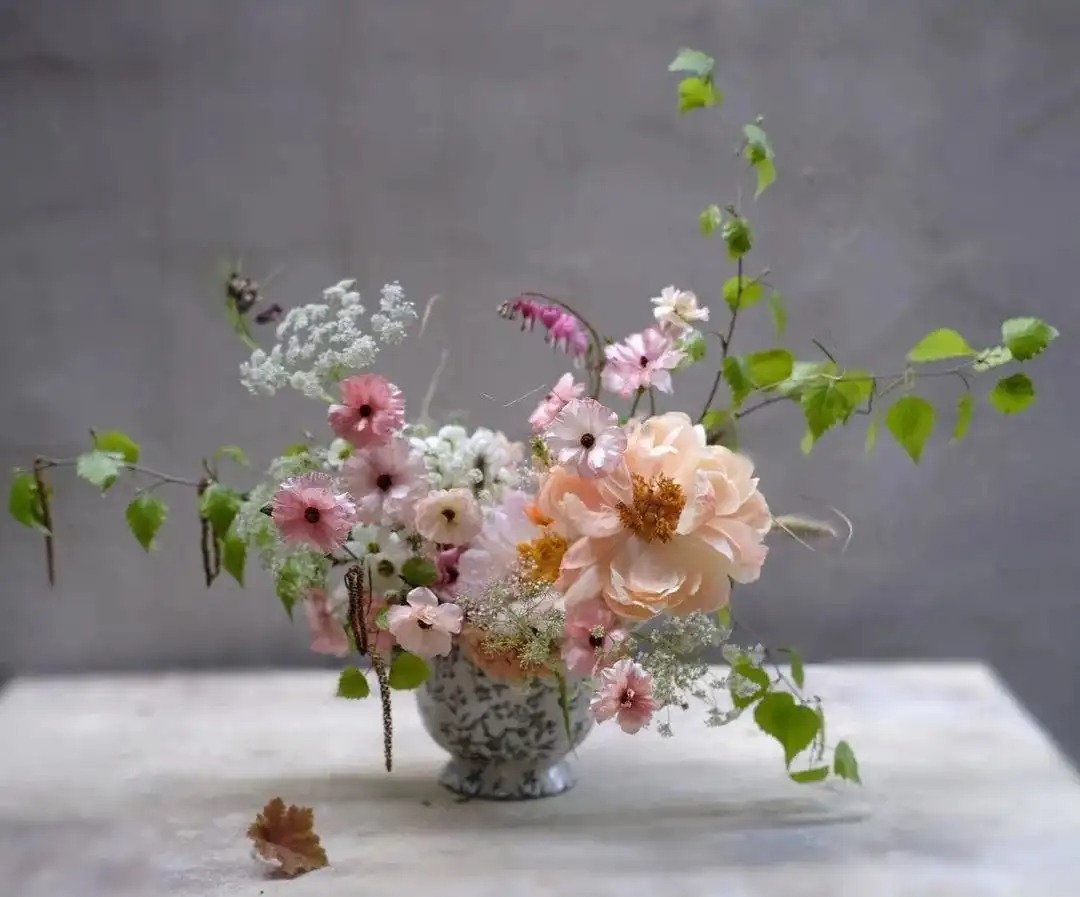
02 The rhythm of “line” “Line” is the moving trajectory of a point, with visual properties such as length, width, direction and spatial character.
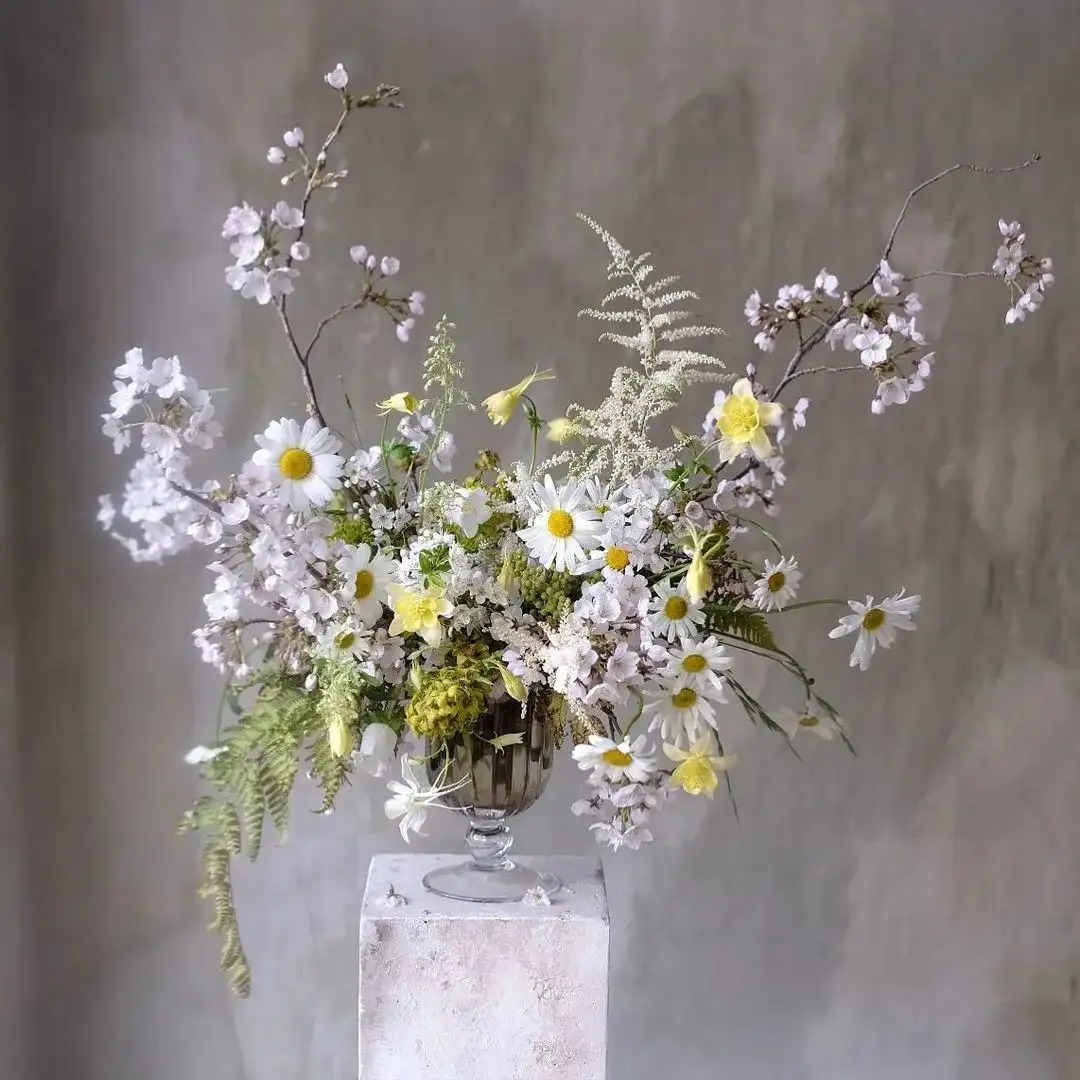
The lines used in flower arrangement art include straight lines and curved lines . The directions include horizontal, vertical, radial, and circular. Each has its own different beauty.
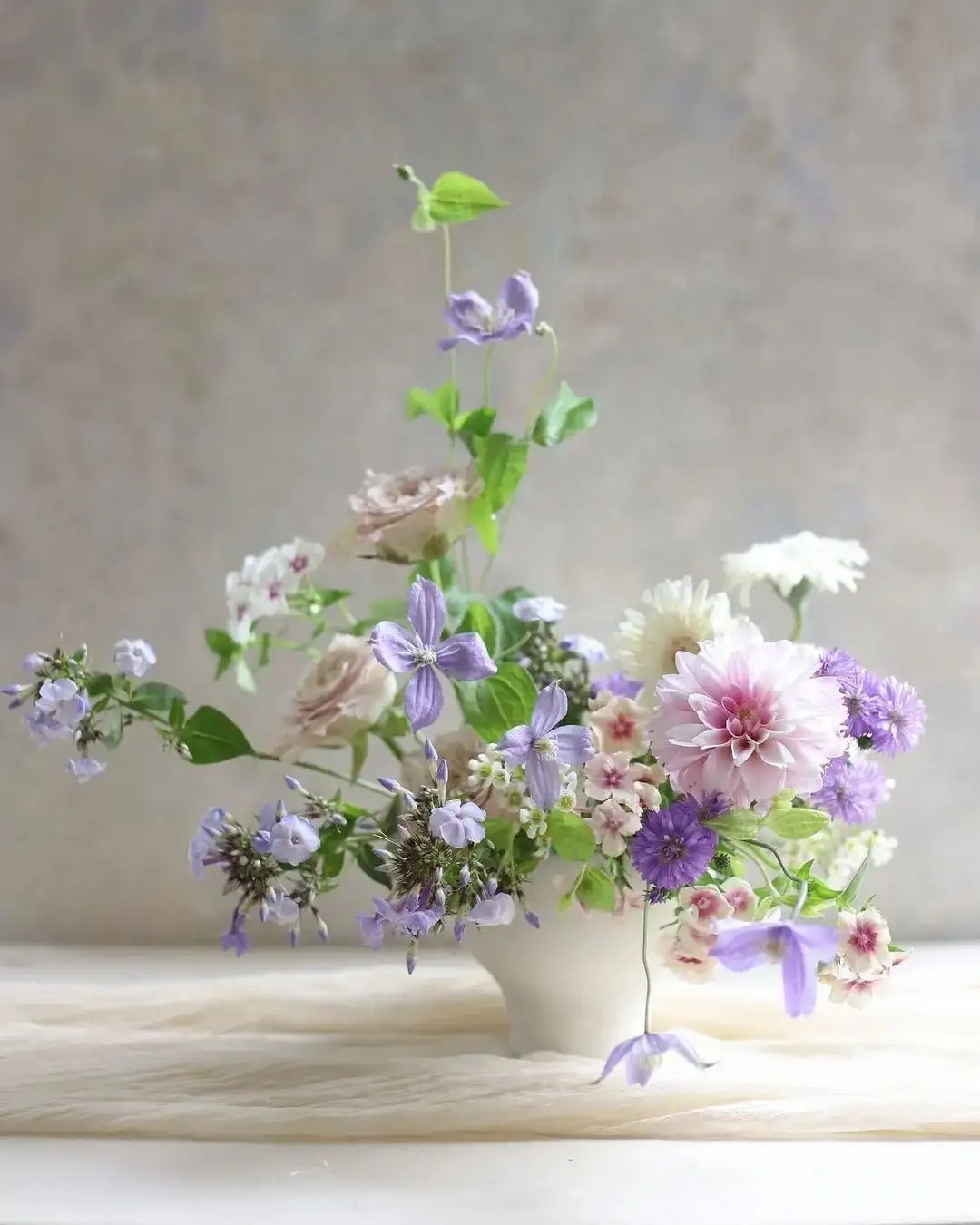
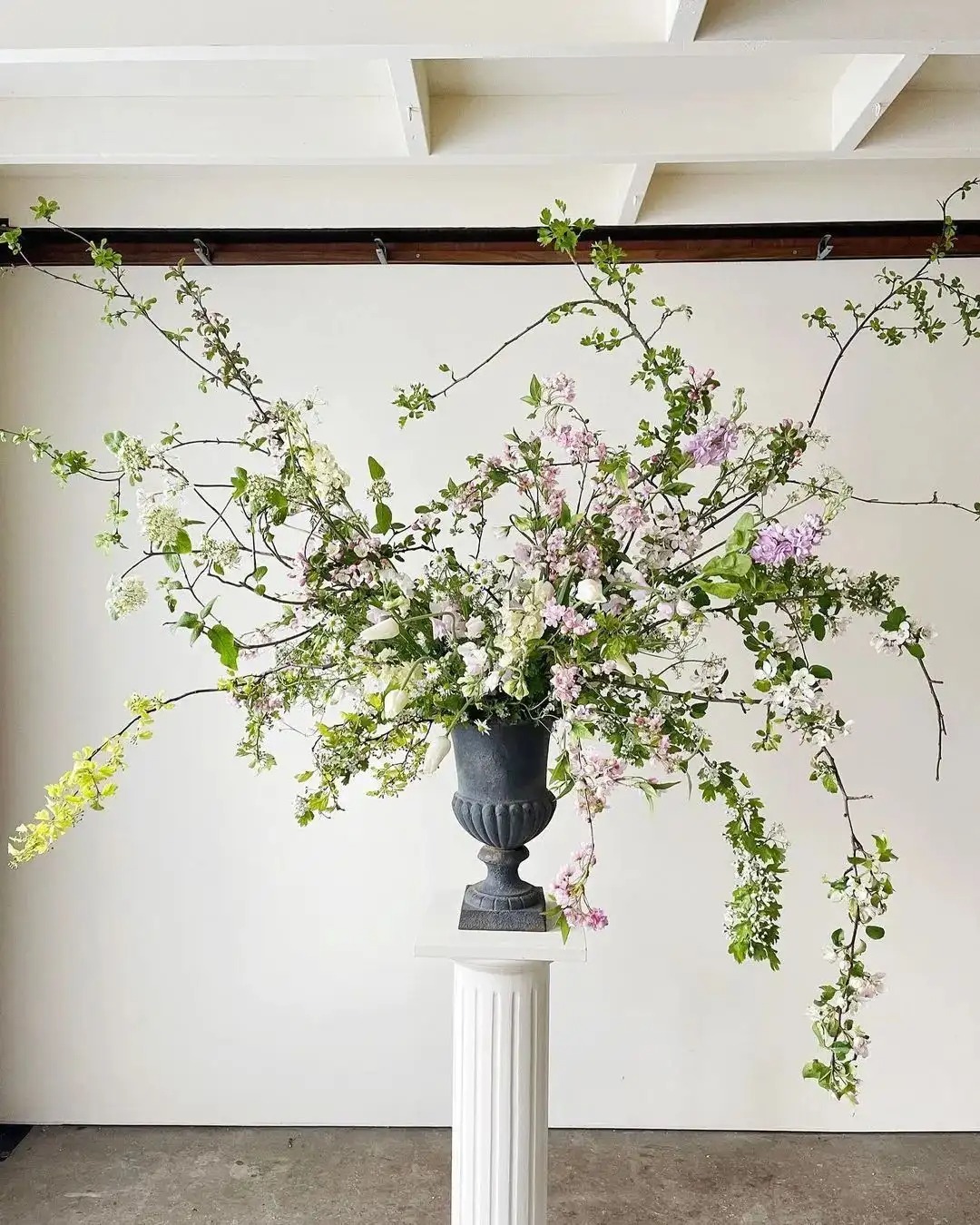
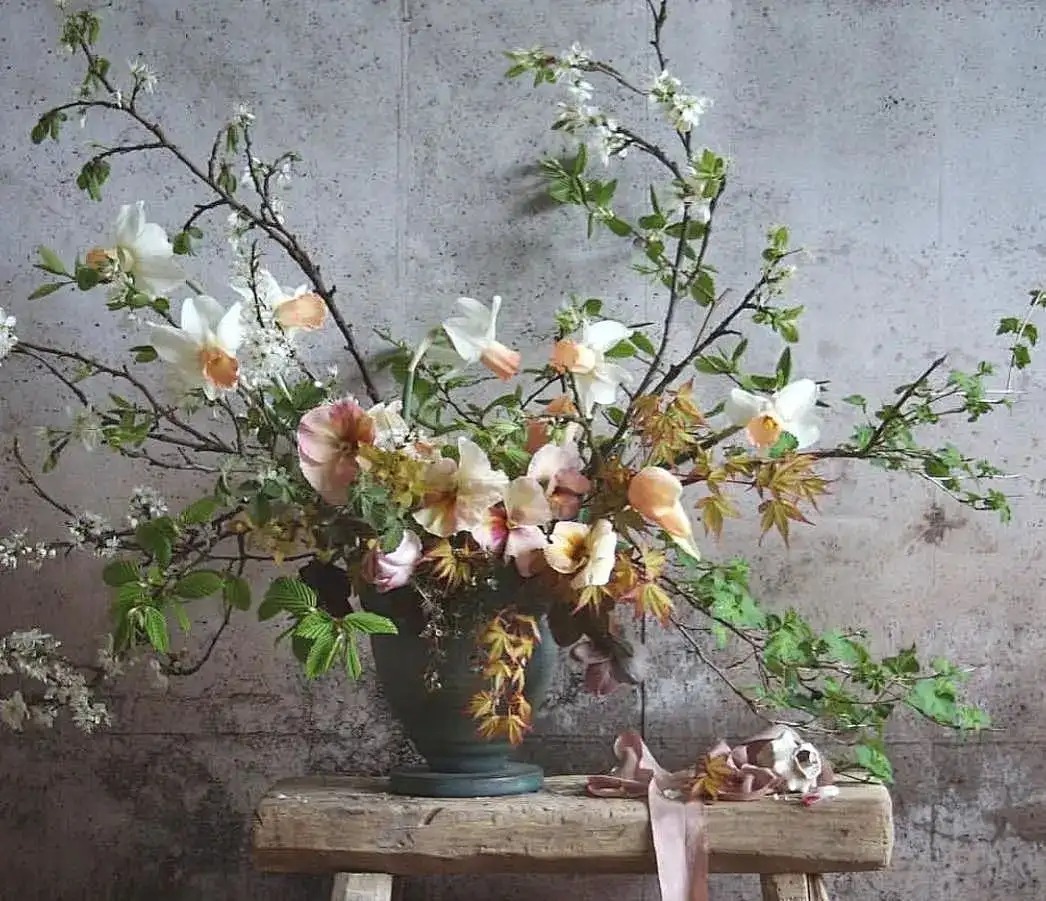
Straight-line flower arrangements give people a sense of solemnity and are often used in modern flower arrangements. Straight lines determine height and direction, and can guide the viewer's line of sight, creating a sense of visual extension . Like a high-pitched march, it is upright and vigorous.
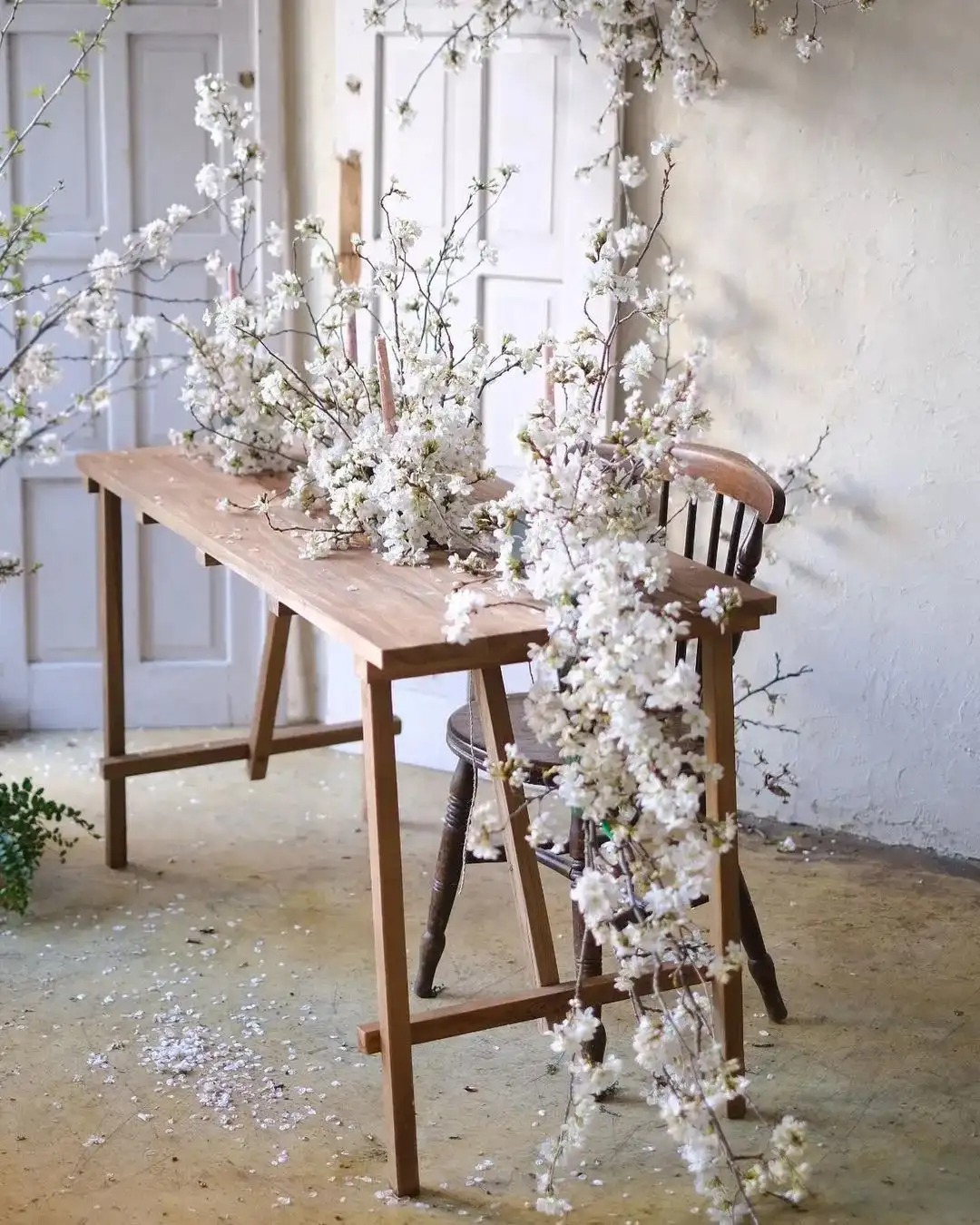
Curved flower arrangements are more lively, horizontal lines are stable, diagonal lines are dynamic, and arcs are beautiful. You can choose dead vines and leaves in nature, or you can use straight-line flowers.
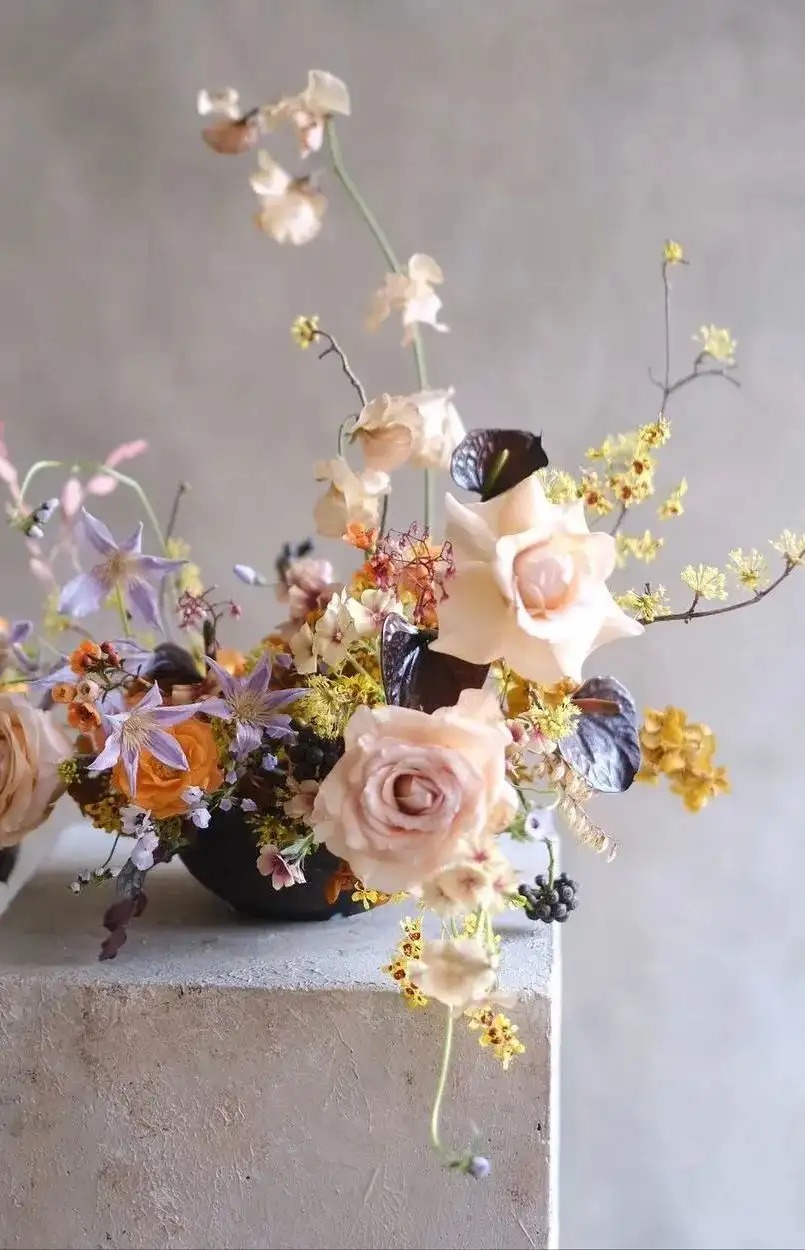
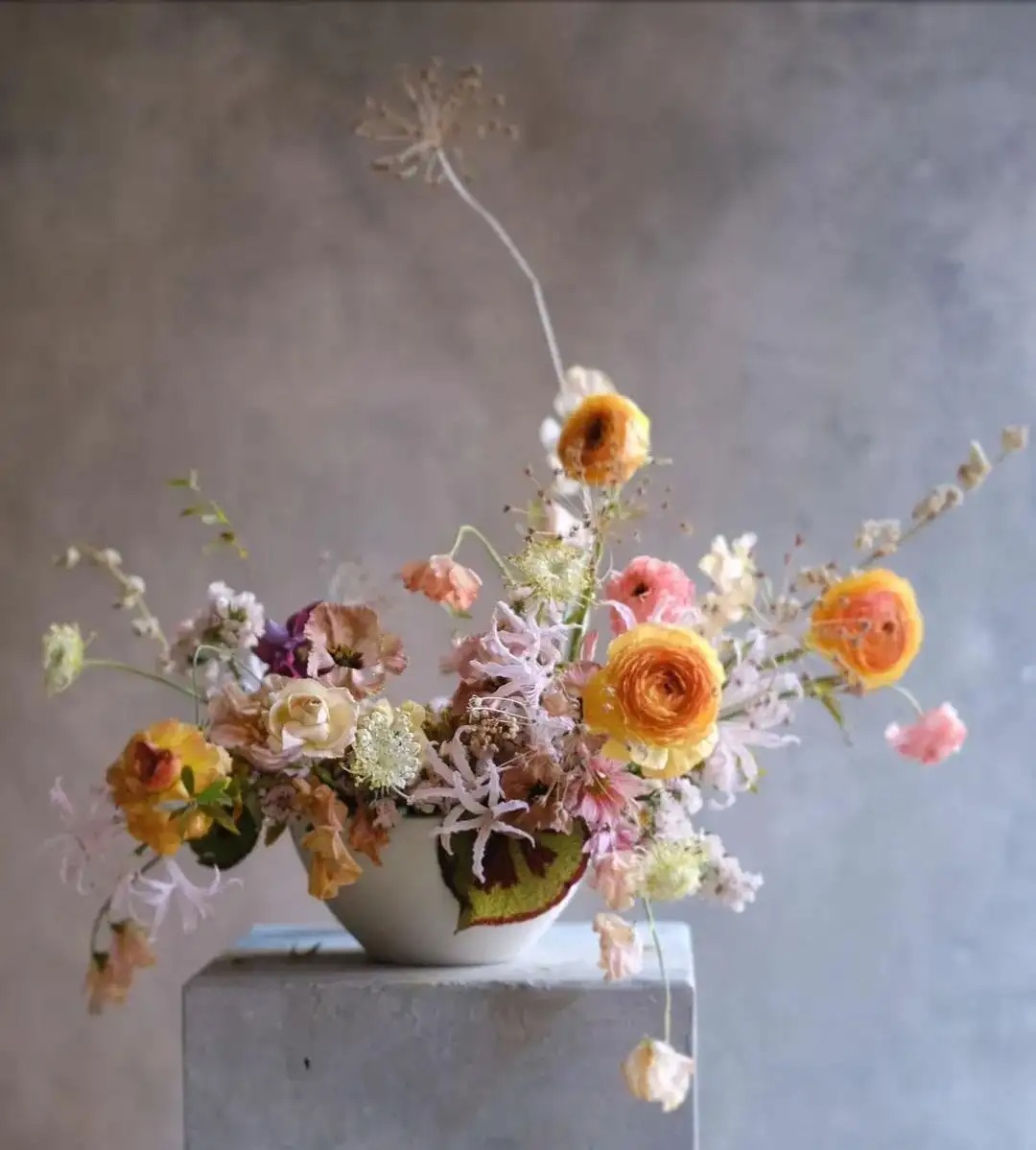
The arrangement of the flowers in linear flower arrangement should not be too rigid, and the colors of the flowers should be uniform, not complicated or messy. The lines should be graceful and smooth, or radiant, or gentle or bold, like soothing light music, mysterious and romantic.
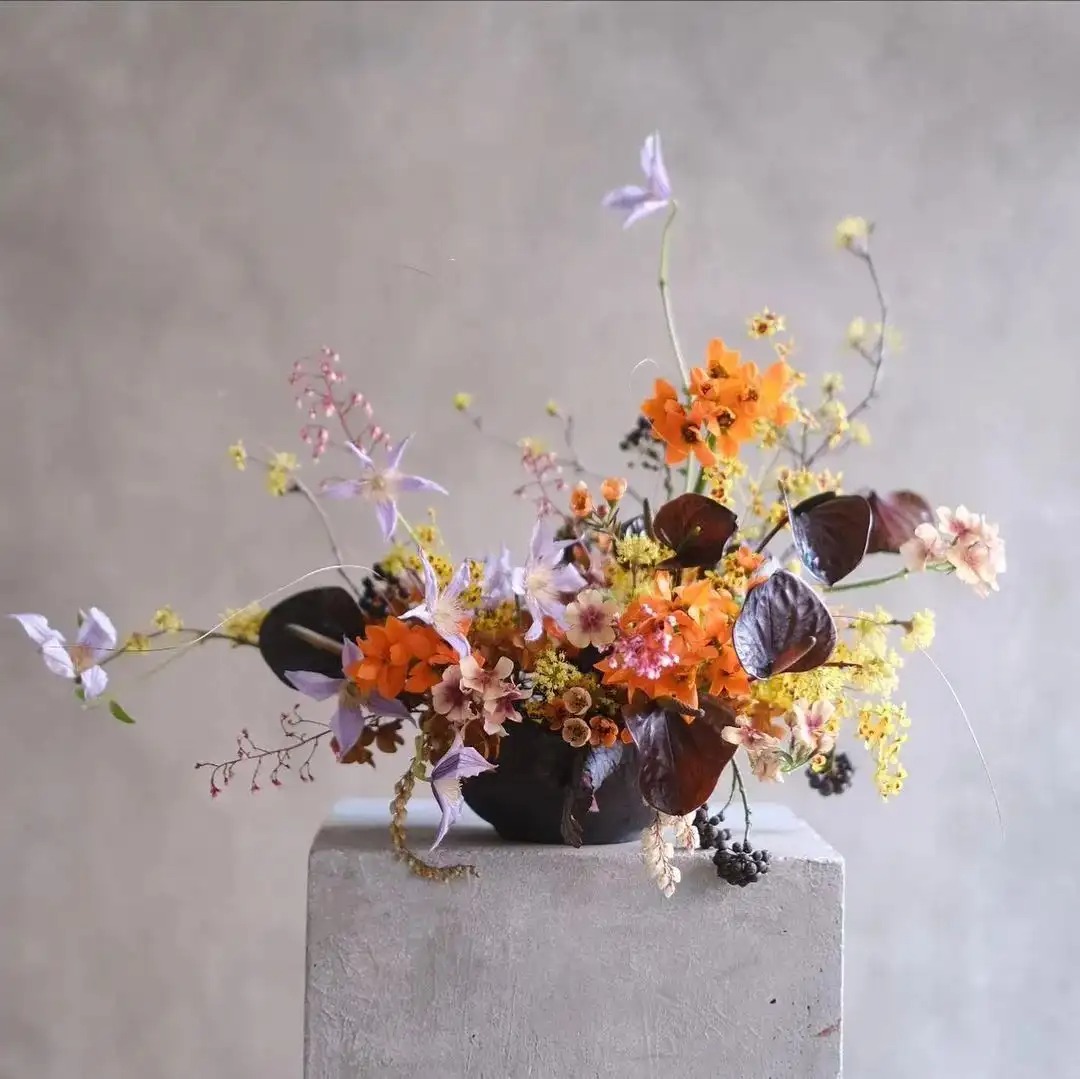
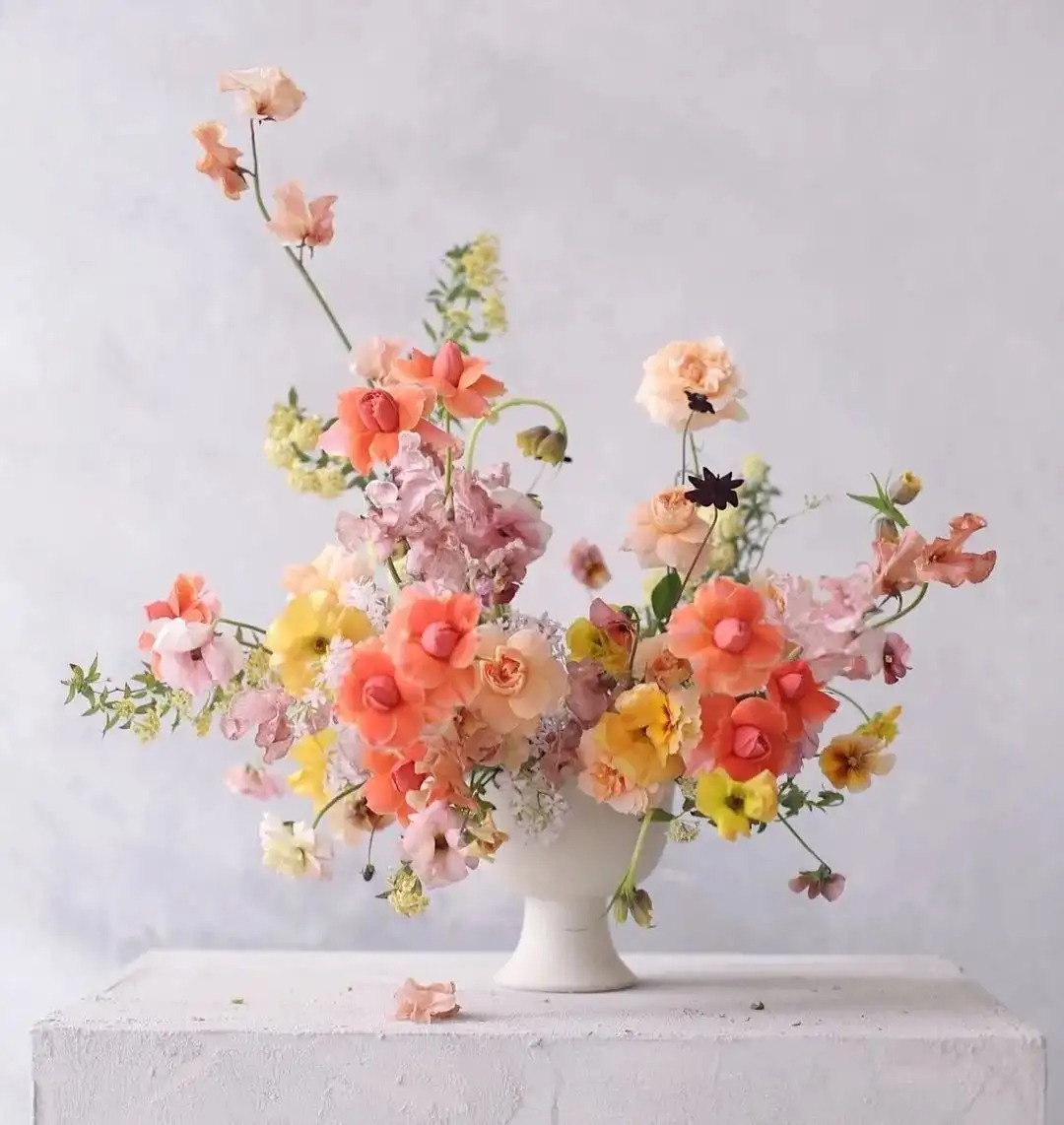
Commonly used flowers for linear flower arrangement: gladiolus, snake whip daisy, violet, snapdragon, silver willow, red yew, eucalyptus leaves, dancing orchid, etc. as line decorations; daffodils, lilies, orchids, calla lilies, etc. can be used as decorative flowers.
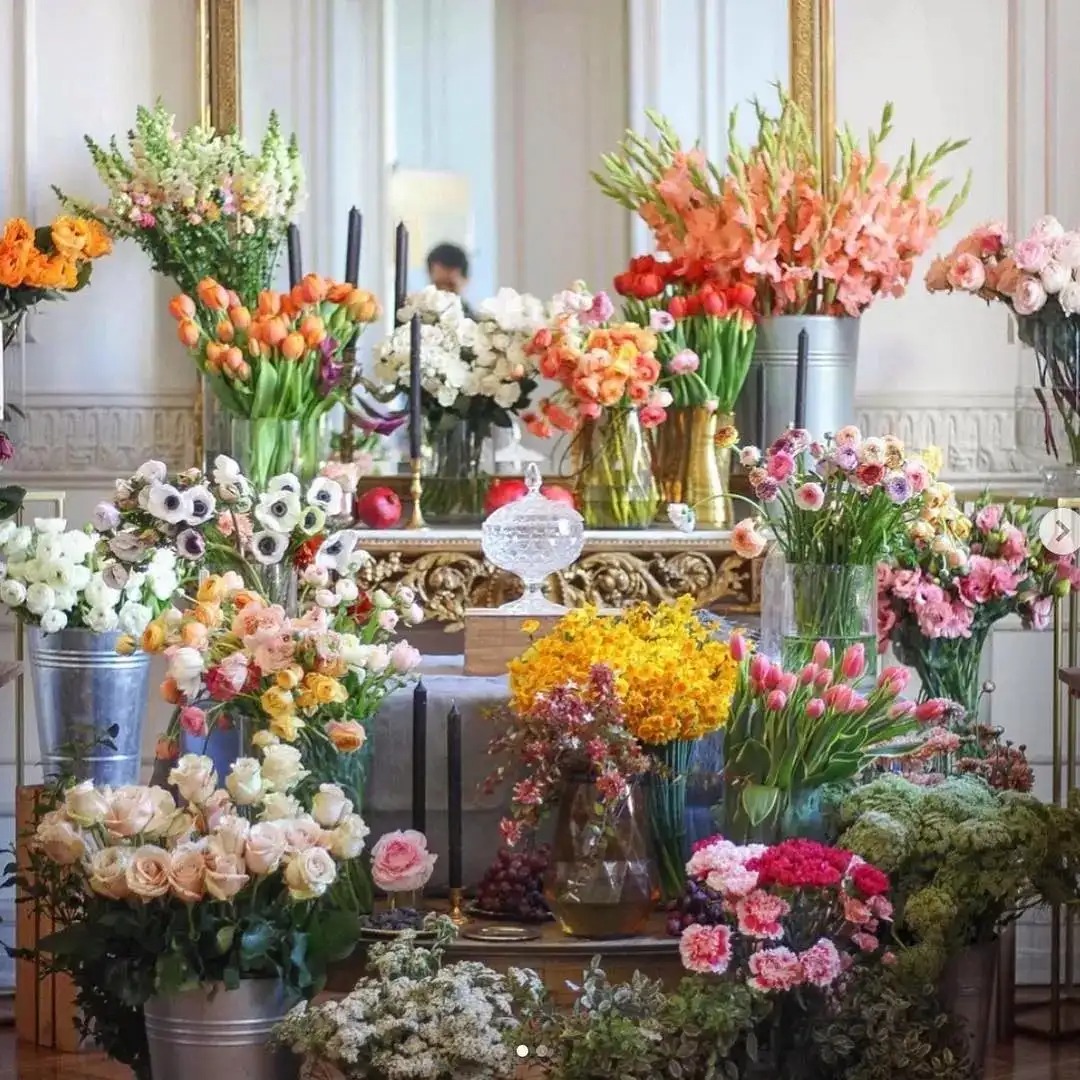
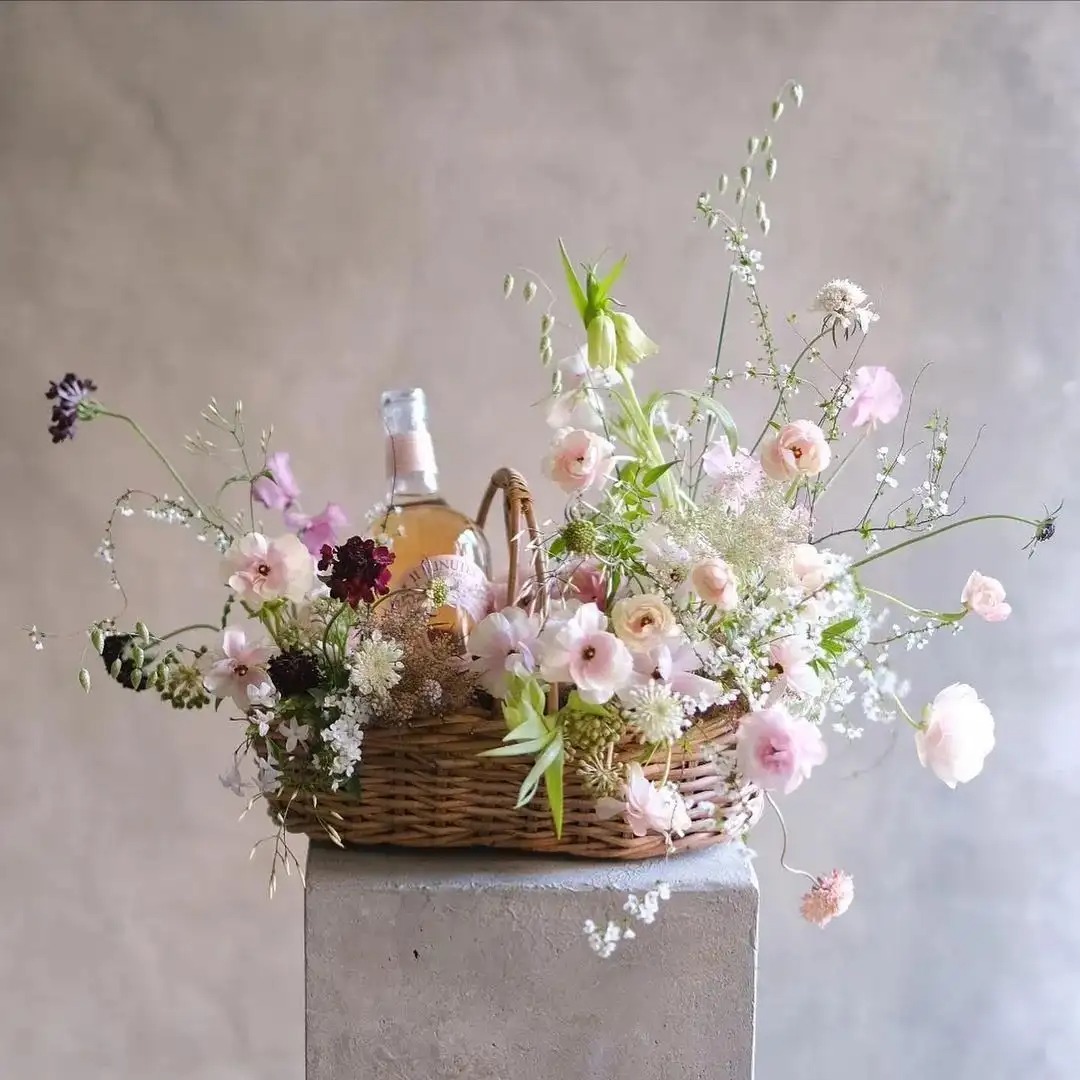
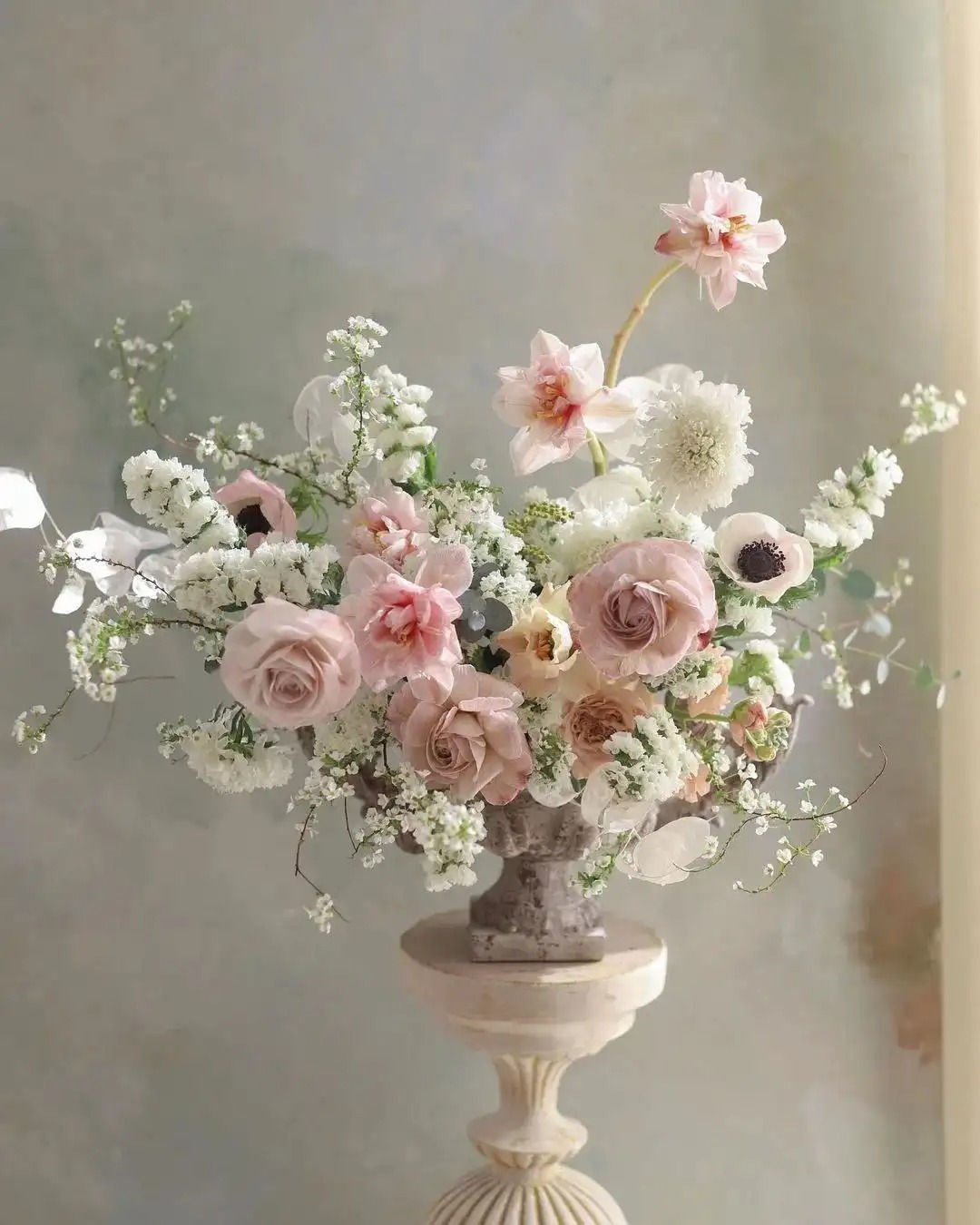
03 The sense of expansion of “surface” “Surface” can be said to be the formation of “point” after the area is increased. It has structural characteristics such as position, shape, direction and range. It is a geometric surface with a sense of rationality, simplicity, brightness and simplicity.
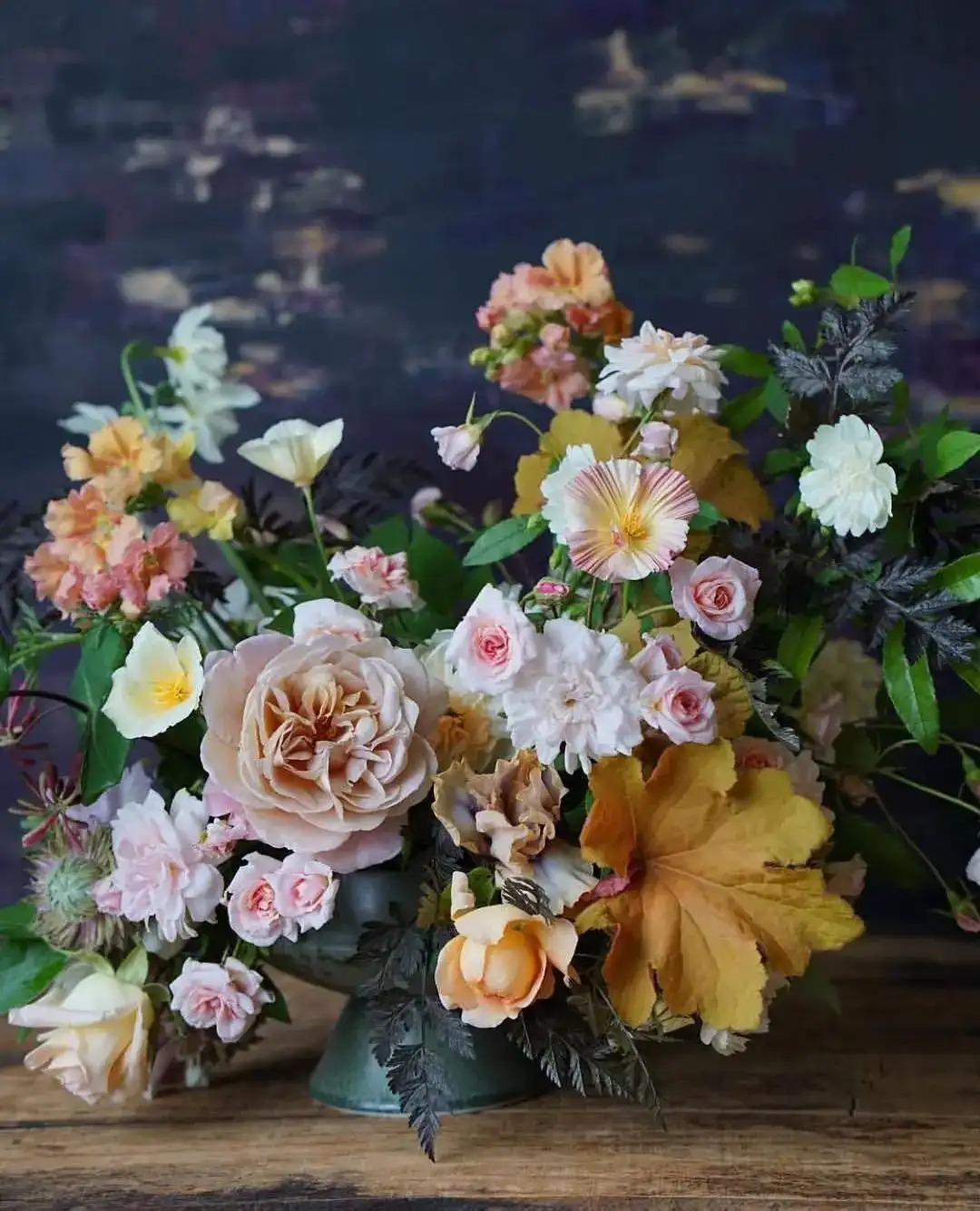
In flower arrangement works, proper use of surface composition will give the works a stronger sense of three-dimensionality. This method of surface composition is often used in large-scale floral designs, and is also common in group floral works.
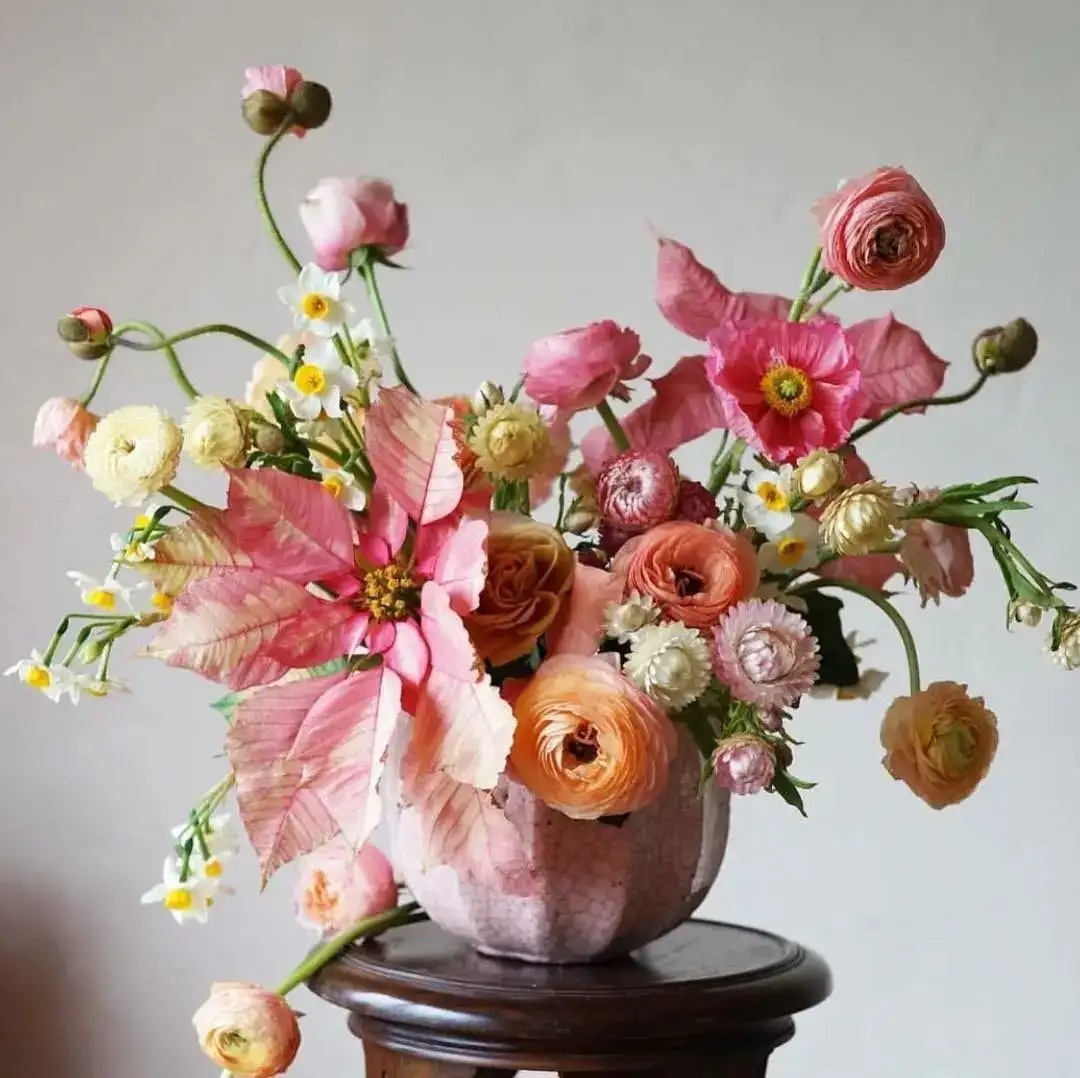
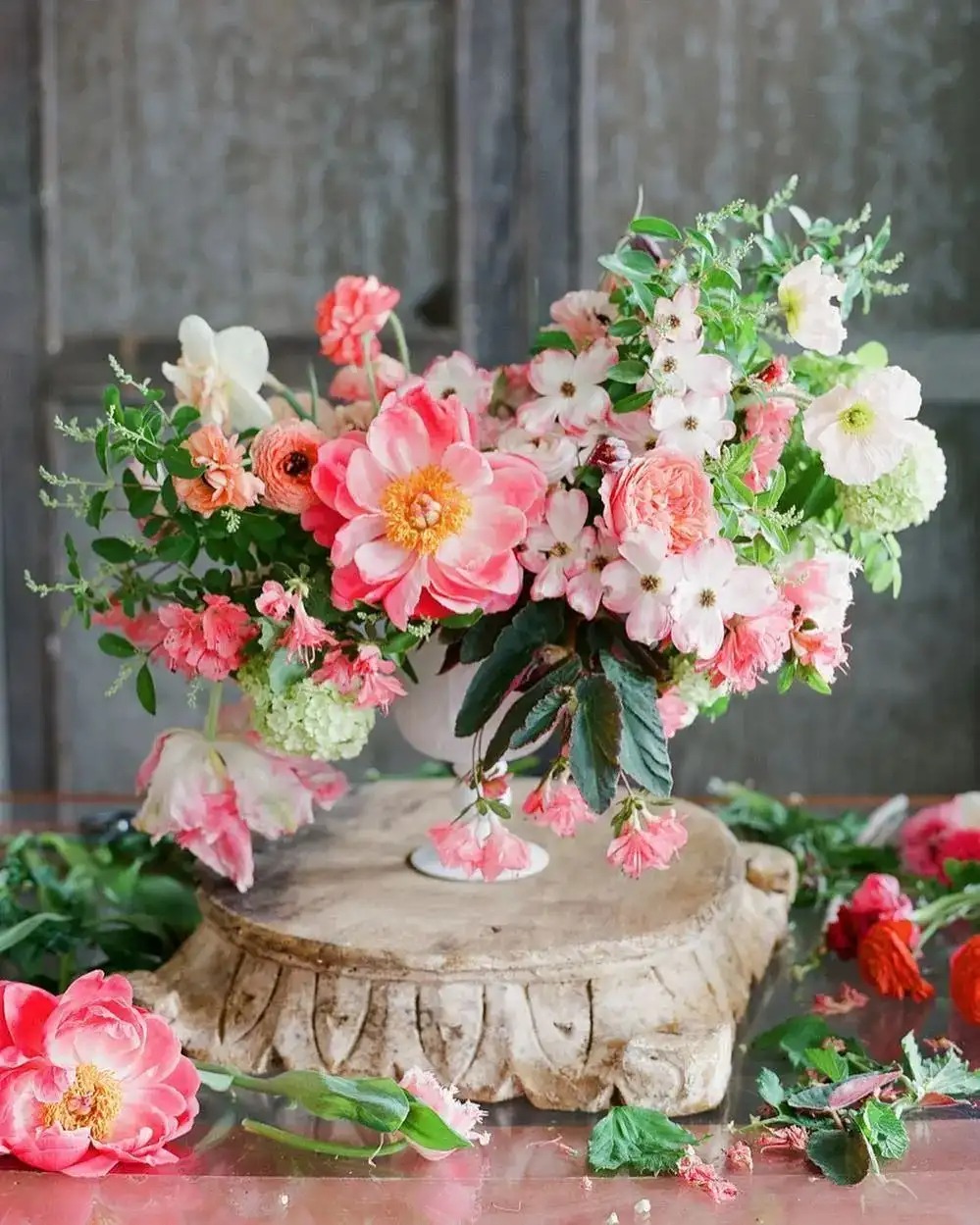
Overlapping to form a surface: Use massed or linear flower materials to repeatedly arrange to form a surface. The front-to-back relationship between surfaces and the overlap of surfaces can produce different visual effects, such as the overlap and interweaving of leaf materials, the interlacing of blocky flowers of different colors, etc.
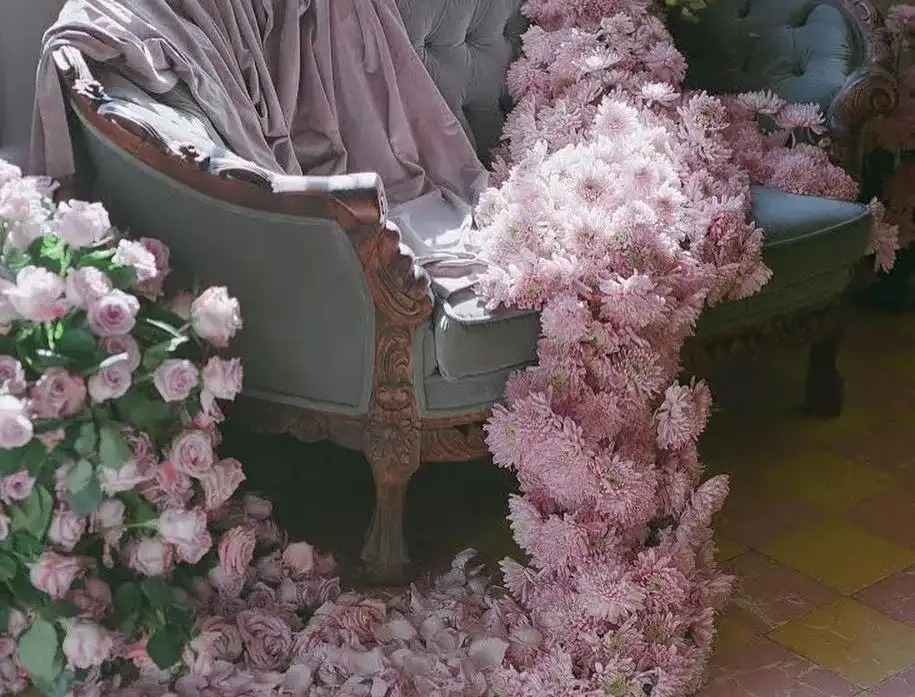
Surface division and composition: often used in flower arrangement, suitable for flowers with a single shape and easy to control, and as few flowers as possible, that is, abstract flower arrangement that tends to be simple and vivid.
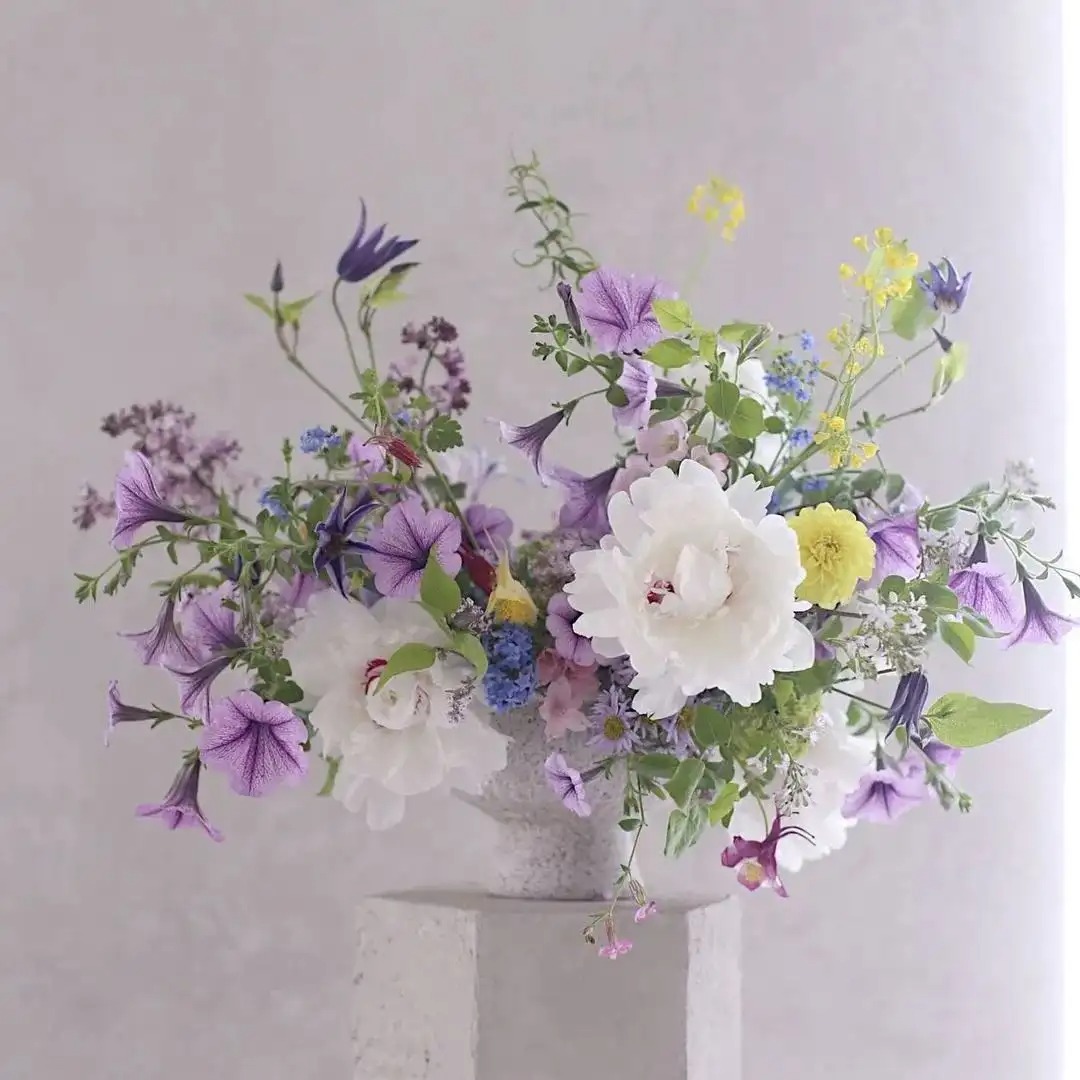
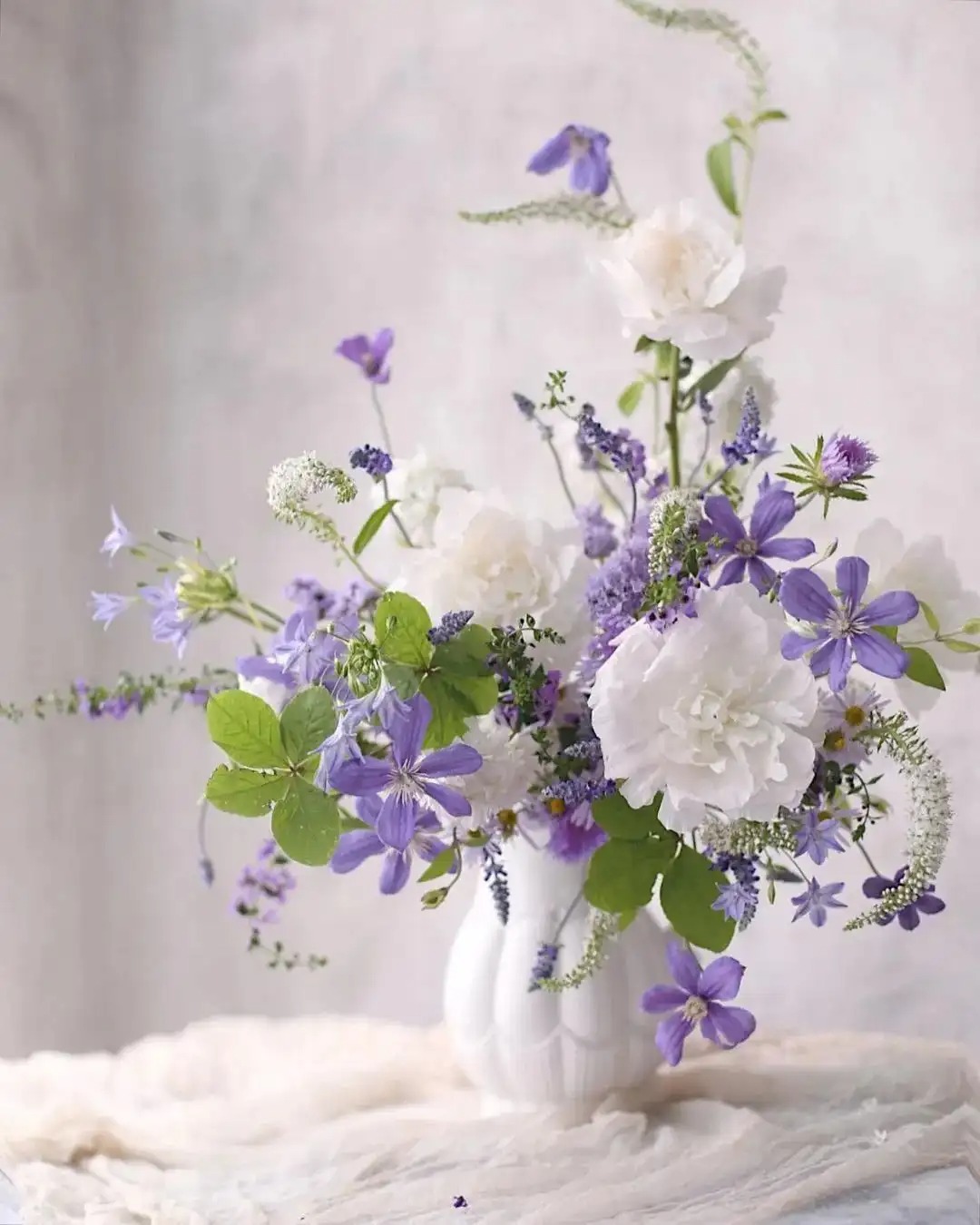
Surface contrast: The surface also serves as a background, which can set off the main flowers. Therefore, in the creation of floral works, it is important to determine what kind of flowers to use as the base in order to be beneficial to the overall visual expression of the floral work.
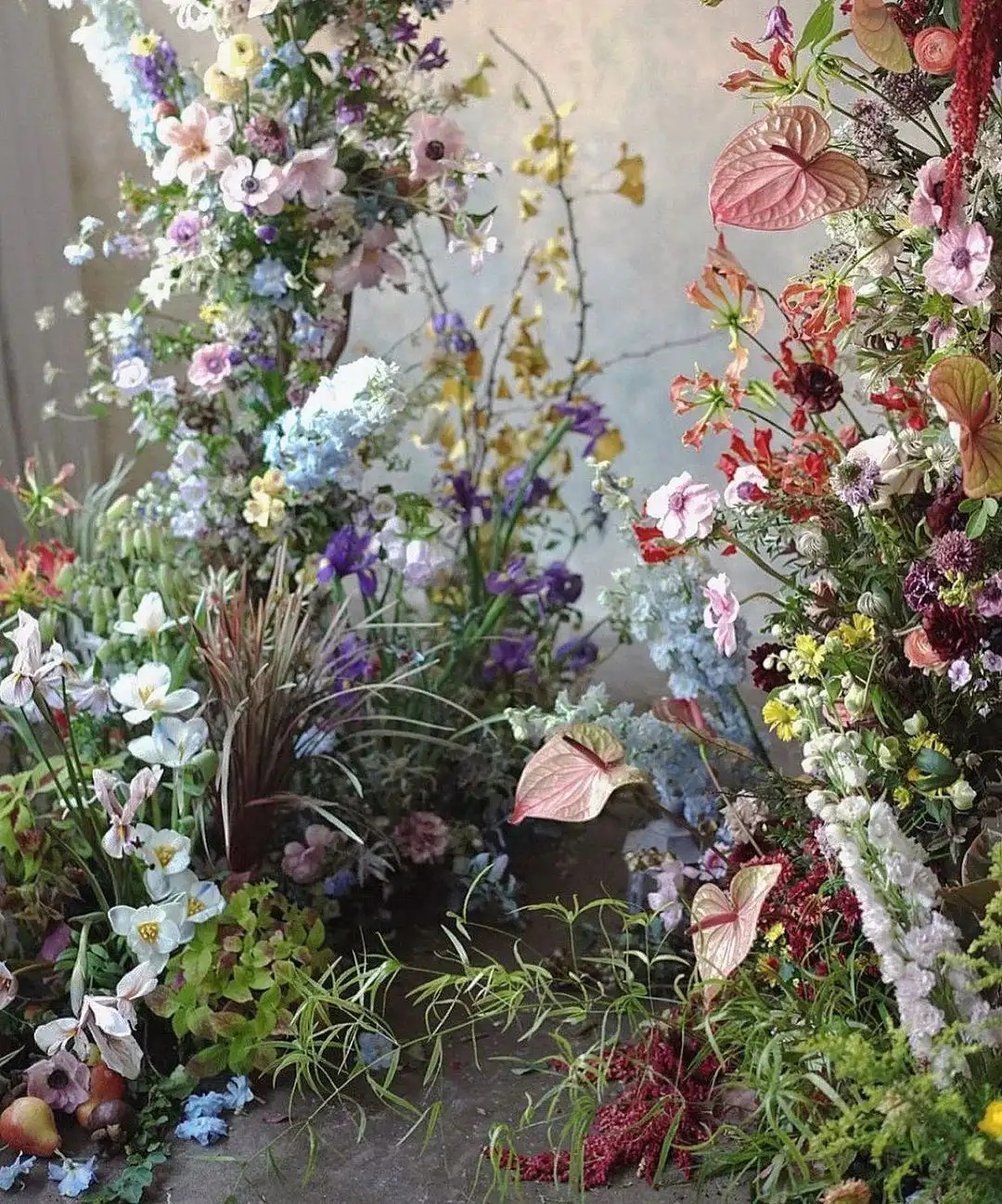
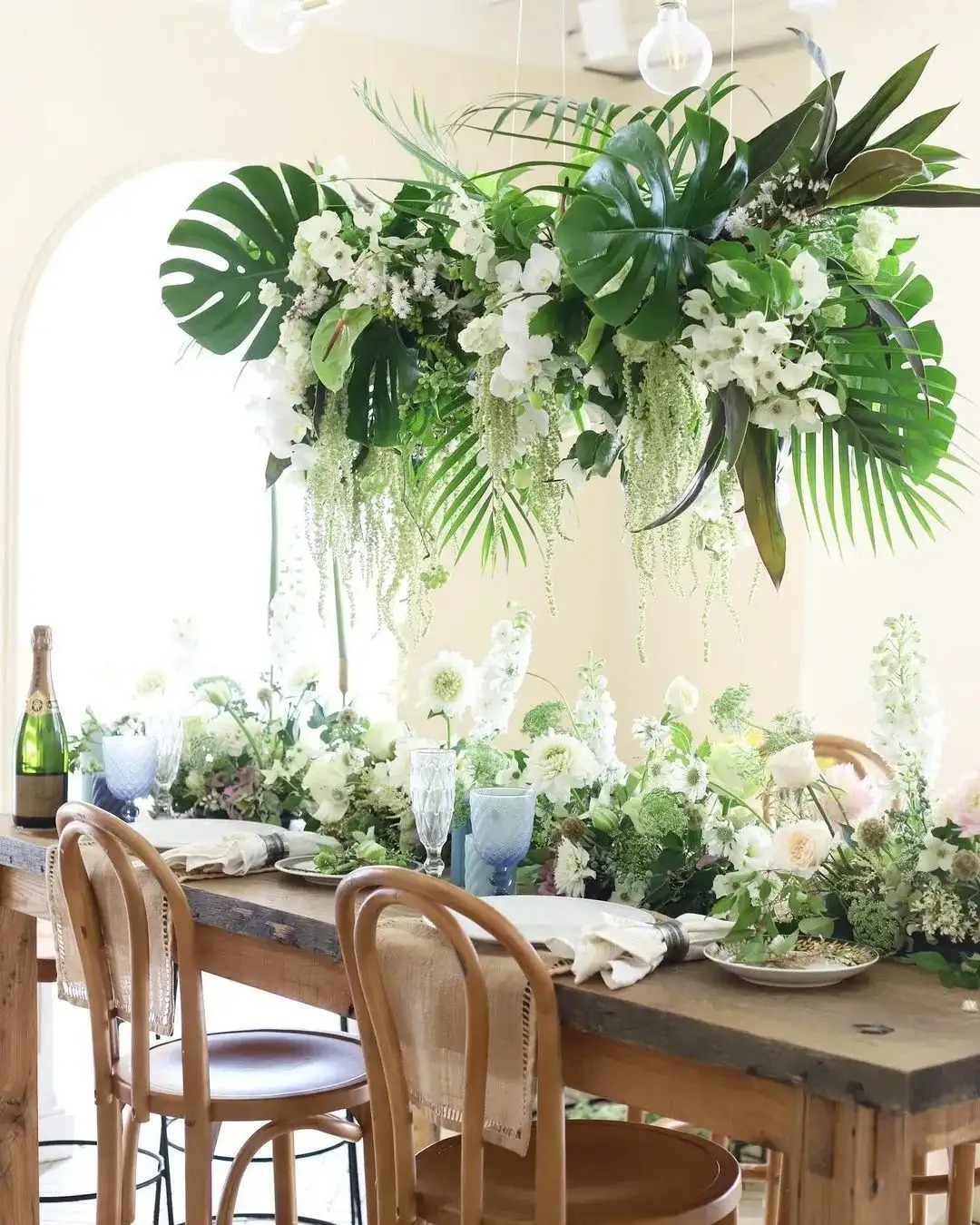
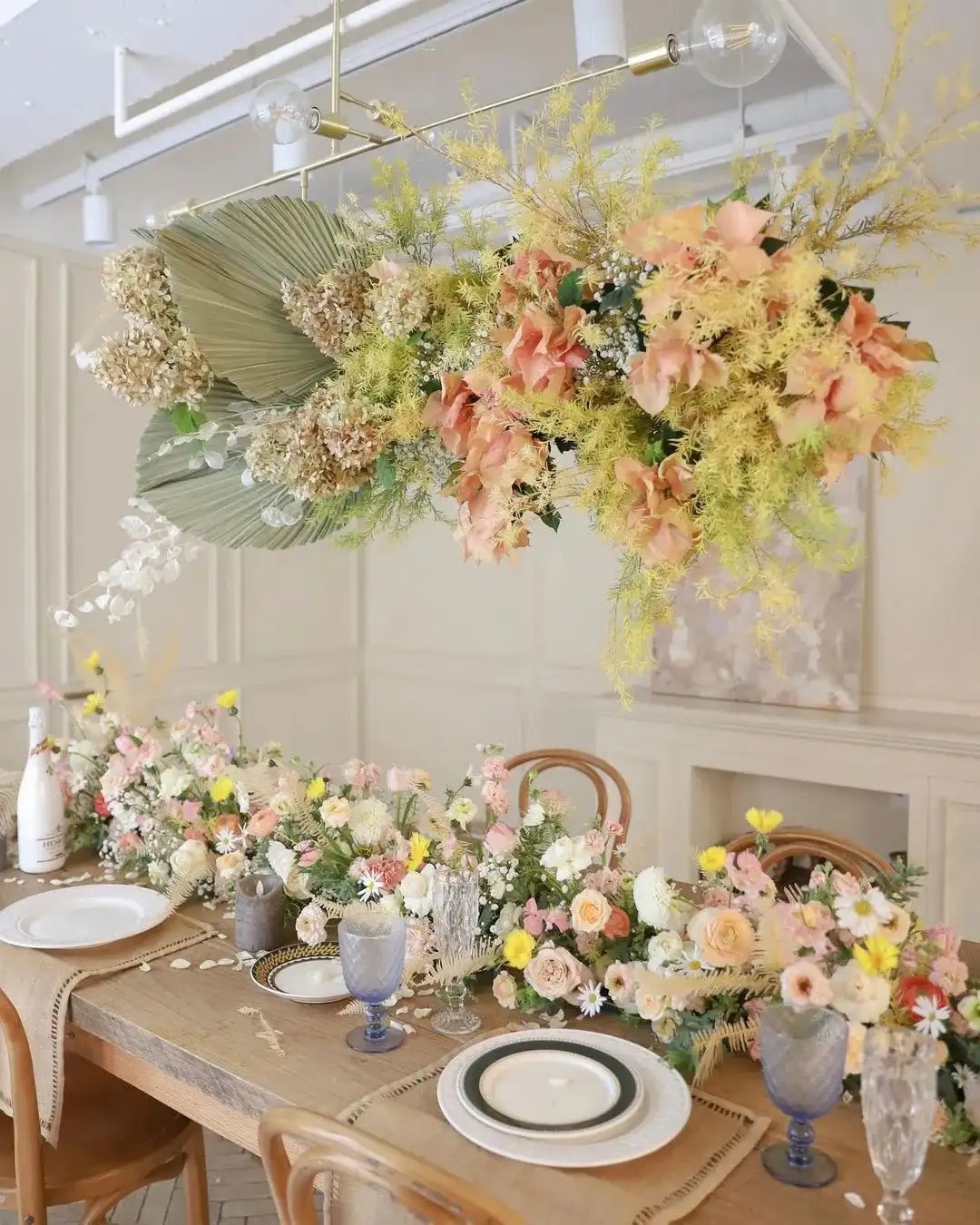
Filling the surface: Floral works can be one-sided or multi-dimensional. For example, the use of large areas of color in multi-dimensional floral design should pay more attention to its presentation at various angles to fill the gaps and perform perfectly.
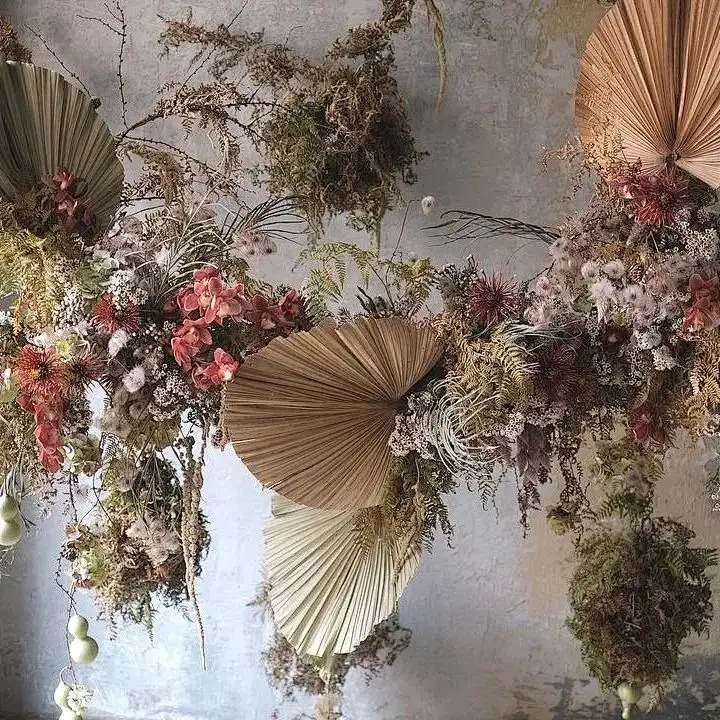
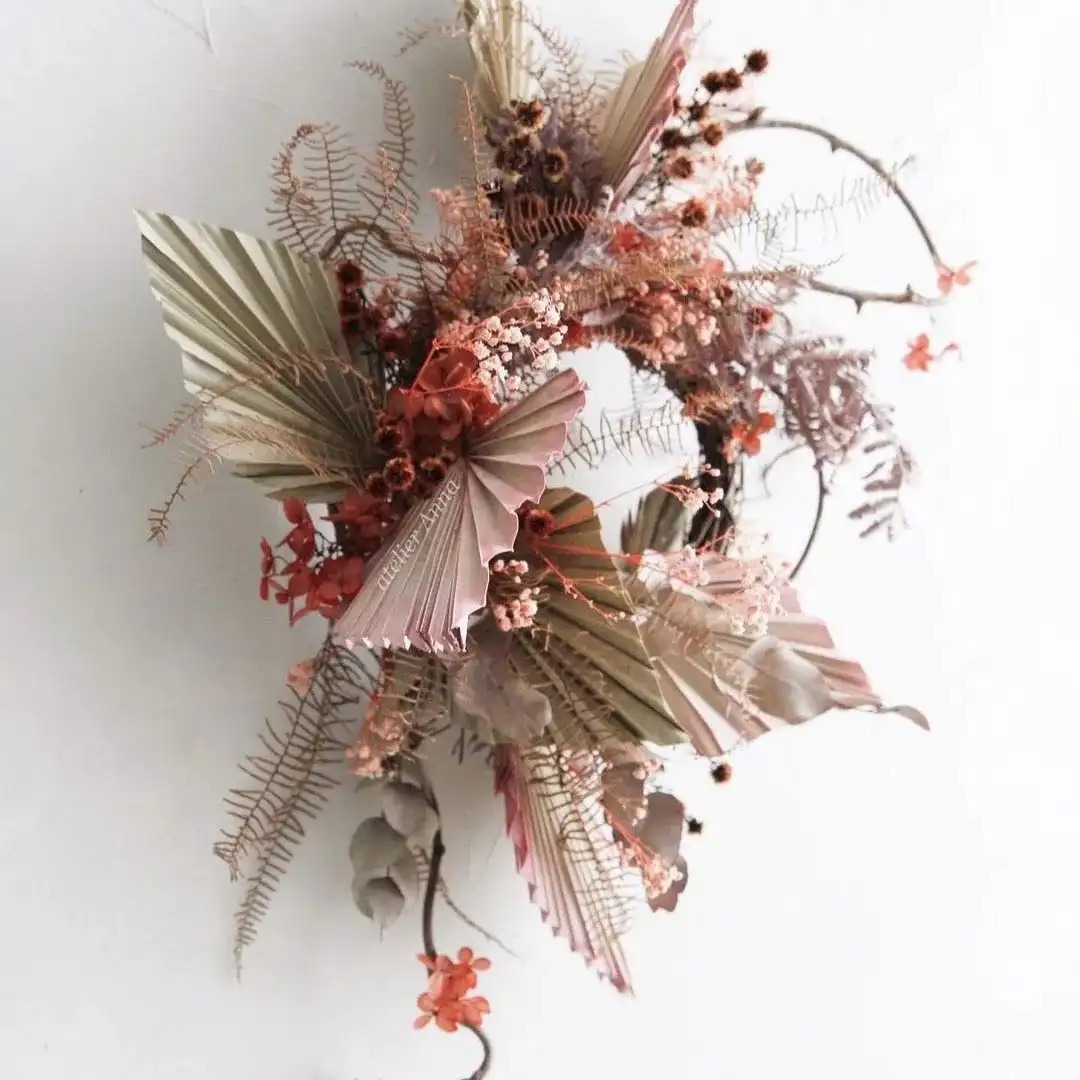
The surface is dense but not messy, extravagant but not noisy , like the youthful liveliness bursting out from a solemn procession. The surface can also express festive, peaceful, and gorgeous moods.
Commonly used flower materials for surface flower arrangement: roses, gerberas, carnations, peonies, water lilies, lisianthus, sunflowers and other mass-shaped flower materials; green palms, silver leafs, heliconia and other surface-shaped flower materials.
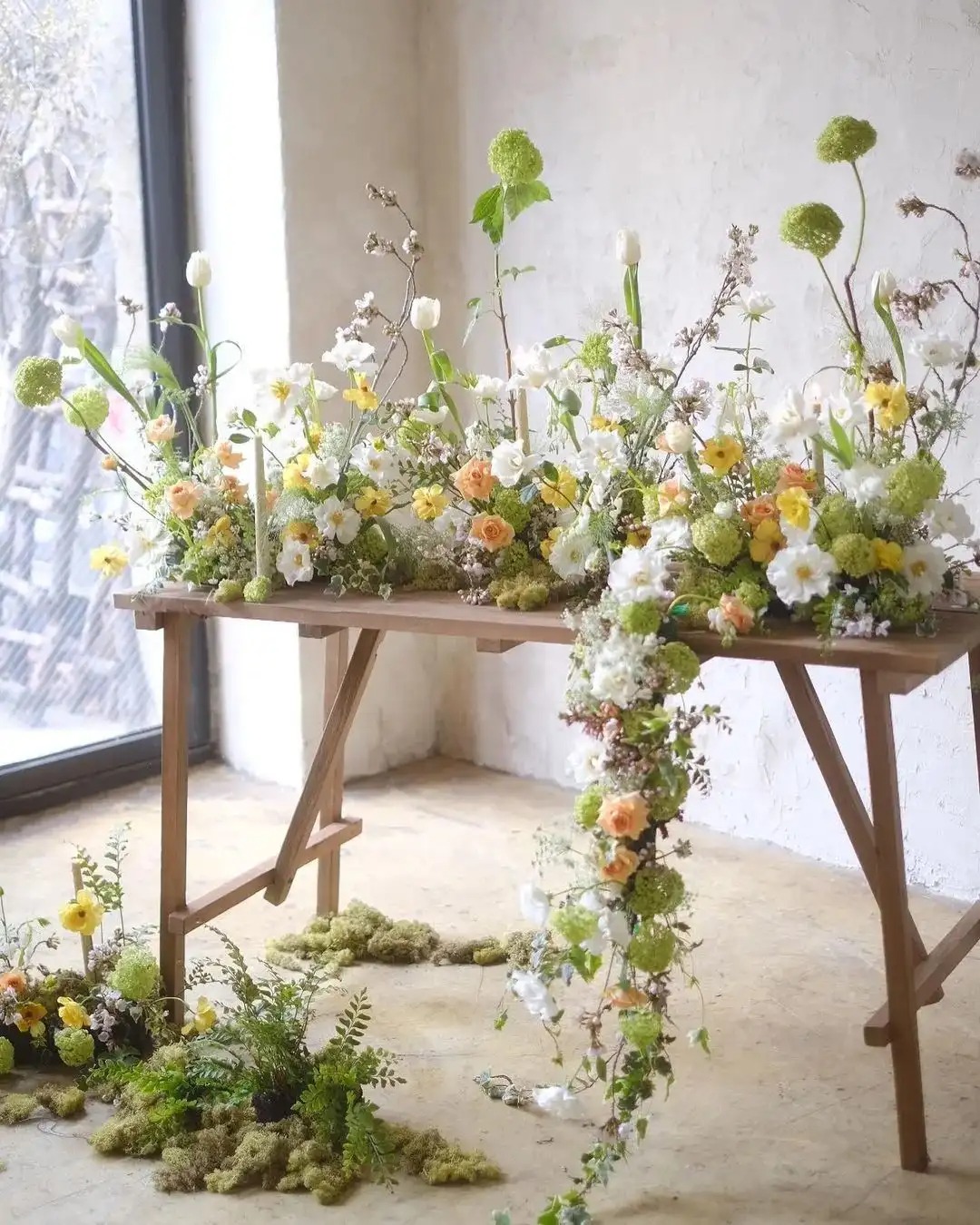
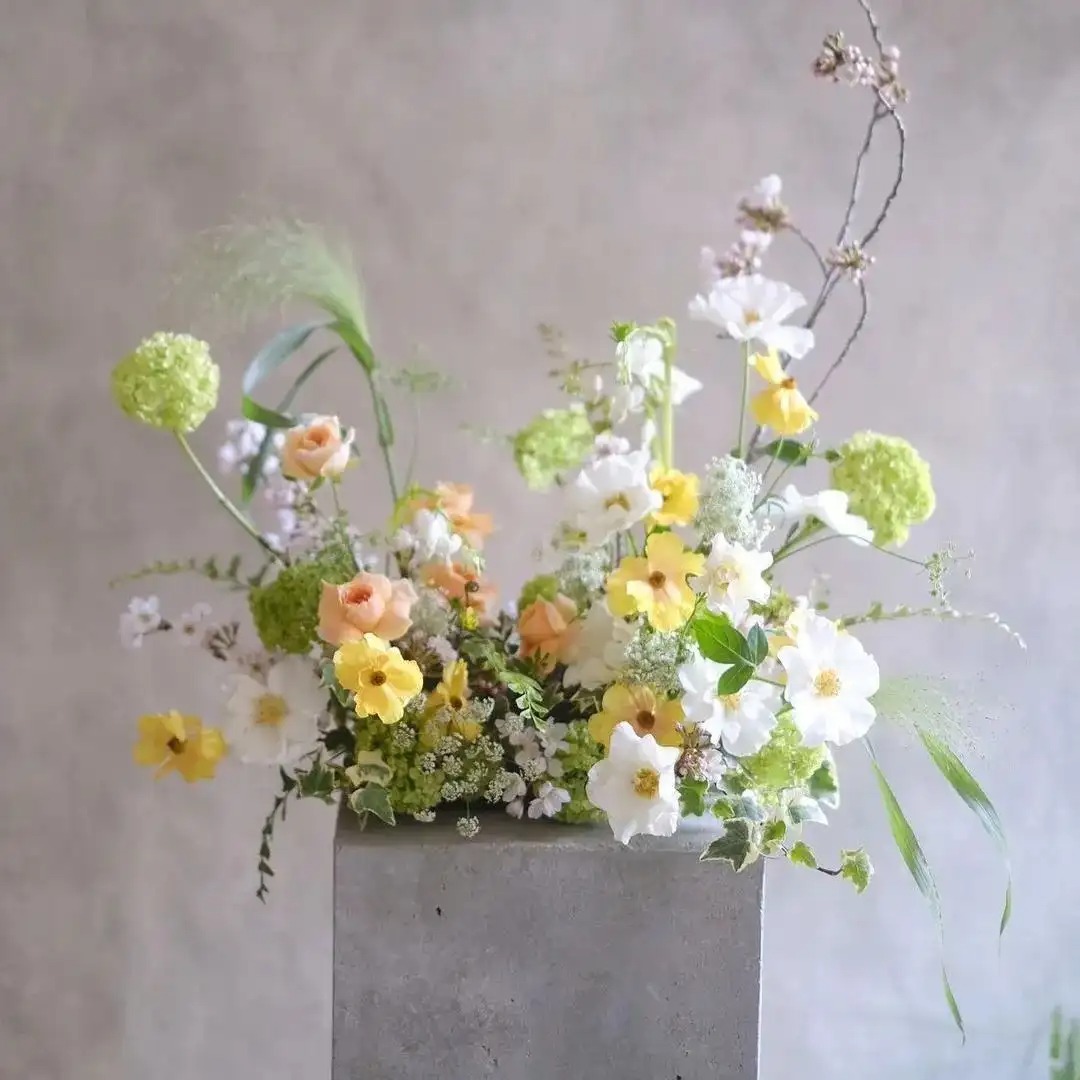
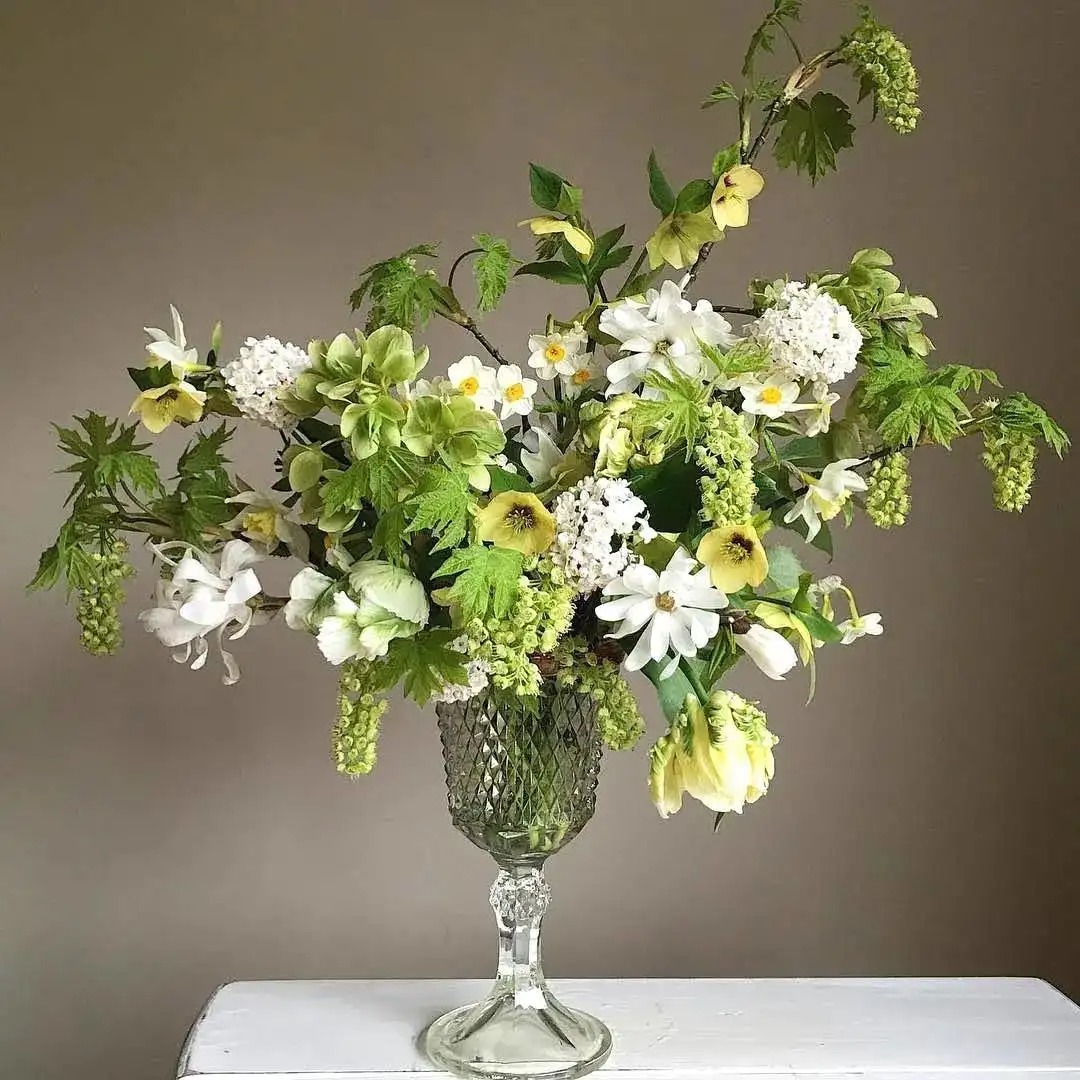
As a plastic art, flower arrangement is composed of three basic elements: points, lines, and surfaces. As long as the points, lines, and surfaces are used appropriately and the space is arranged reasonably, unlimited creativity can be generated to create colorful flower arrangement works.
The eight principles of flower
arrangement require the selection of materials based on certain ideas and the following of certain creative rules to complete a good work.
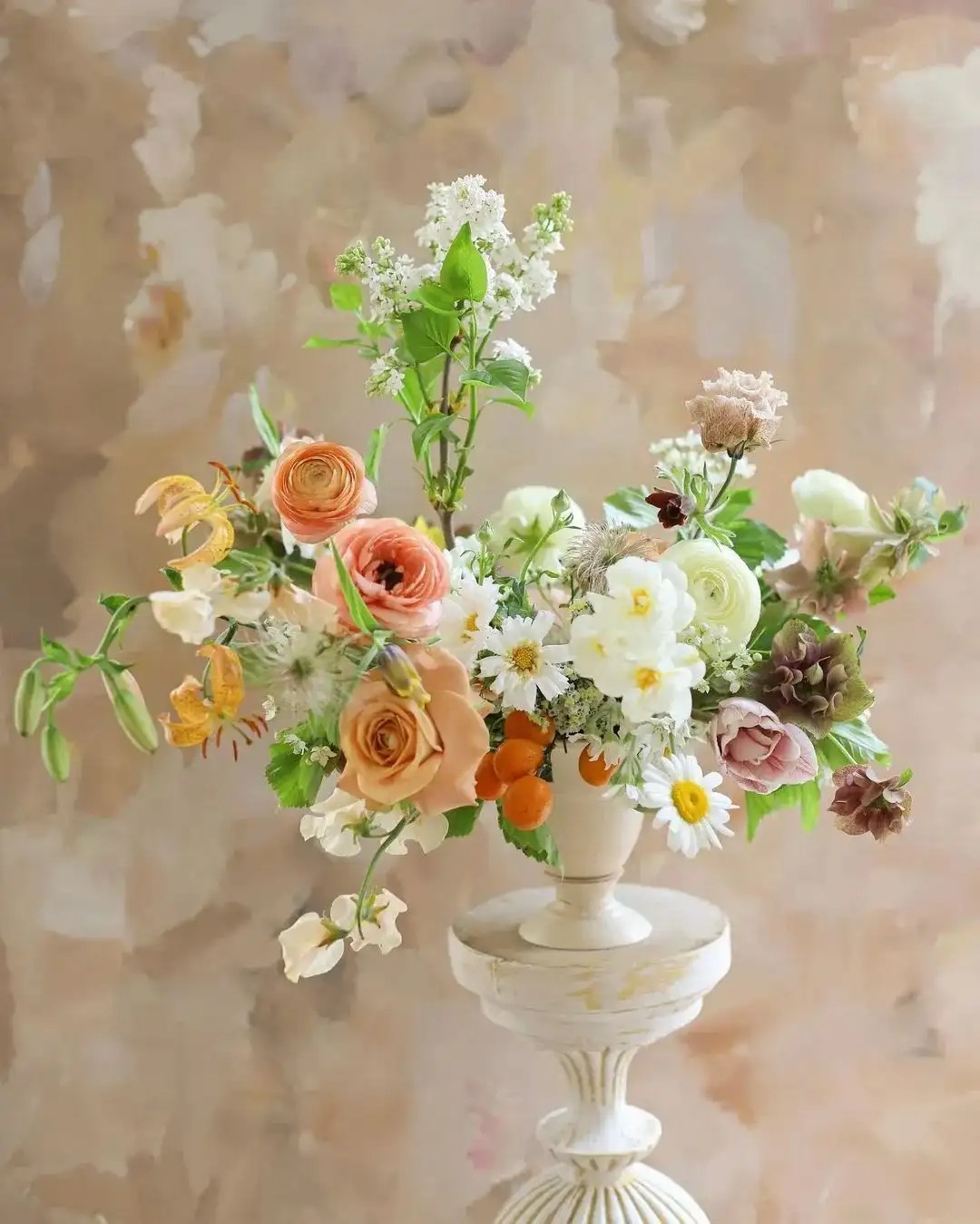
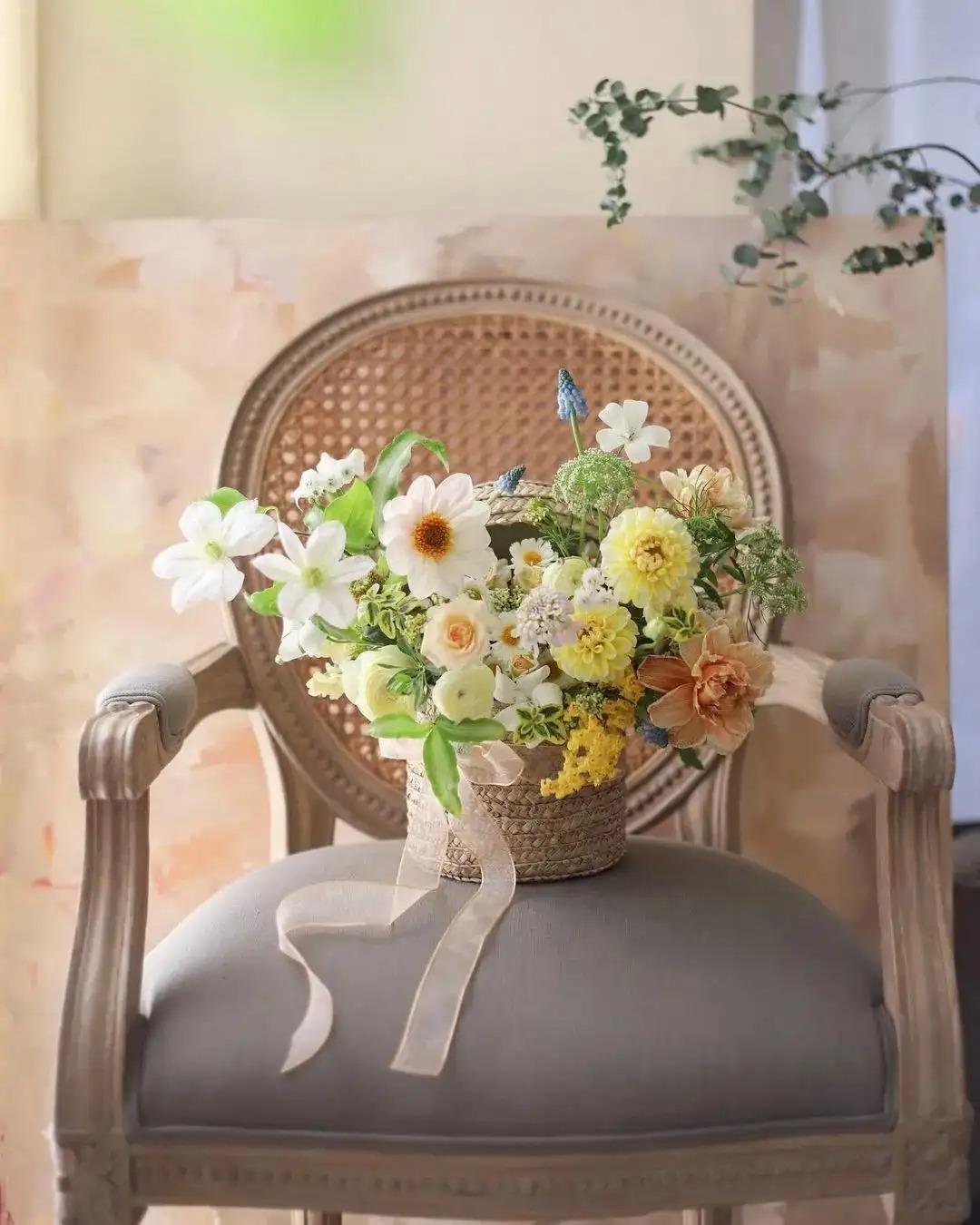
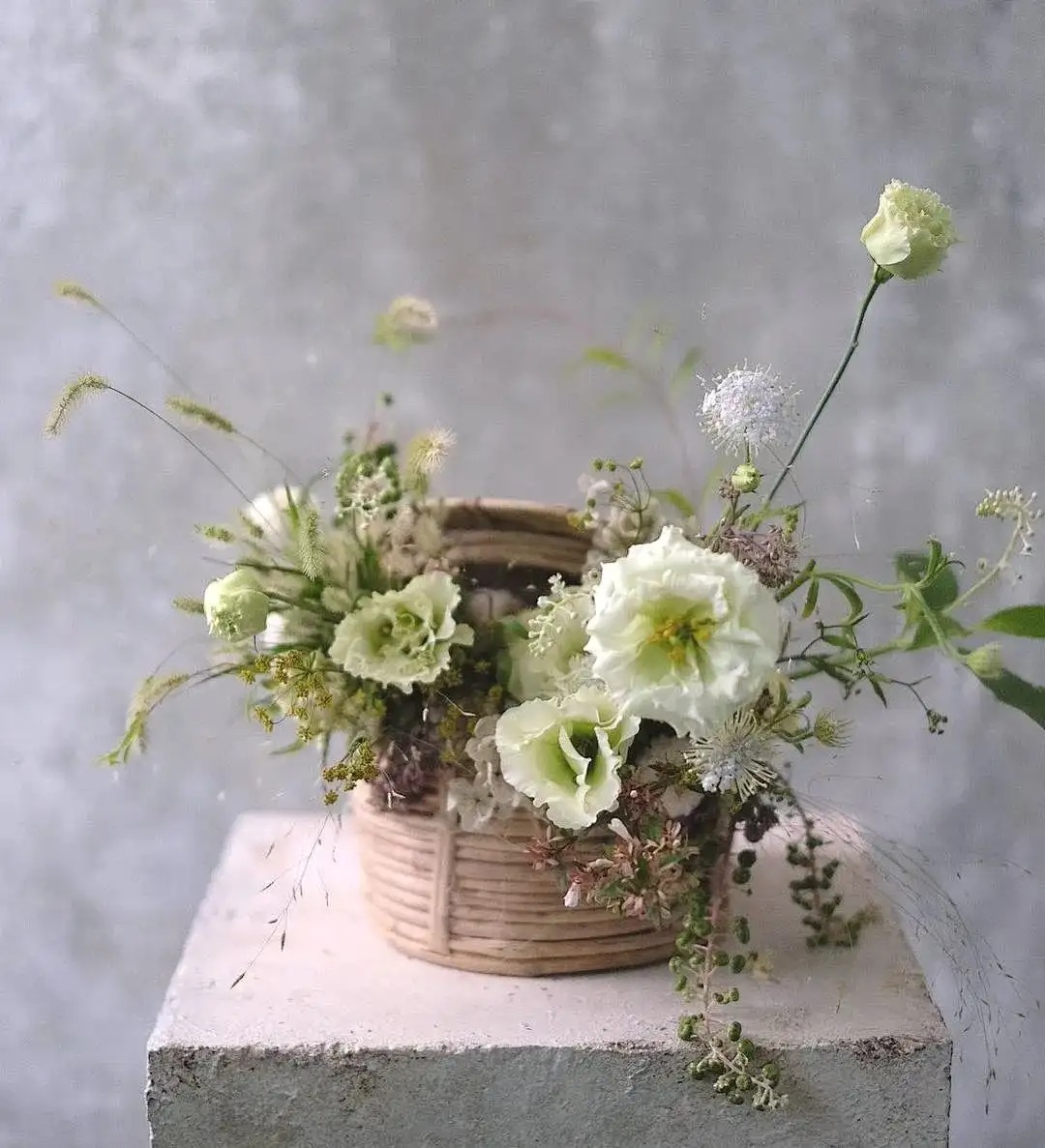
01Light on top and heavy on bottom,
the flower buds are on top and the full bloom is on the bottom; the light color is on top and the dark color is on the bottom, in an orderly sequence and completely natural.
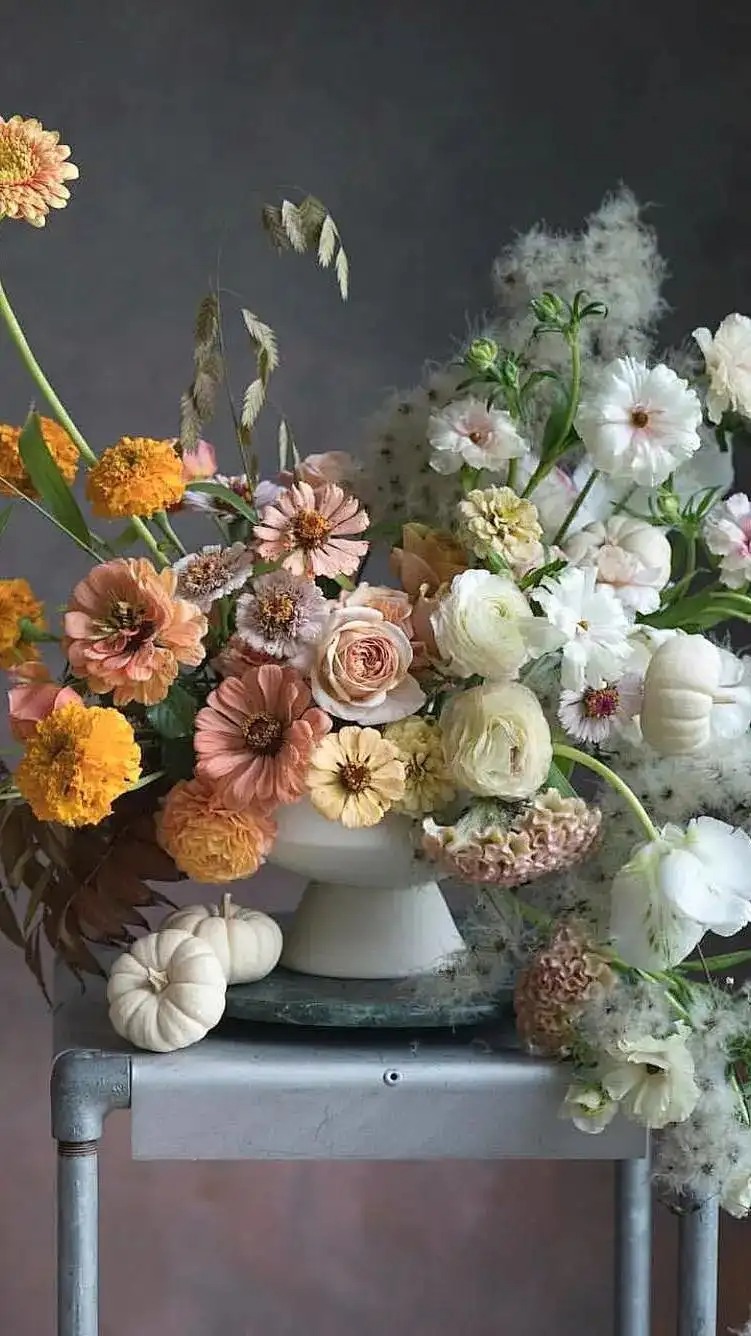
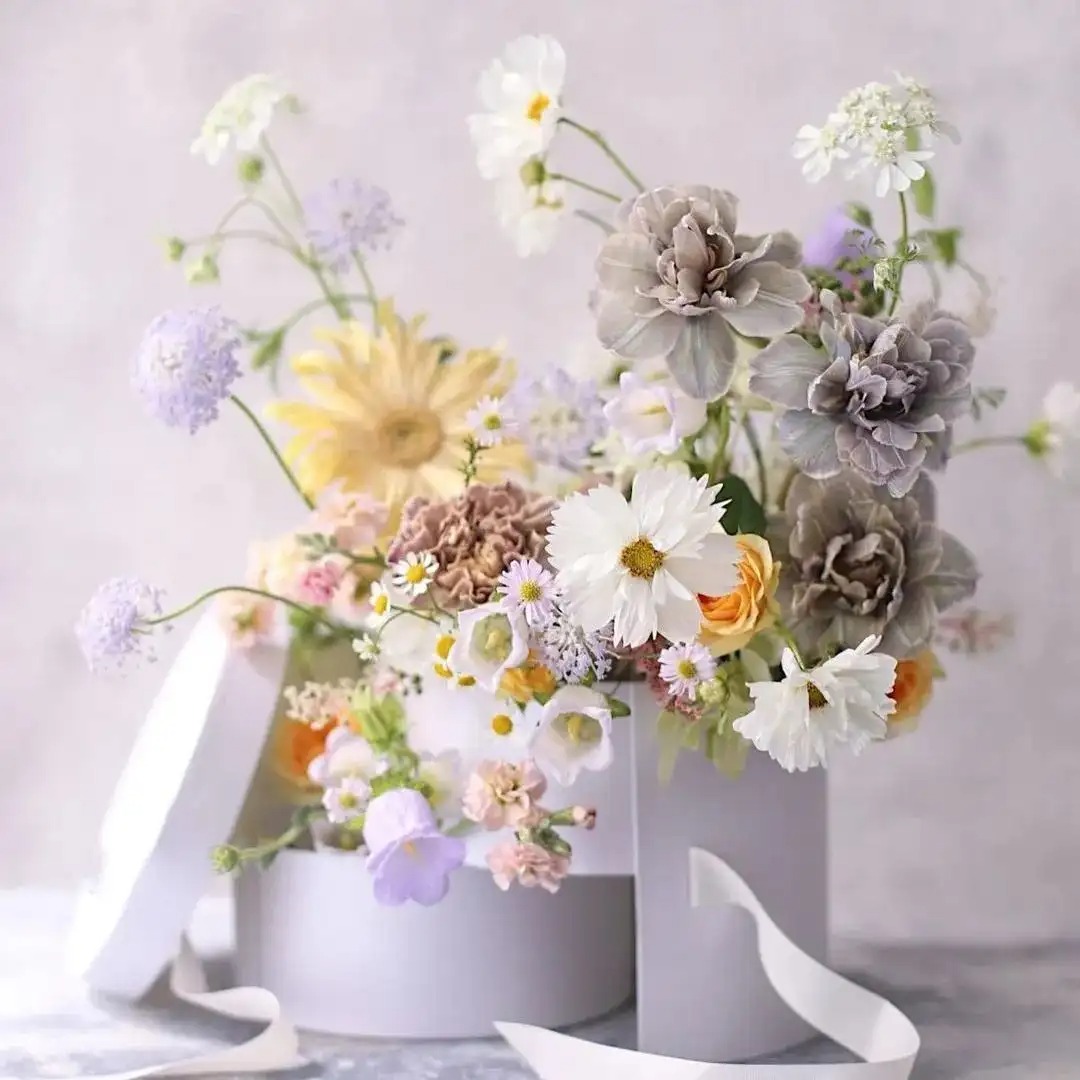
02 The flowers, branches and leaves are scattered on the top and gathered on the bottom. The lower part is prosperous with strong rhizomes; the upper part is sparse with various shapes.
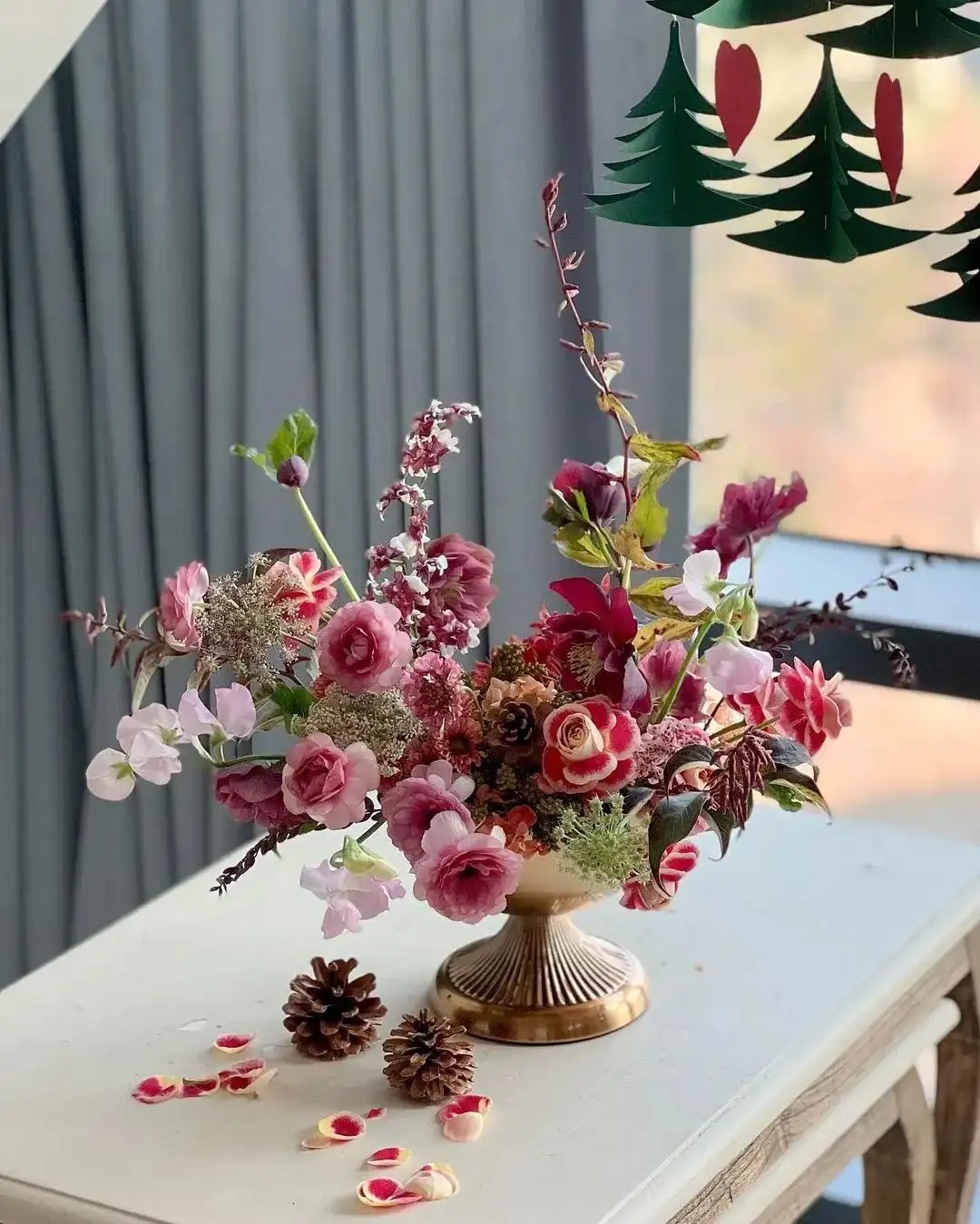
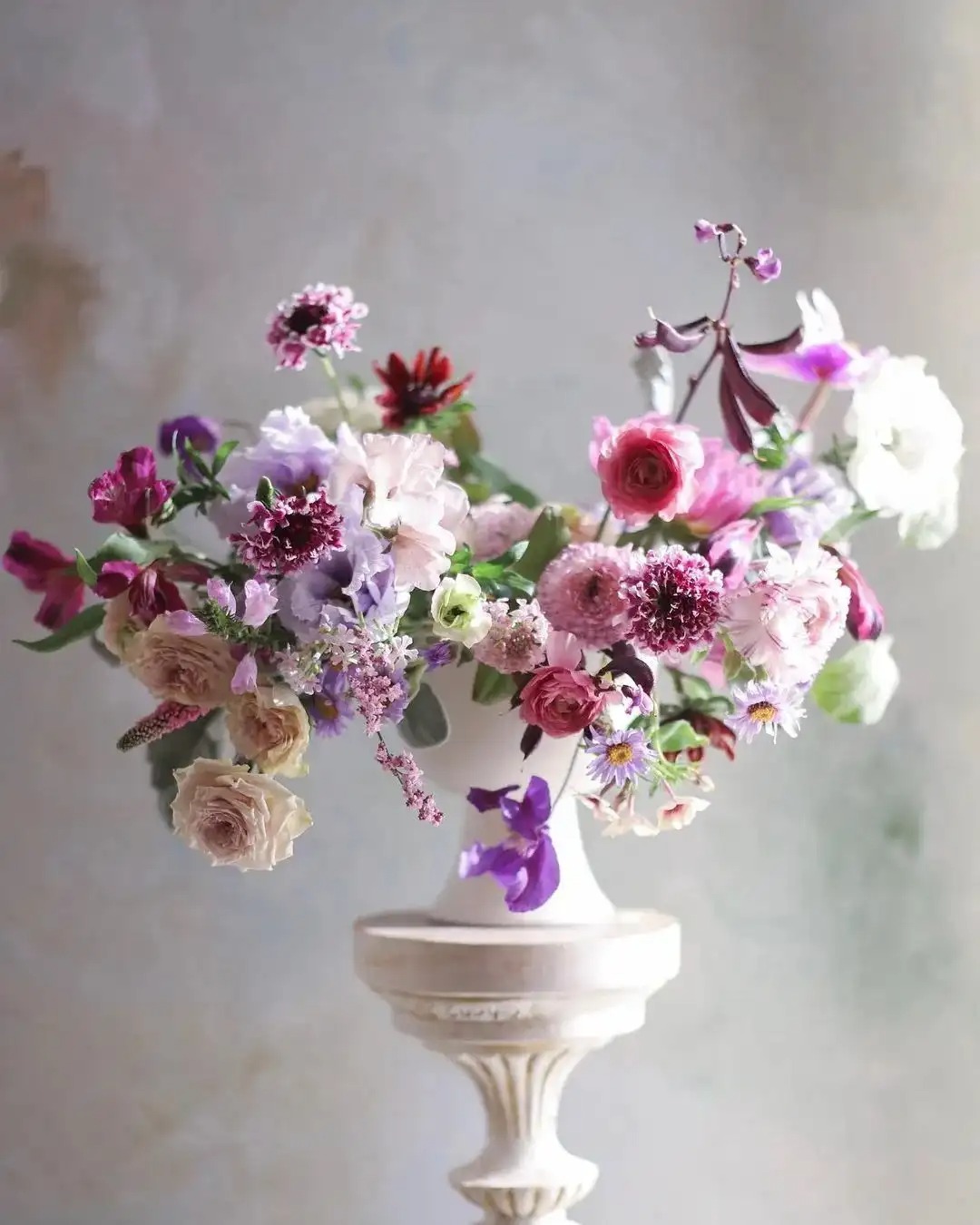
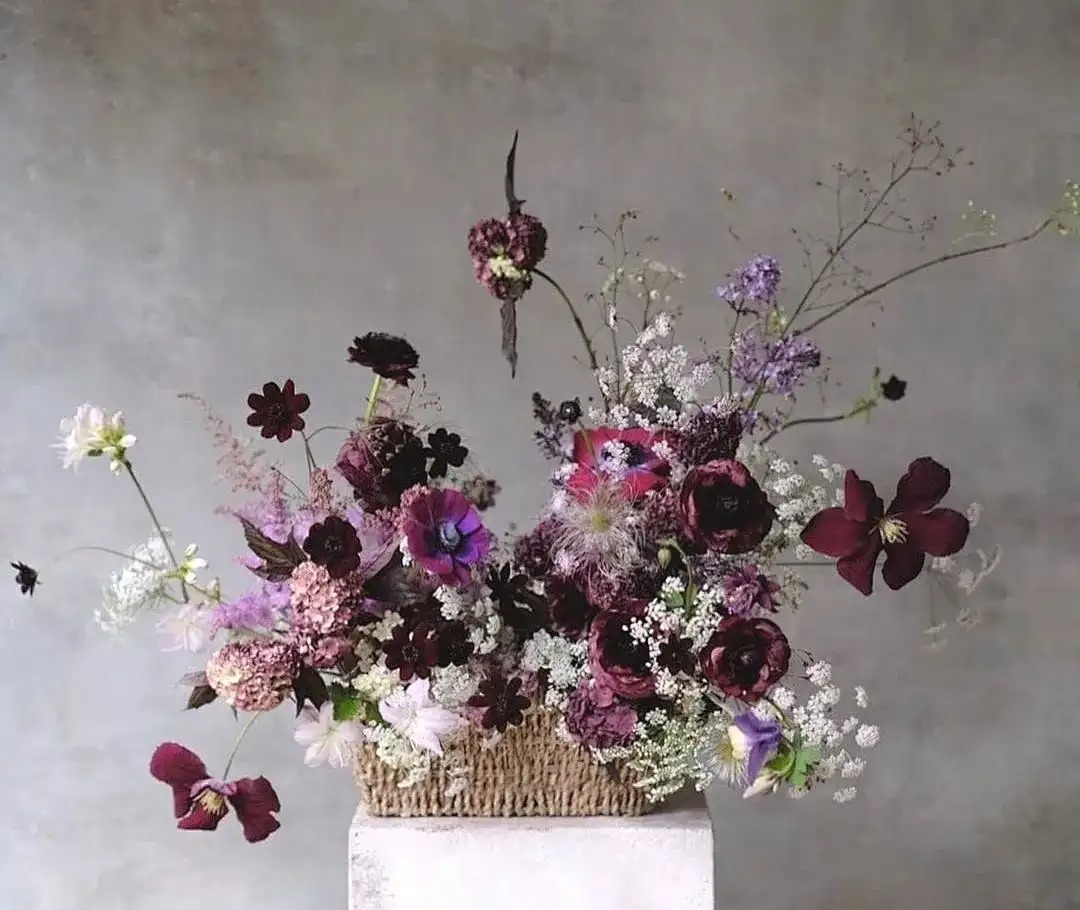
03
The positions of the flowers should be staggered front to back, and should never be placed on the same horizontal or straight line.
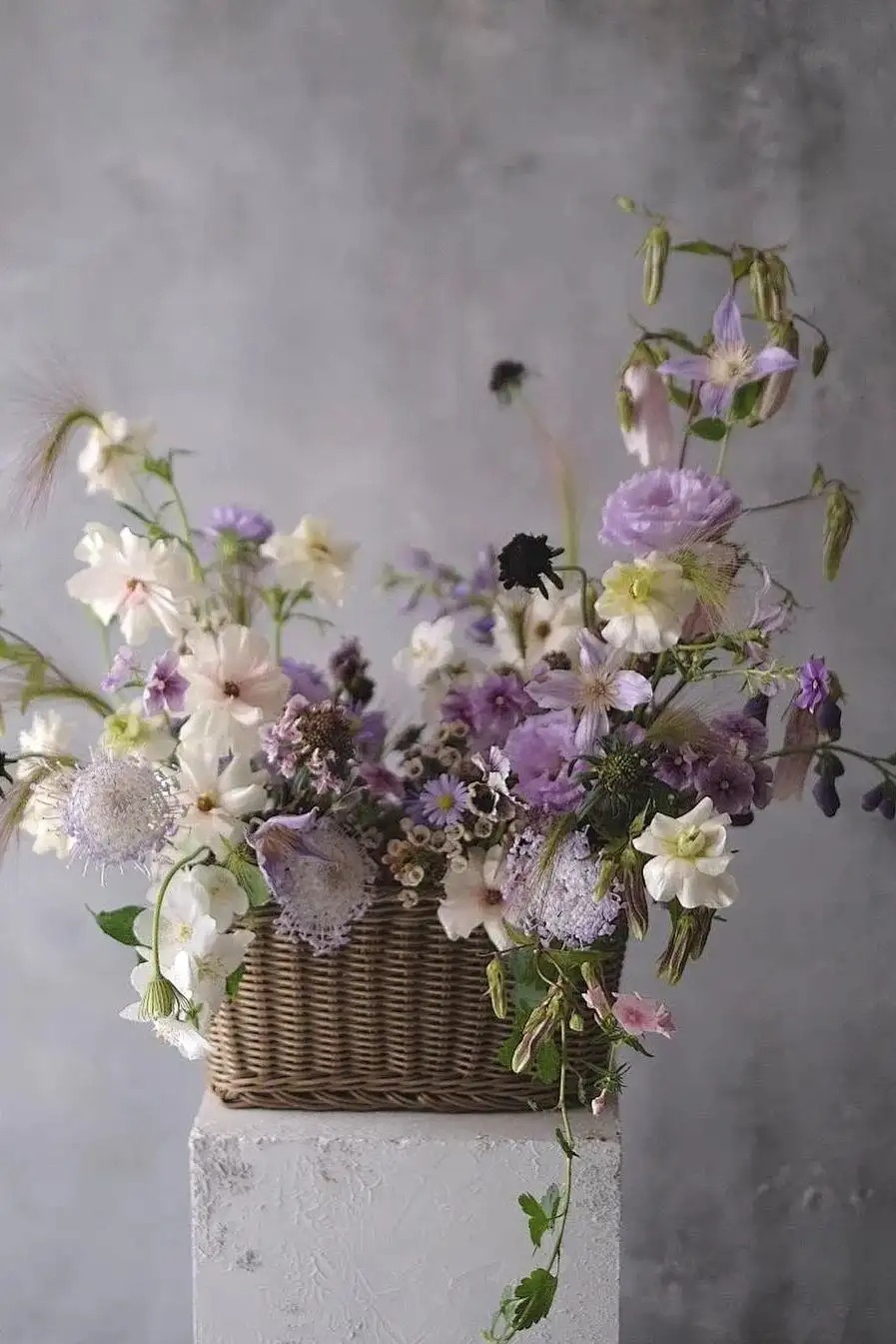
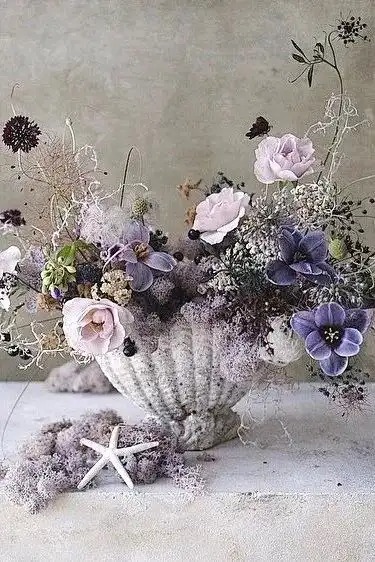
04Density and sparseness
Flowers and leaves should not be arranged at equal distances, but should be arranged in sparse and dense areas to create a sense of rhythm.
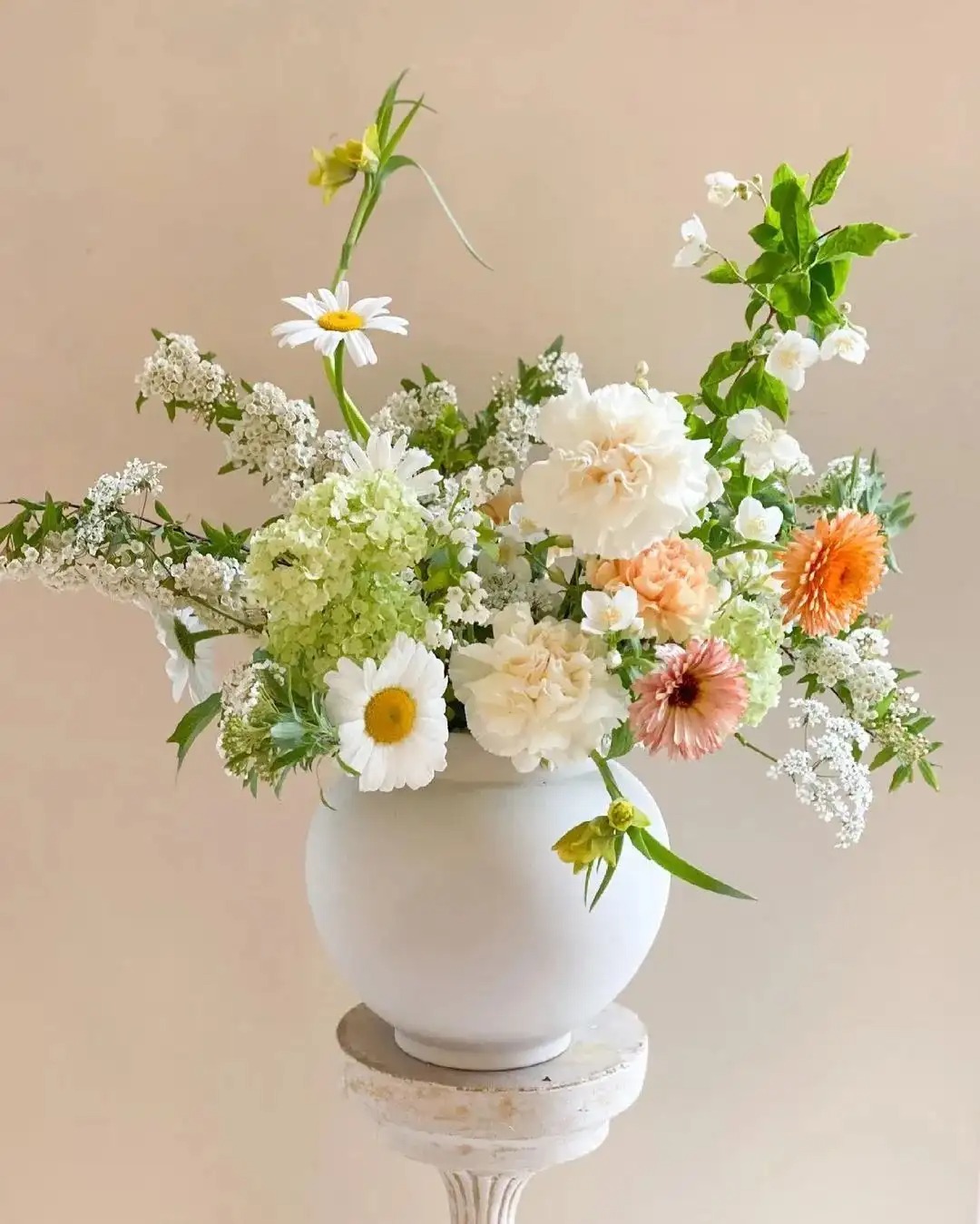
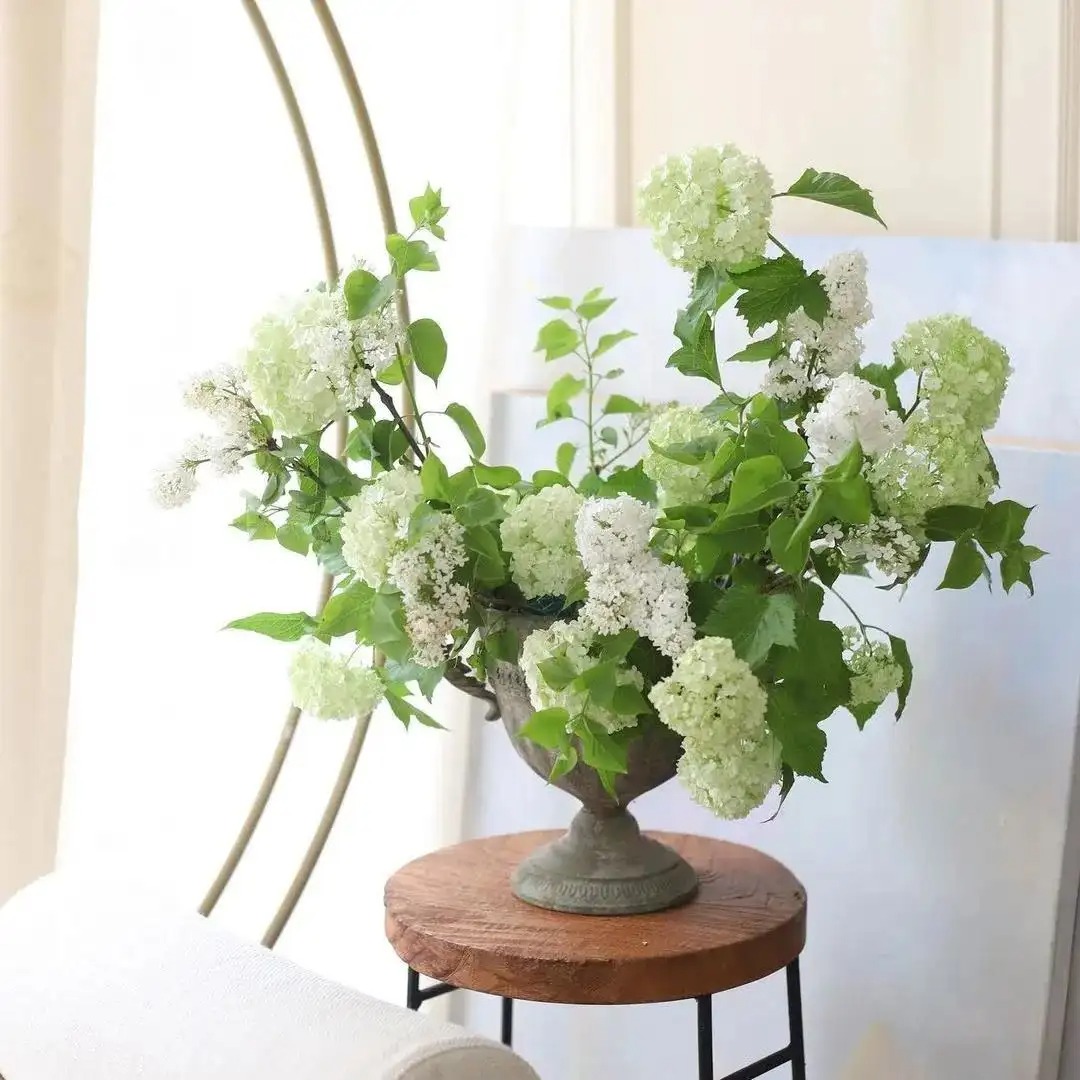
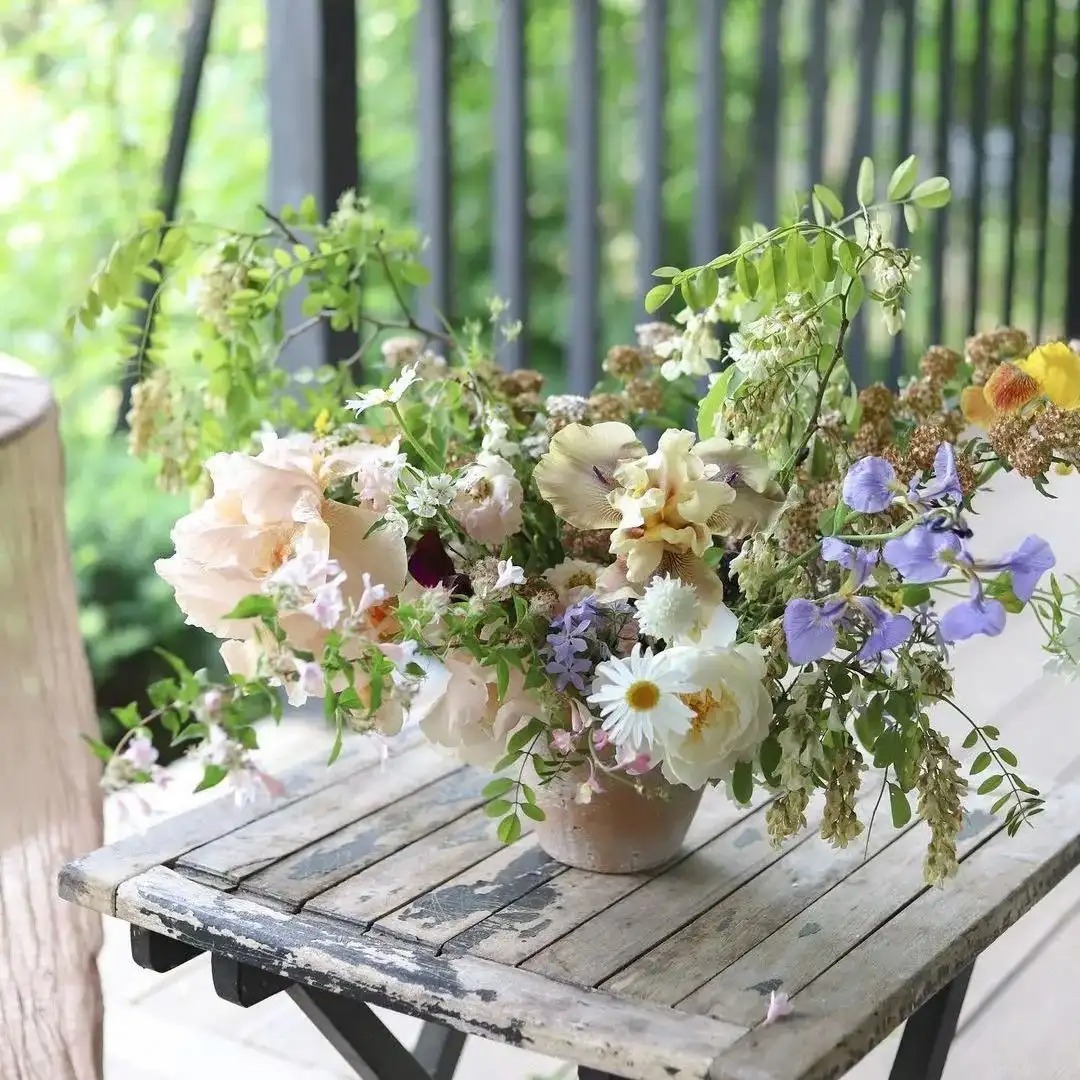
05
The center should be established for the echo of ups and downs, and the surrounding flowers and branches should echo each other around the center, which not only highlights the theme but also has a sense of balance.
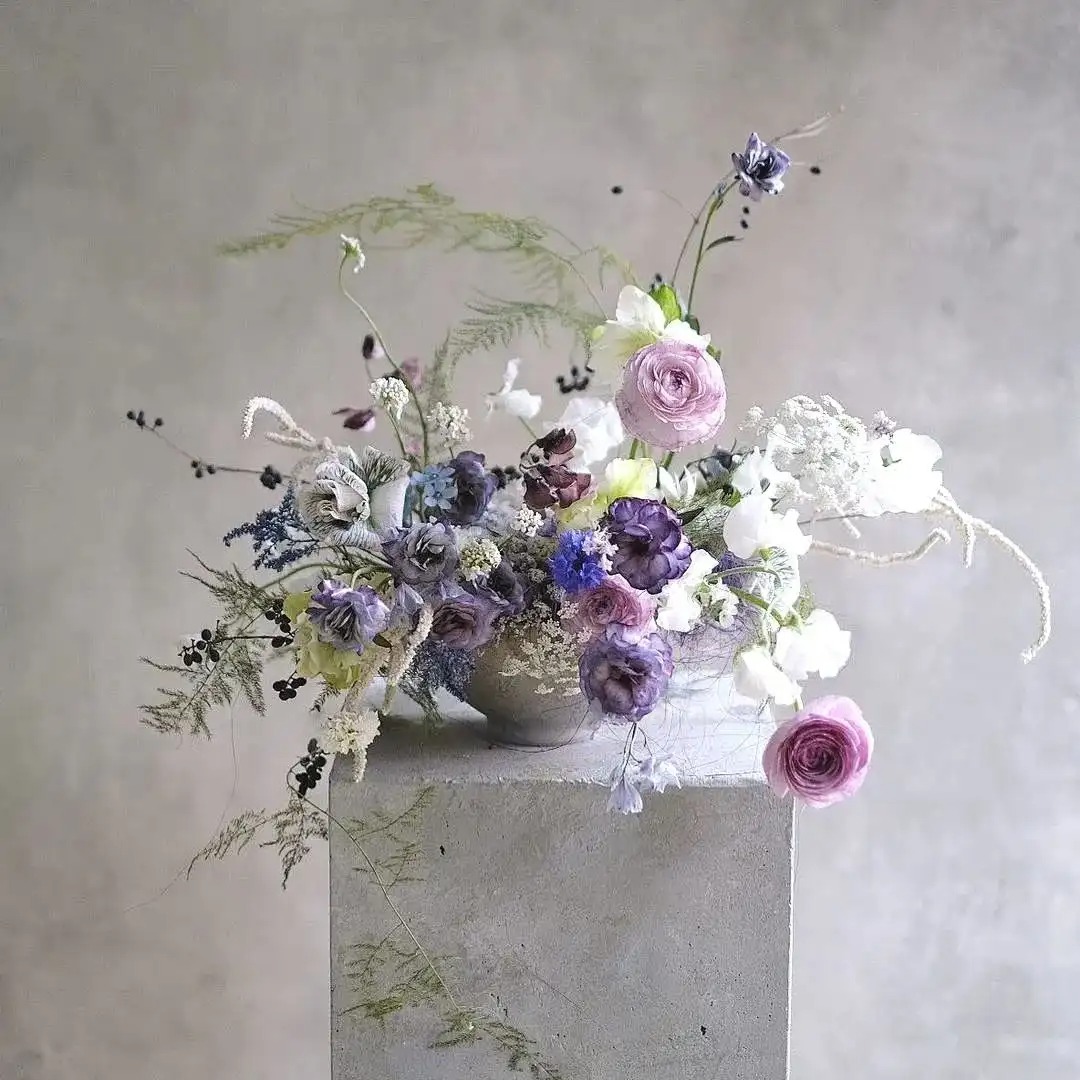
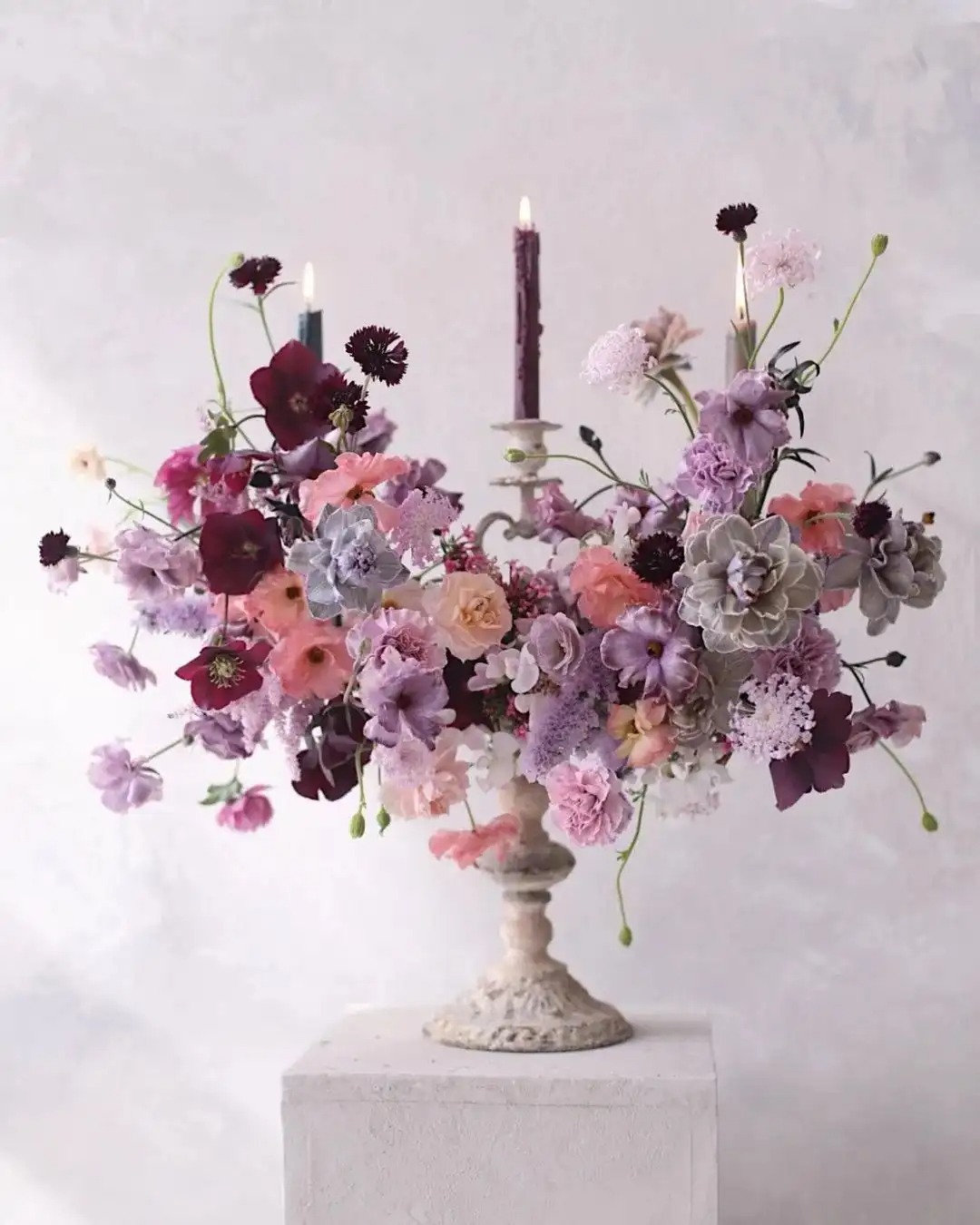
06 Combination of Reality and Illusion
: Flowers are real, leaves are imaginary. Flowers without leaves lack a foil, and leaves without flowers lack substance. This is what we call "red flowers still need green leaves to support them."
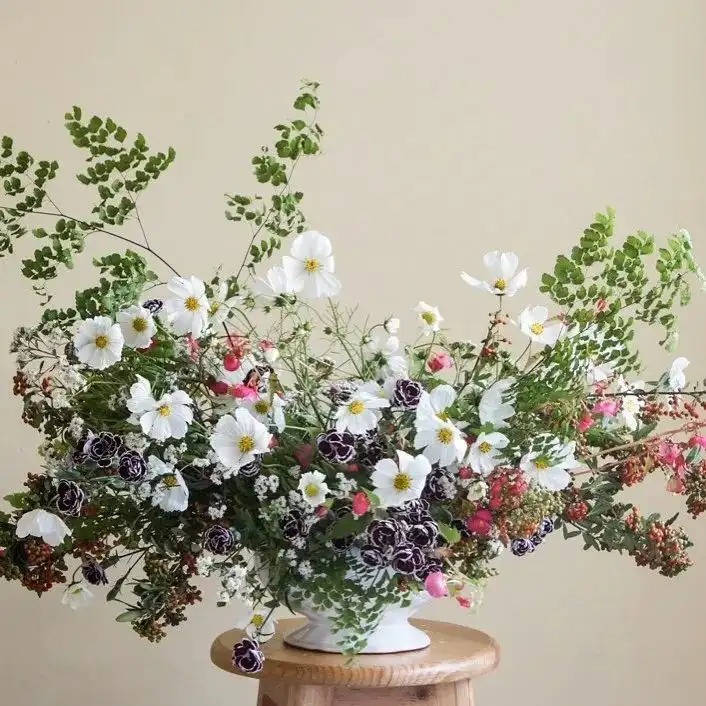
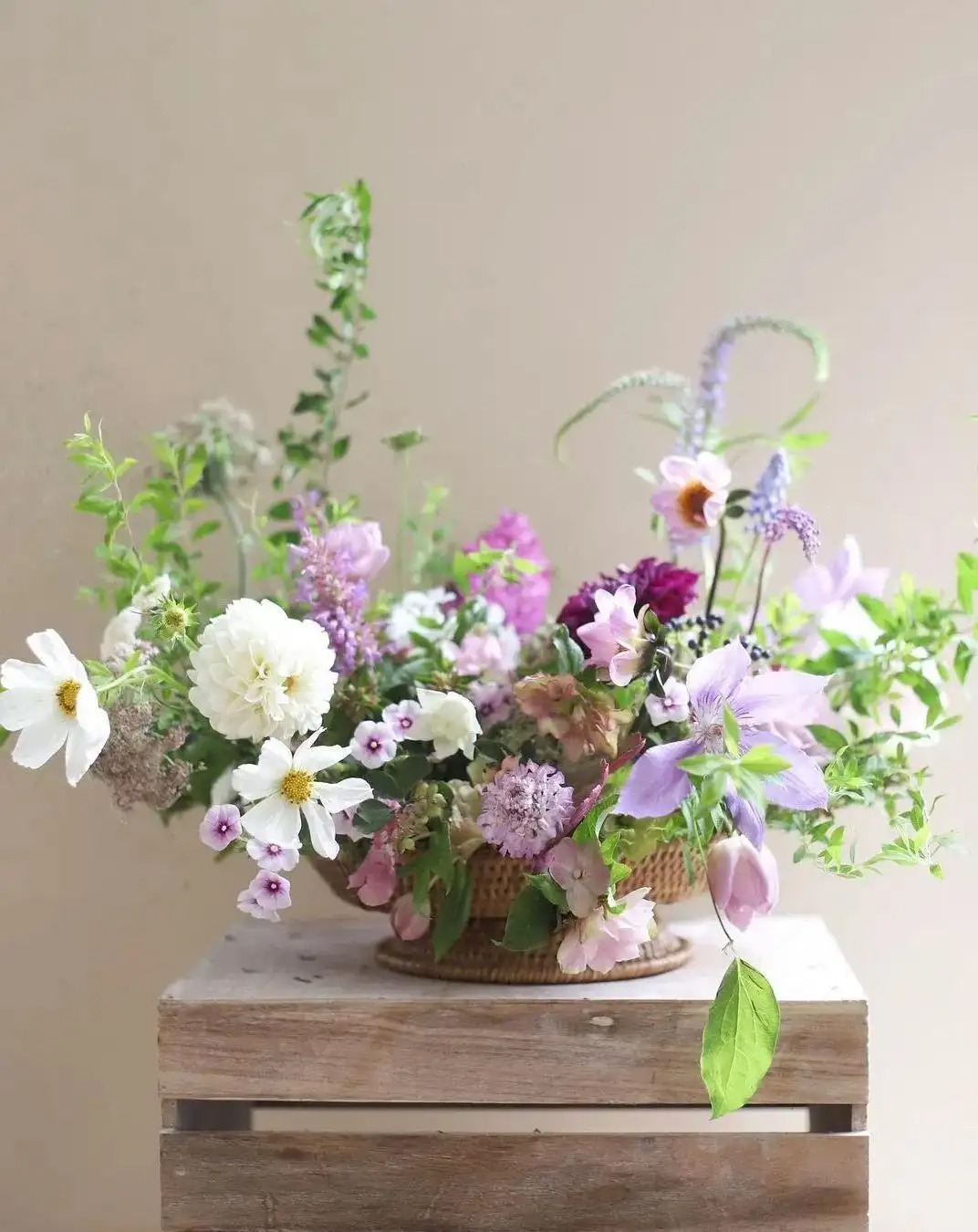
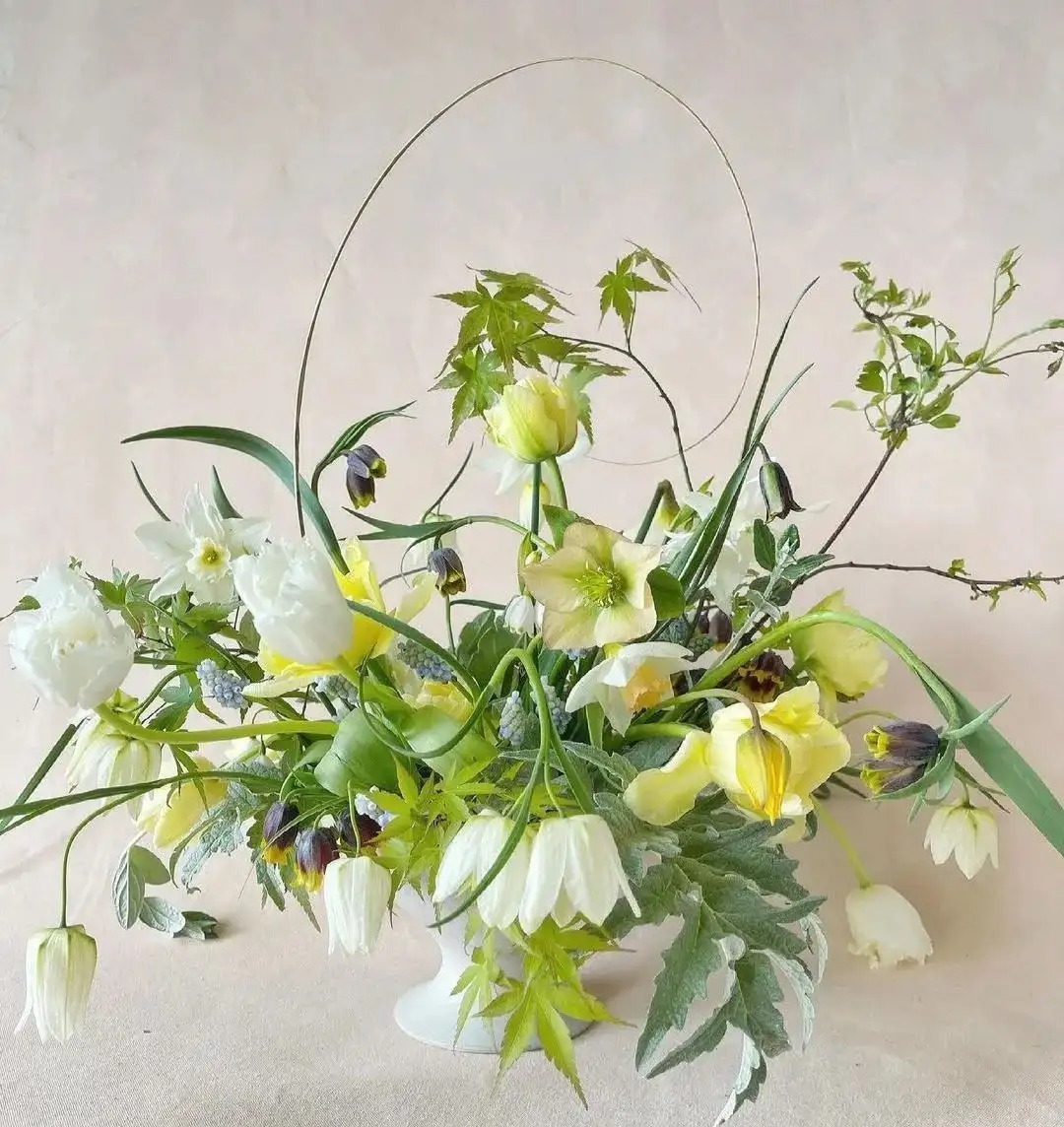
07 The
combination of movement and stillness requires both static symmetry and dynamic irregularity.
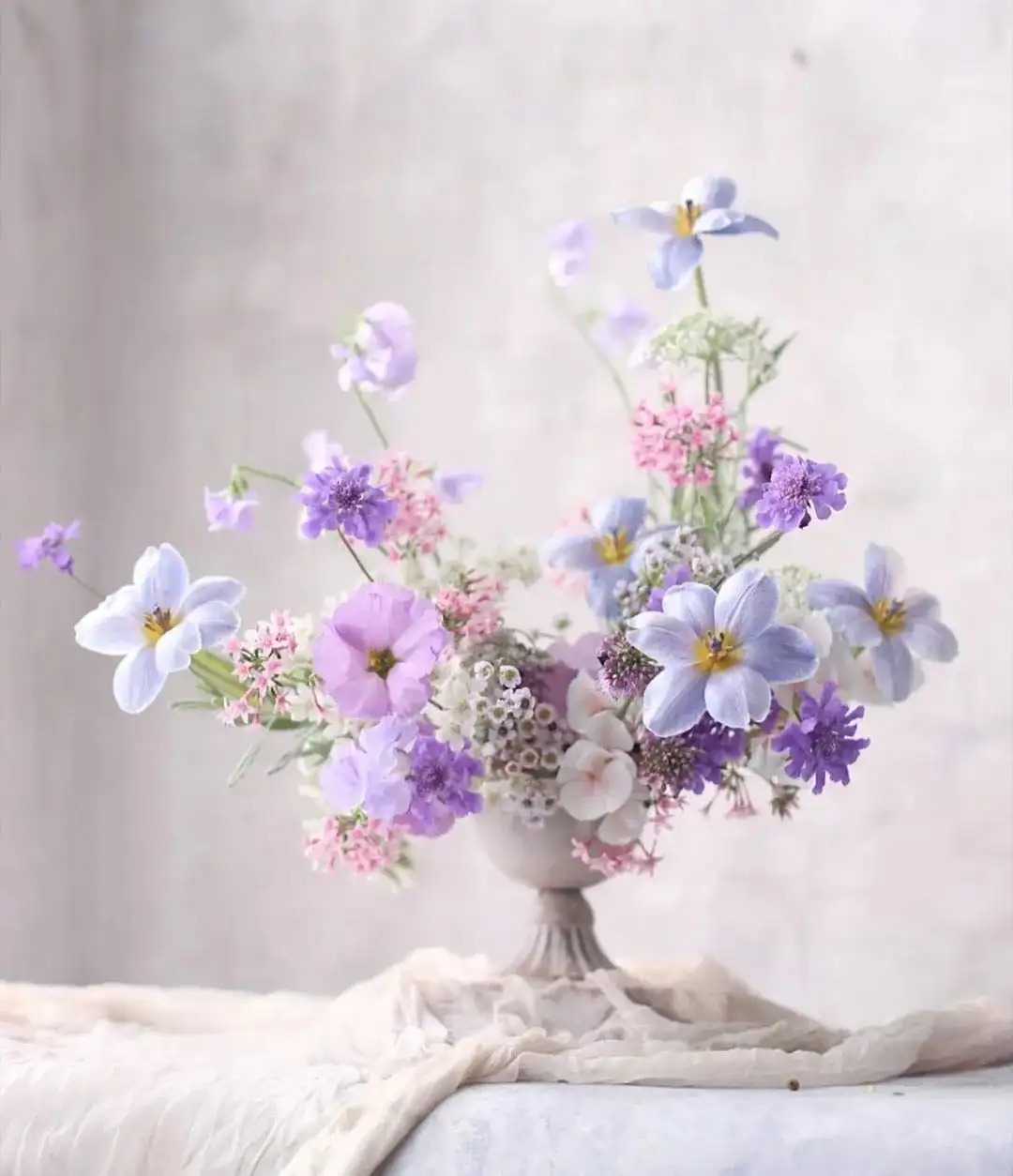
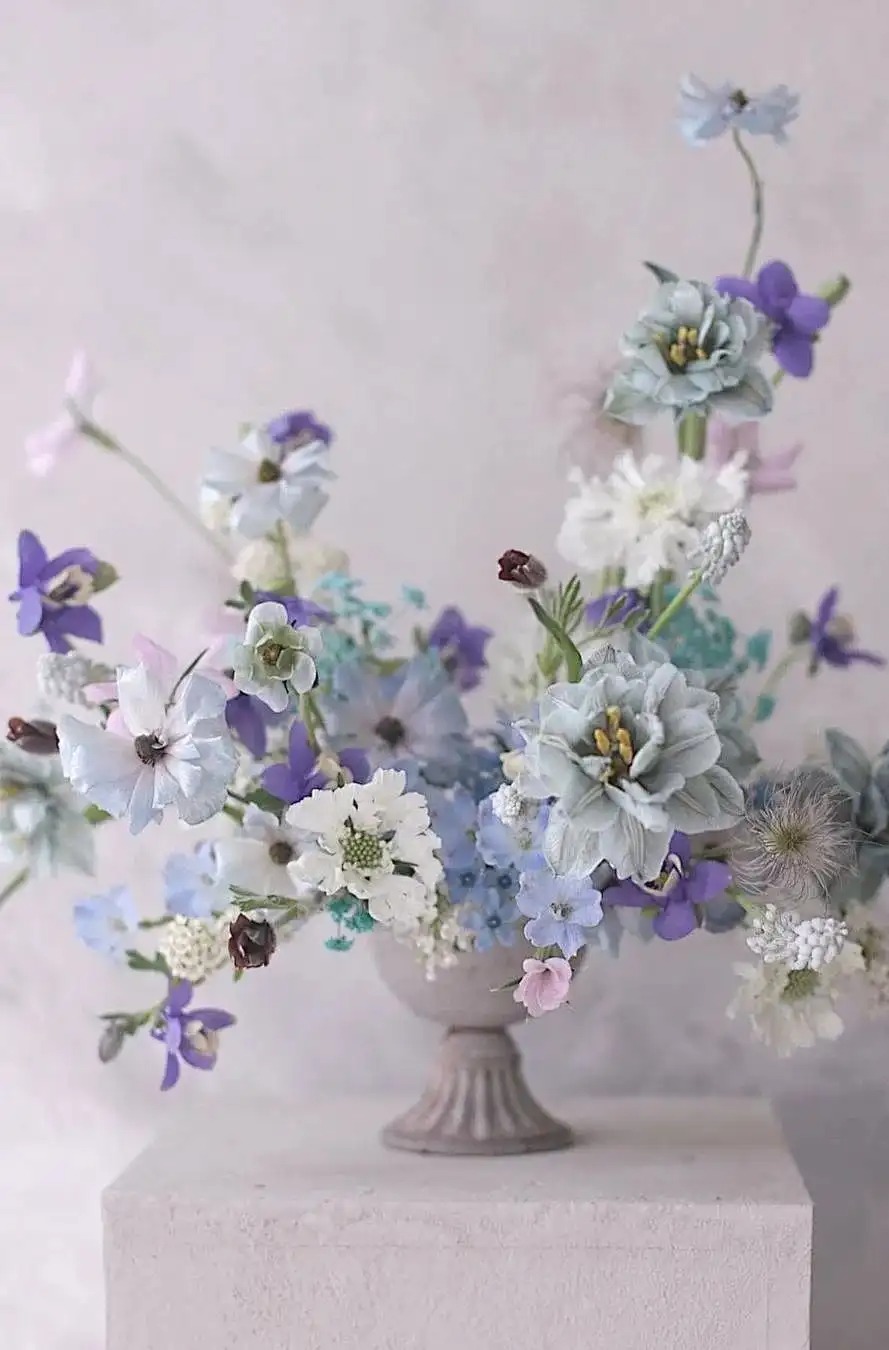
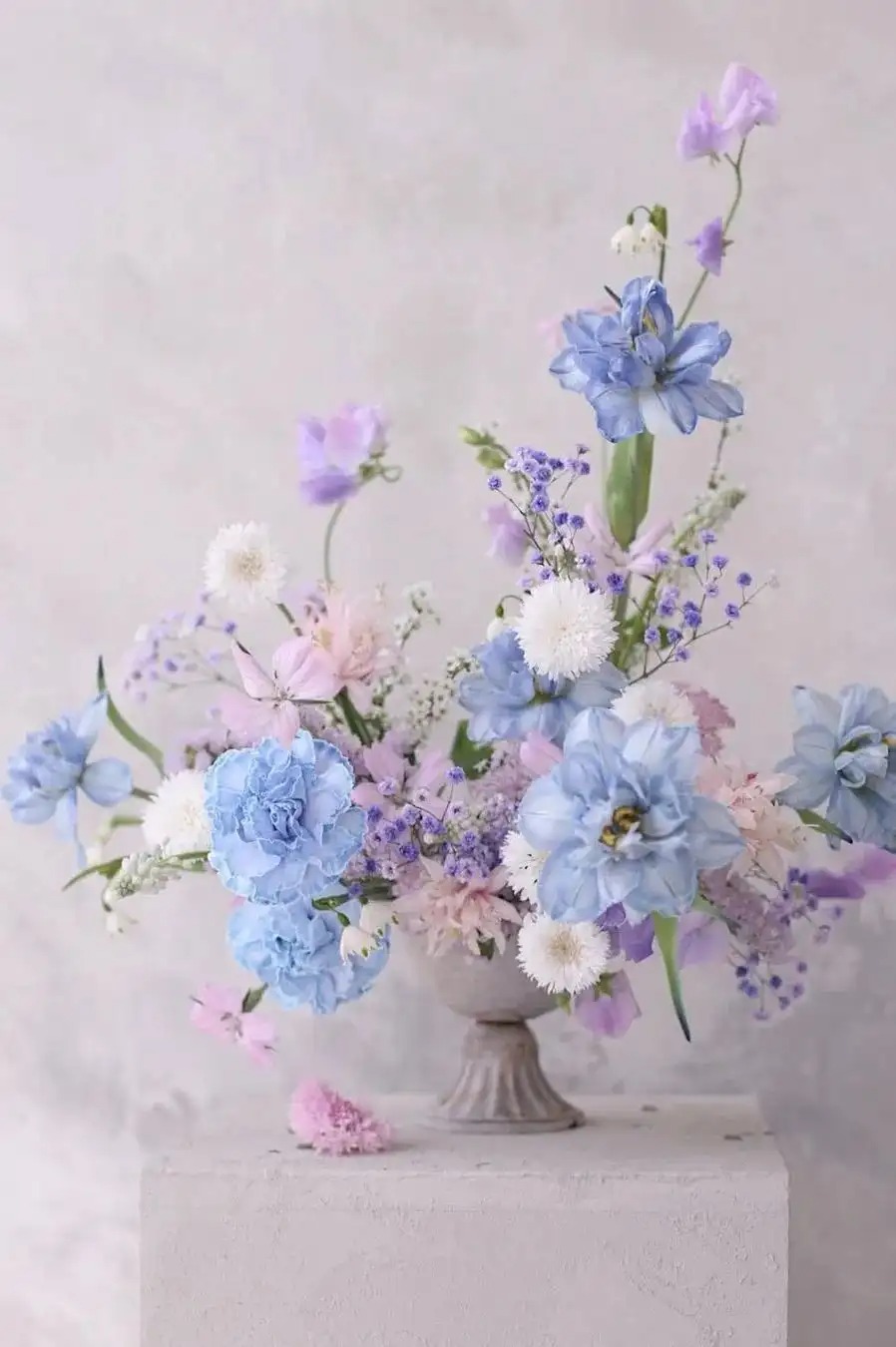
08 Both solemn and humorous
It should have both classical elegance and balance, and at the same time, create a unique artistic conception through changes in material selection and composition.
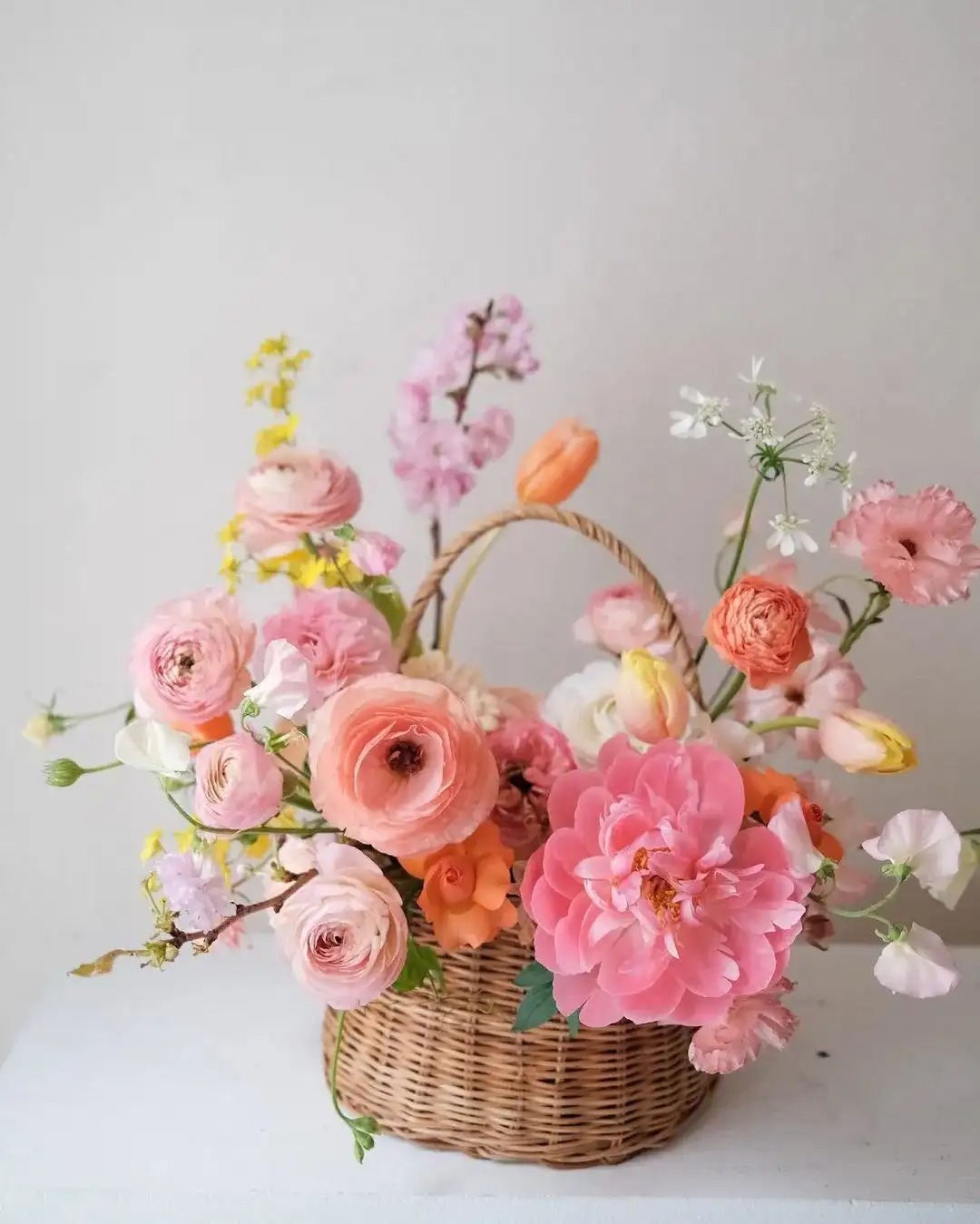
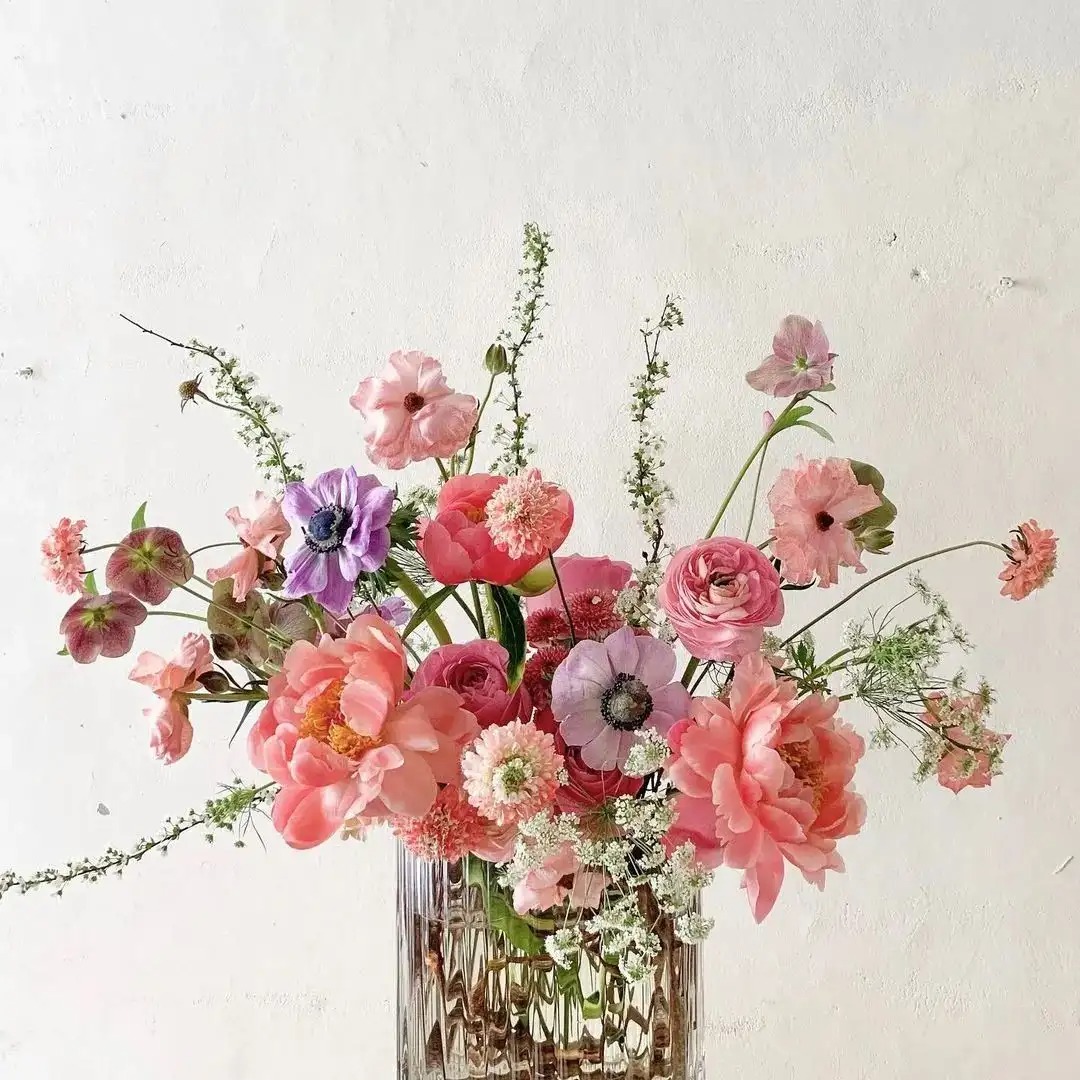
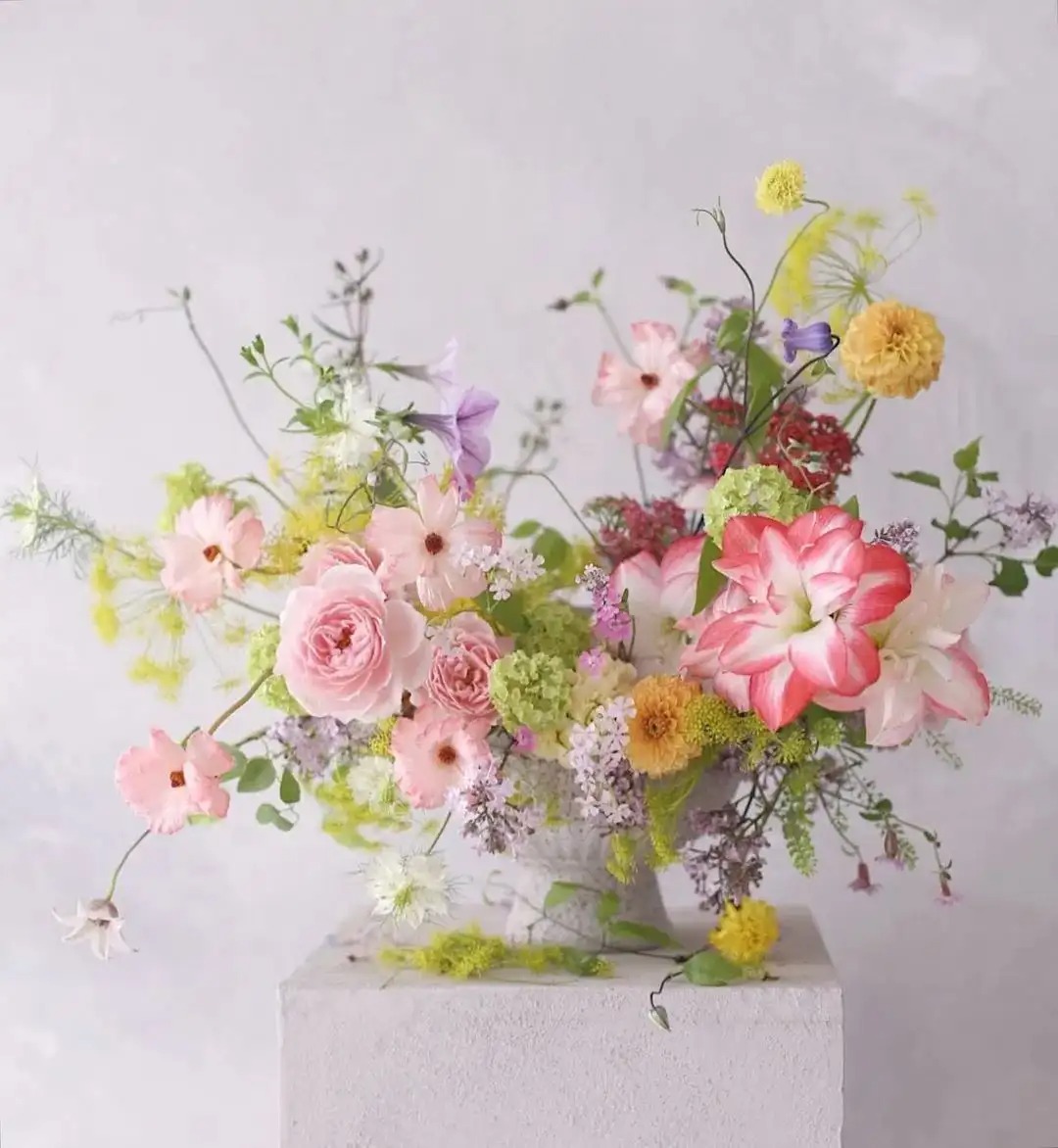
The basic sense of hierarchy in flower art reflects that
plants grow freely in nature, so they have various forms and possibilities. Whether it is a bouquet, a wedding or a space flower art, the sense of hierarchy is indispensable. So, how to reflect the basic sense of hierarchy in flower art?
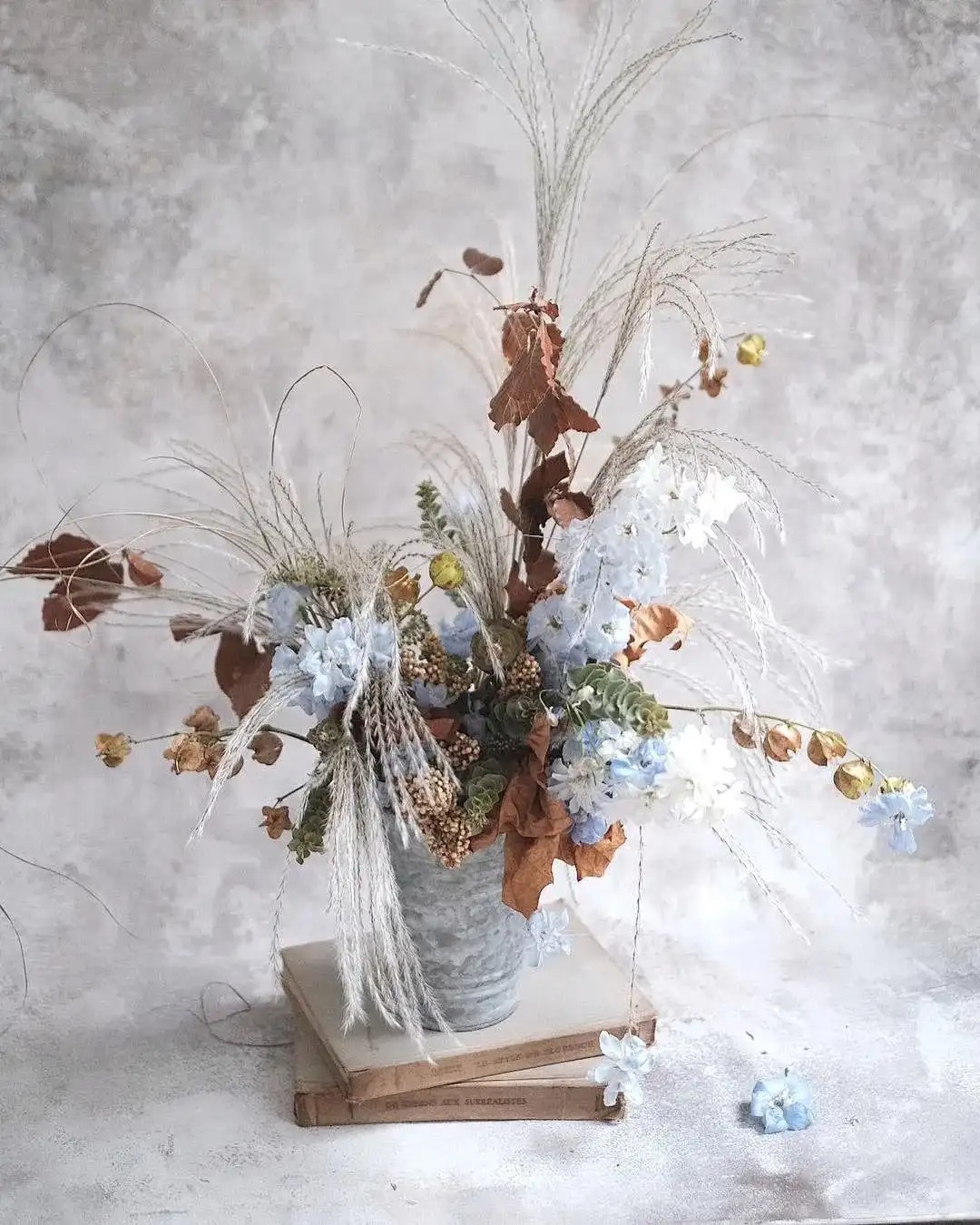
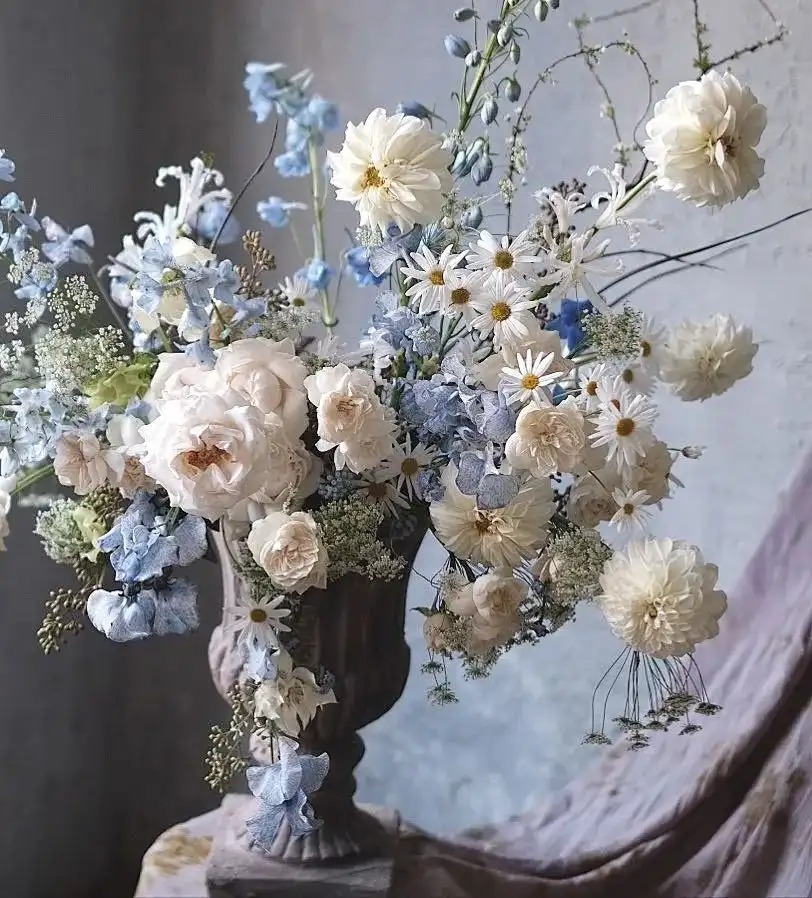
01 The size contrast between flowers
is generally understood as creating a sense of hierarchy through the combination of flowers of different sizes. The stronger the size contrast, the more obvious the sense of hierarchy.
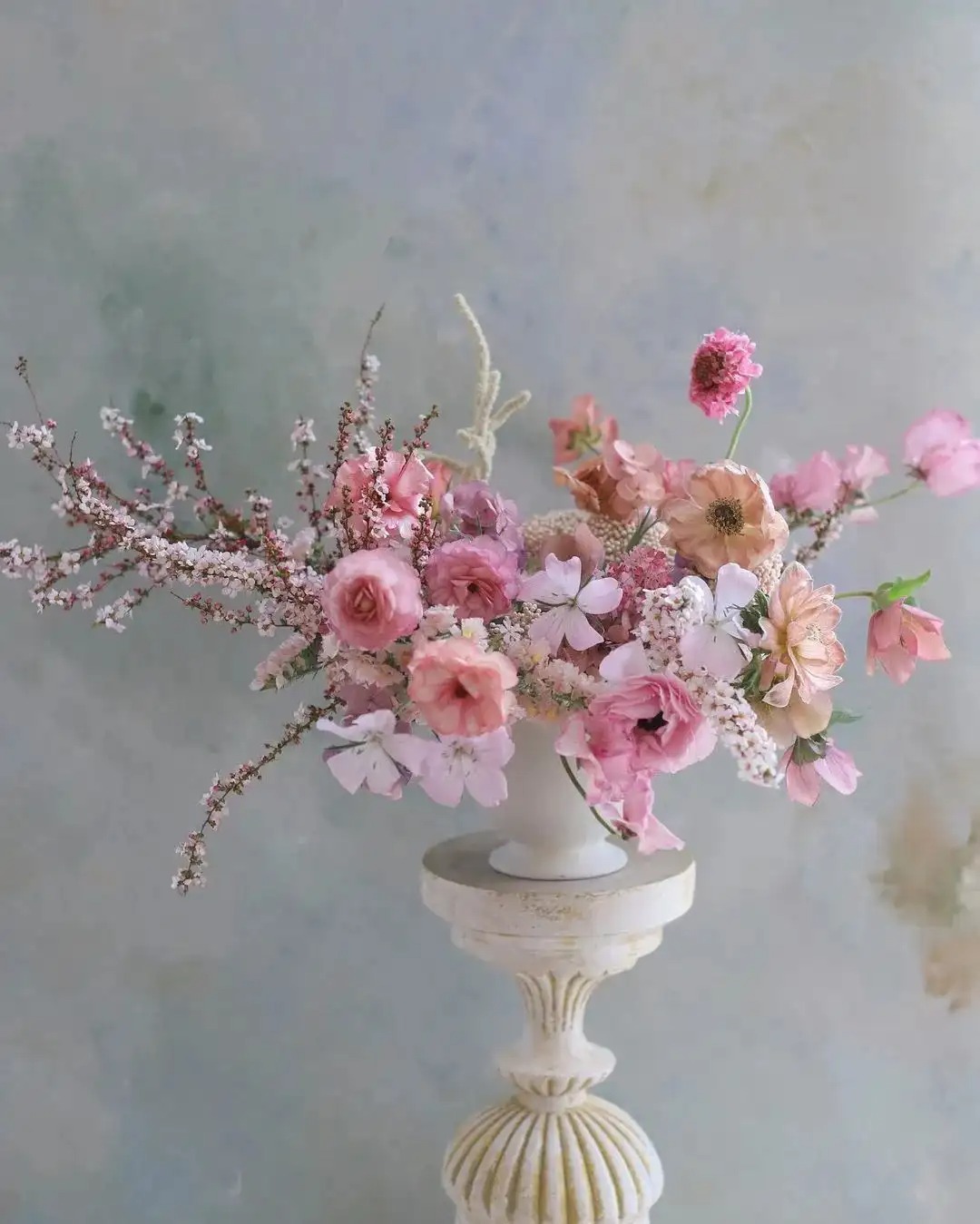
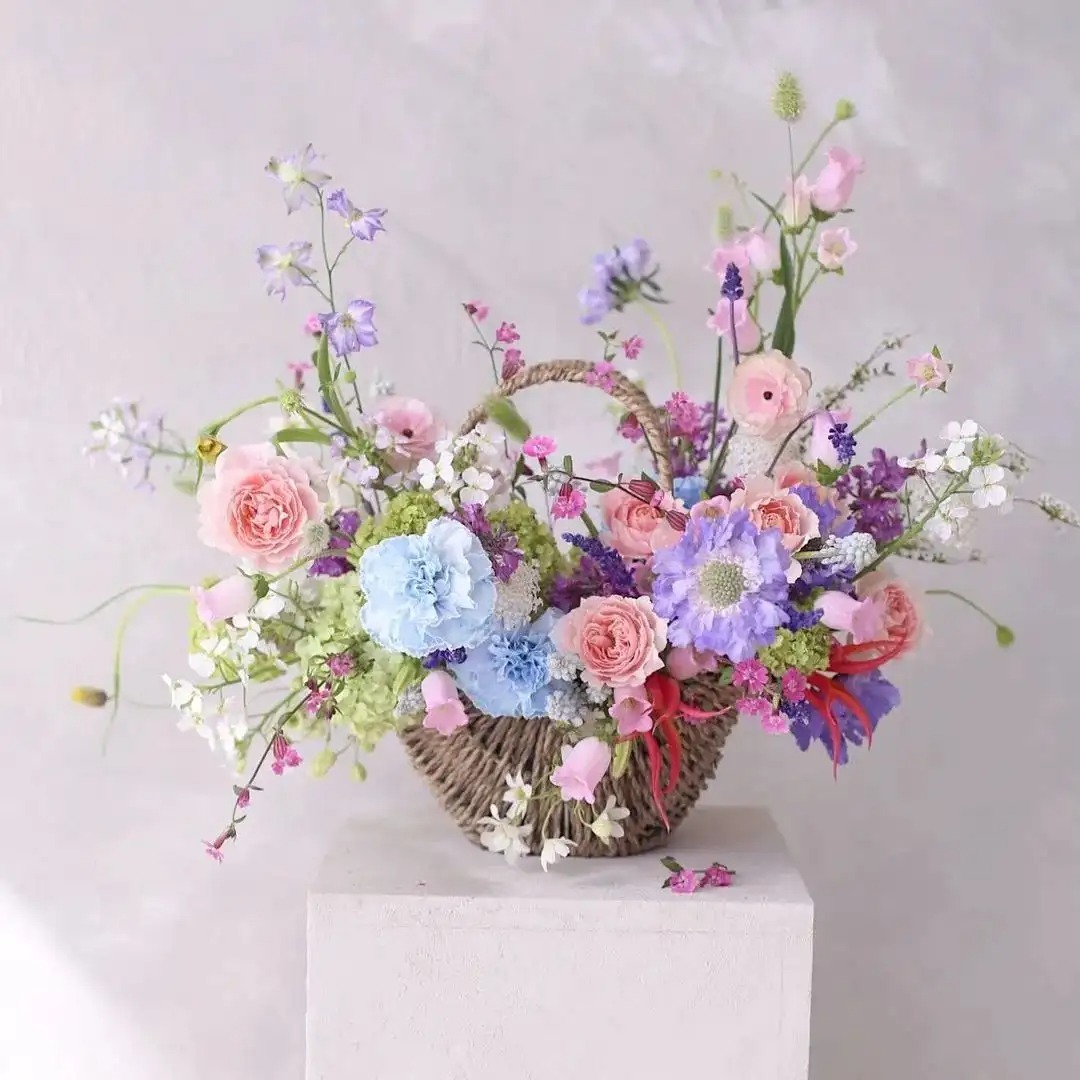
02 The spatial relationship between flowers
: the layers should be rich and the space should be well-arranged. The same flower has different heights, growth directions, and front and back virtuality and reality.
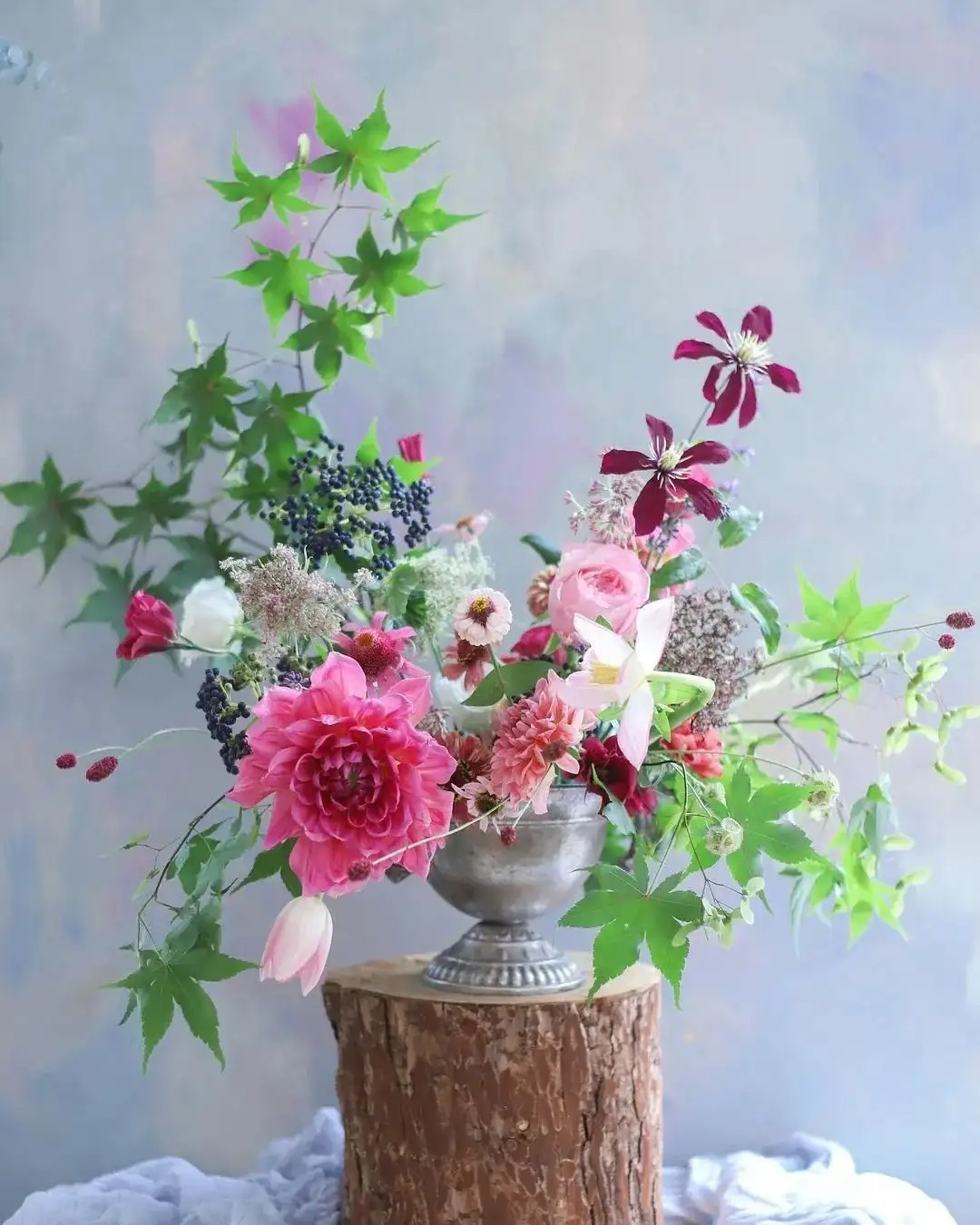

03 Color matching methods and proportions
The sense of hierarchy can be reflected through different color matching methods, such as contrasting colors, complementary colors, adjacent colors, similar colors, etc.
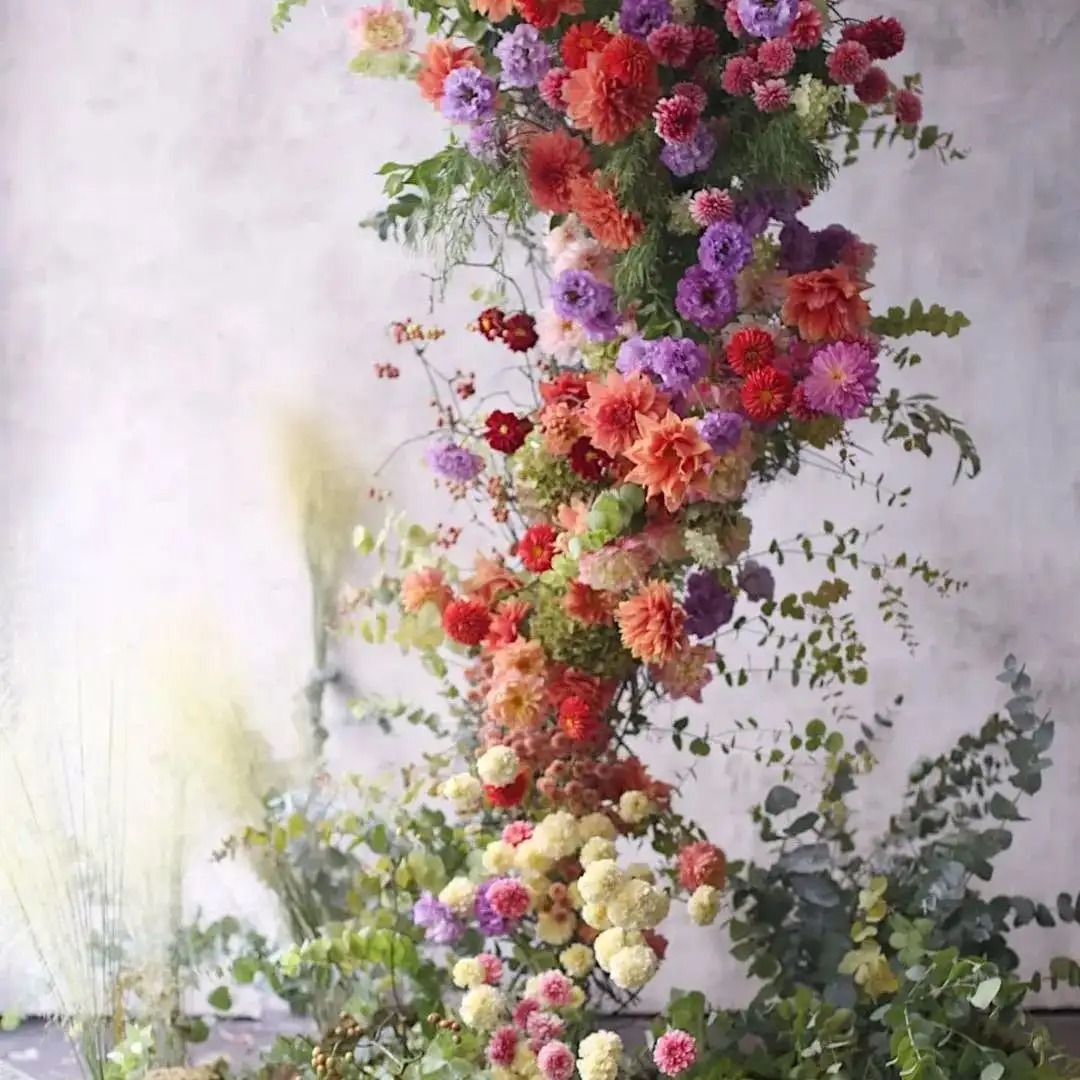
04 Combination of flowers of different shapes
: The combination of points, lines and surfaces, the comprehensive use of scattered flowers (points), lines (linear flowers), and surfaces (clump-shaped flowers, special-shaped flowers) increase the difference in shape.
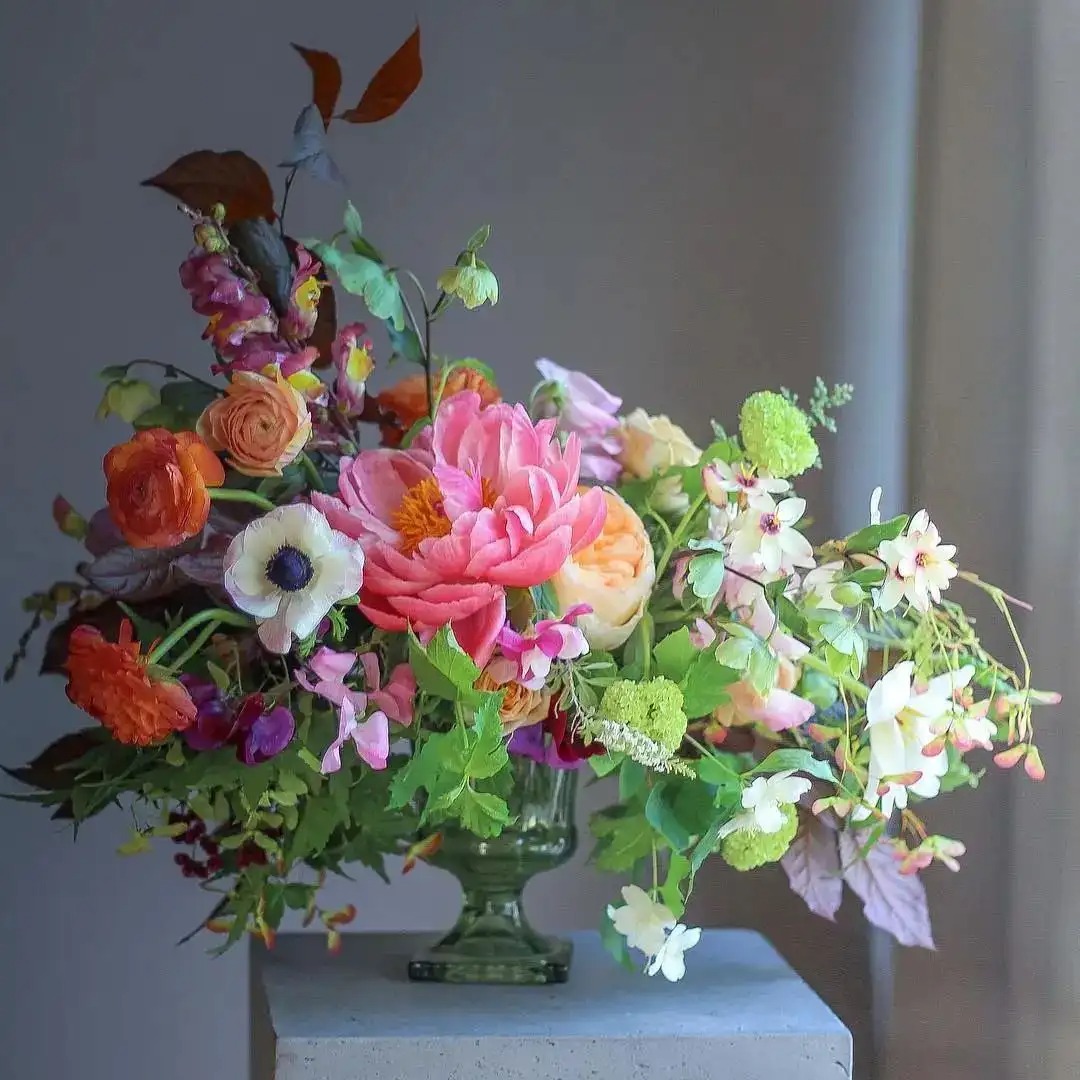
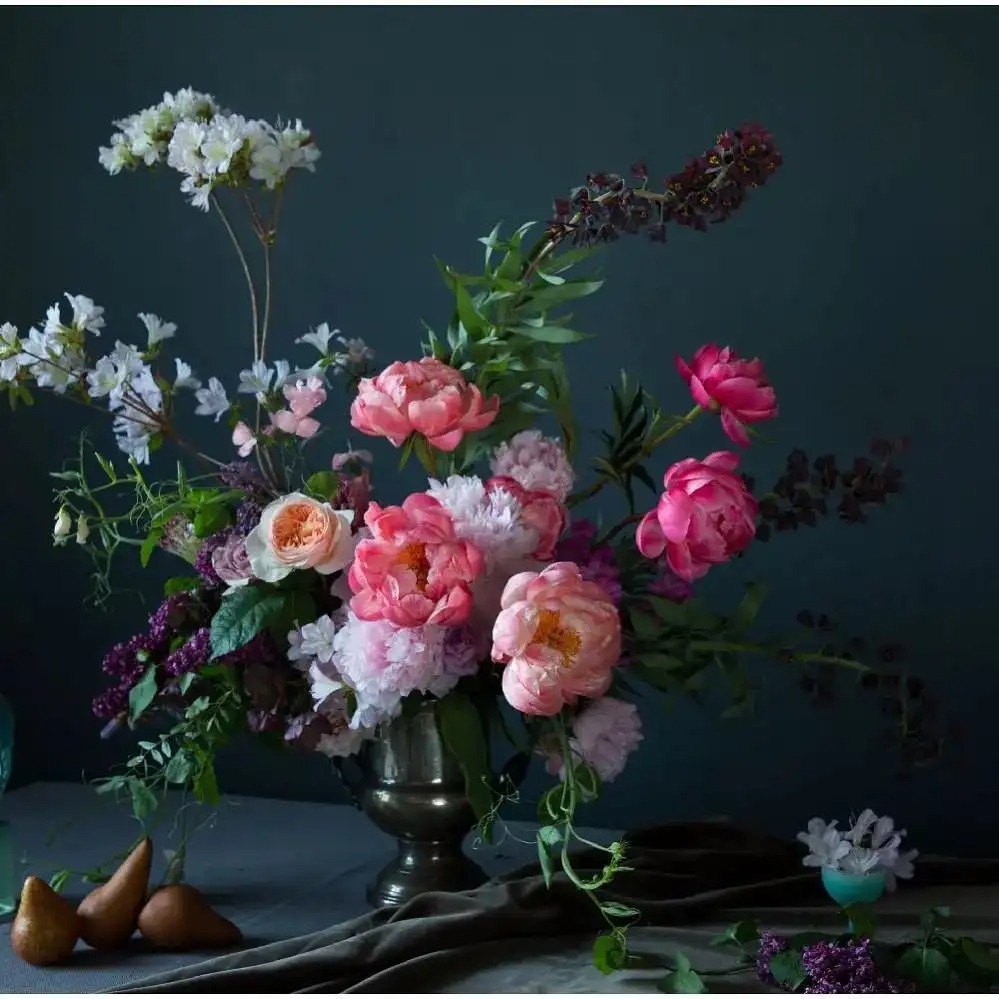
If you want to make more progress in flower arrangement, you need to read more, learn more and practice more. Then you will find that flower arrangement is actually a fun thing.
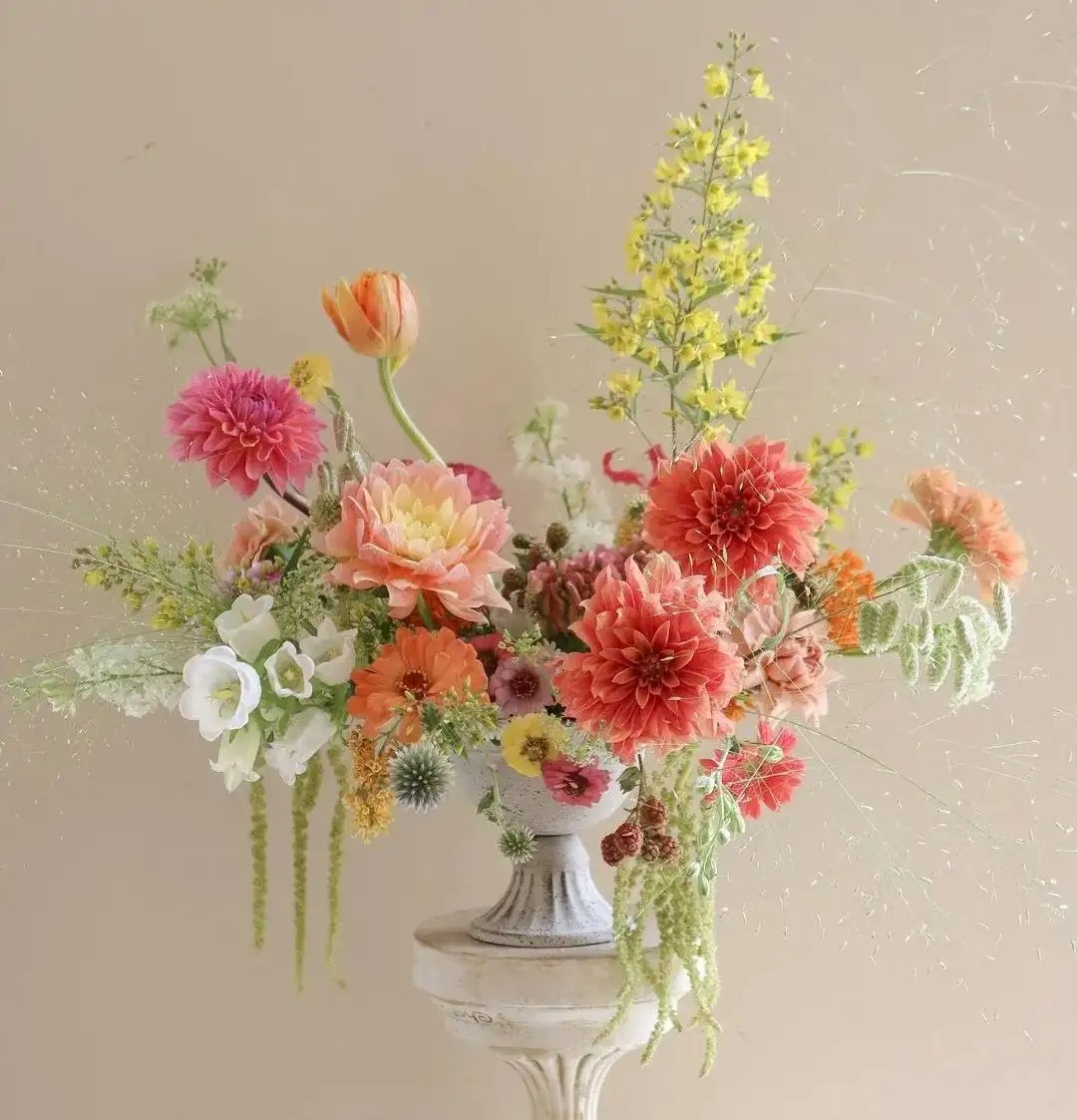
The pictures are all from the Internet. If there is any infringement, please contact us.